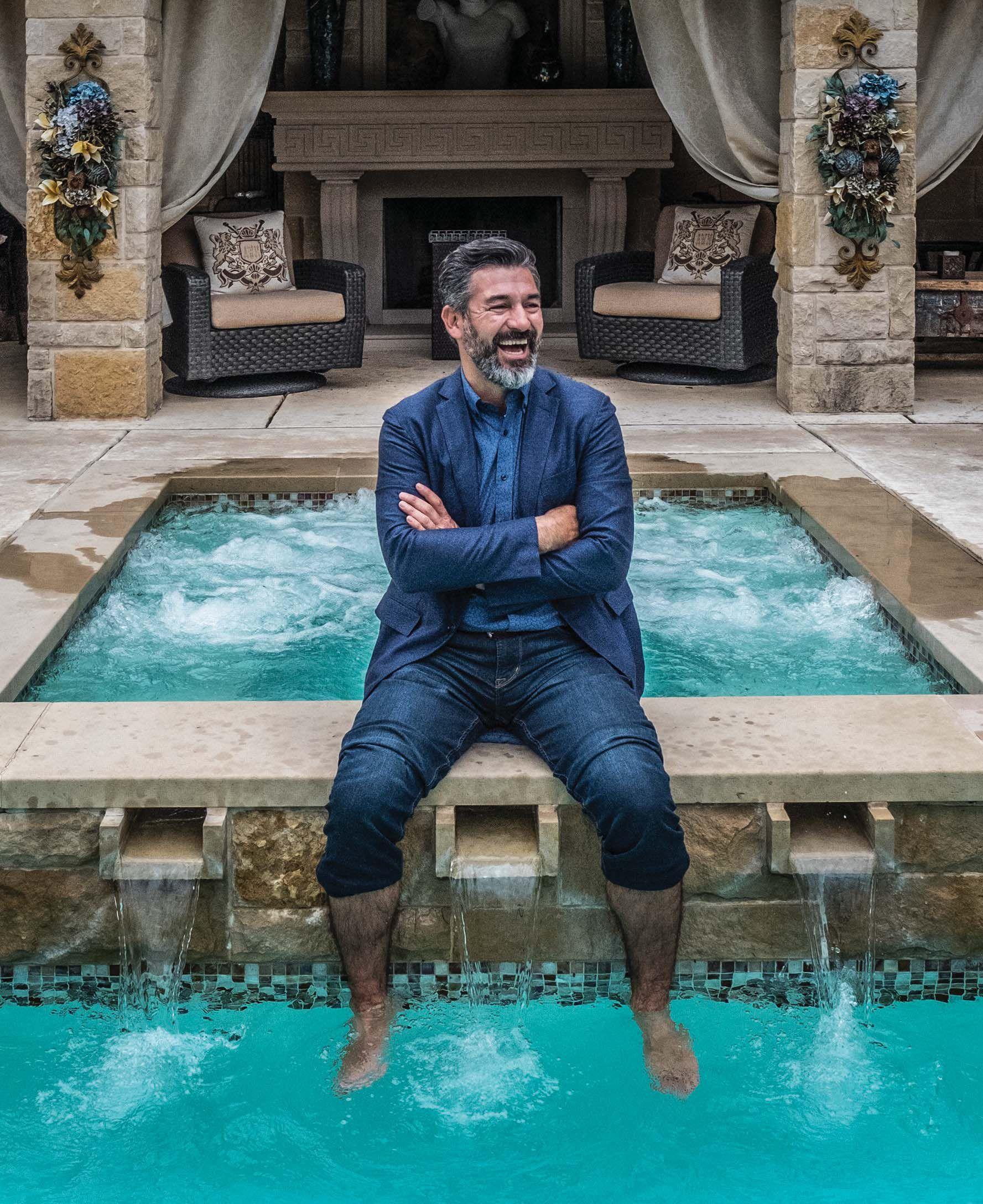
















South by Southeast
Developers slowly find their footing in Southeast Fort Worth’s grittiest neighborhoods. Spec Homes in Como?
A builder puts up 13, and they sell in a flash.


Entrepreneur – and part-time Texas legislator –Ramon Romero builds a life’s business in luxury pools, stone, and rehabbing houses in his Poly backyard. And, about that restaurant…



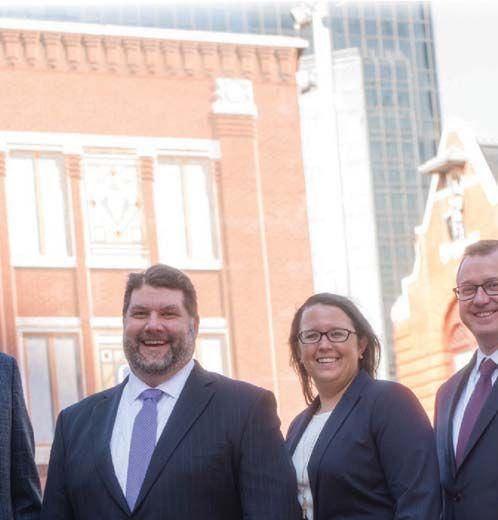
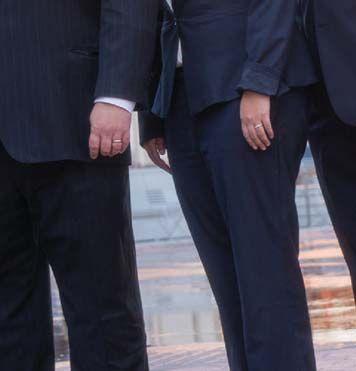
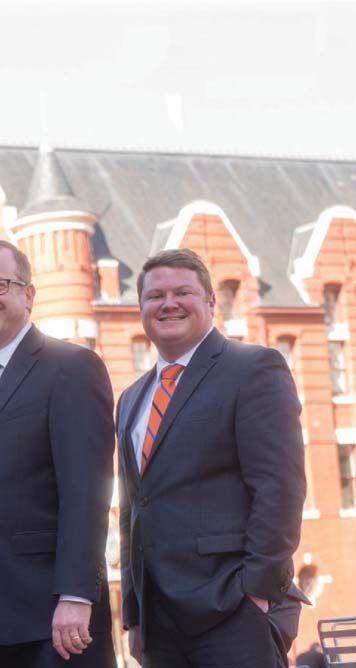

Breadth of knowledge and depth of experience are essential in an ever-changing real estate market. For more than 30 years, our professionals have provided audit, tax, fund administration, and consulting services to real estate developers, lenders, contractors and investors around the country.

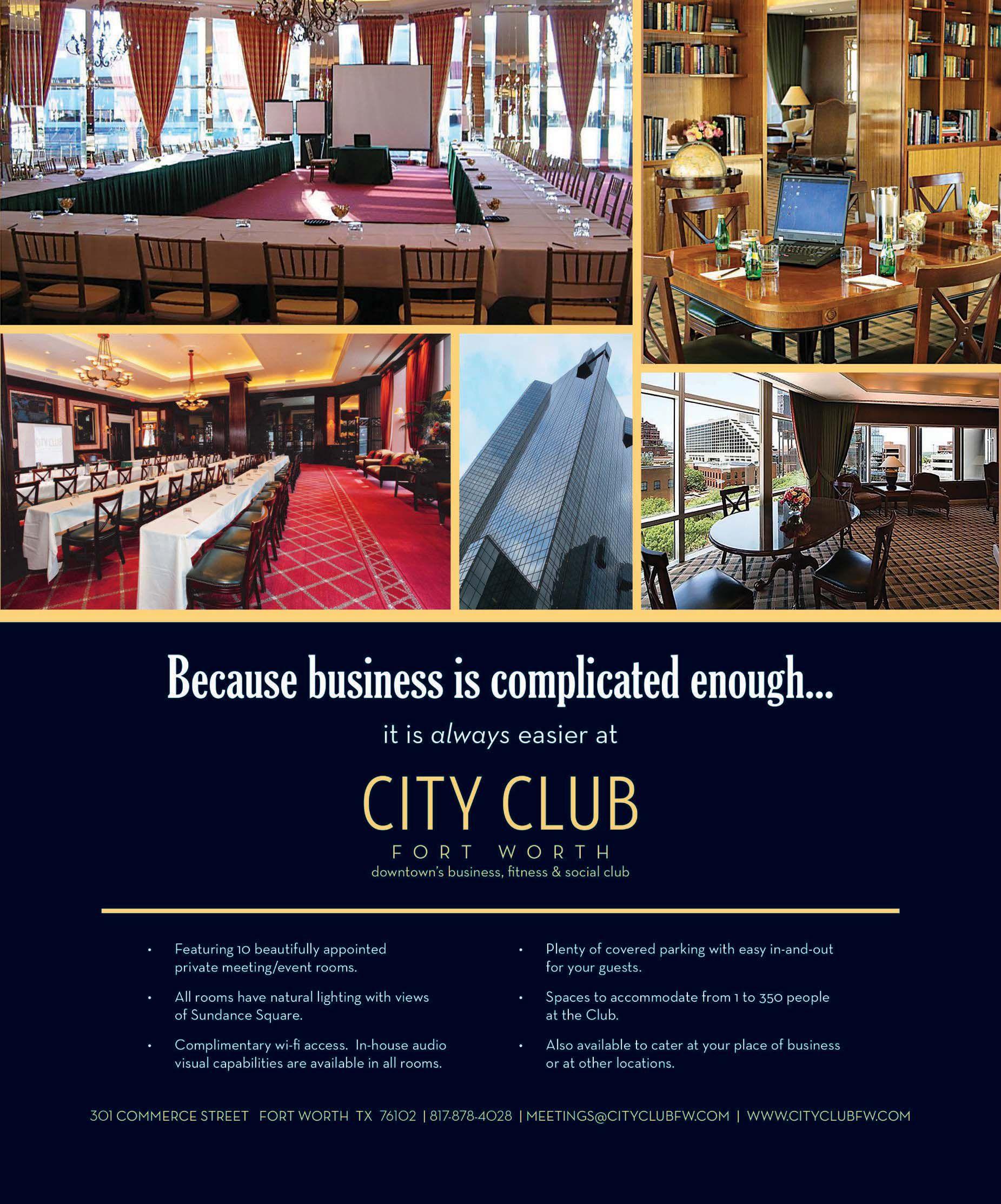





38 Stone Bold: He’s been in the pool business, the stone business, the housing business, the restaurant business — and he serves on the Texas Legislature. So, what’s it like to be Ramon Romero? Well, come along for the drive.
44 South by Southeast: Big dreams for a cinema, restaurants, retail and more — all for Southeast Fort Worth.
52 Rebuilding the Interior City: A Fort Worth developer puts up 13 spec houses in Como and sells them. And he's not alone.
Our longstanding relationship with UT Southwestern includes our joint research program at Texas Health Dallas. It’s one of the most sophisticated human physiology labs in the world, where we’re working to discover treatments and develop cures for the world’s most debilitating and chronic diseases, including hypertension, diabetes, congestive heart failure, and Alzheimer’s disease.
Last year, we created Southwestern Health Resources. This innovative network of hospitals and doctors combines the world-class research and advanced treatments of UT Southwestern with the power of Texas Health, who cares for more North Texans than any other provider. Working with physicians, Southwestern Health Resources seeks to improve cost and quality for patients through shared clinical guidelines.
The commitment of Texas Health and UT Southwestern to addressing the needs of North Texans, wherever they work and live, is growing. Currently between us, we have 31 hospital locations and more than 400 points of access across North Texas. And we are now collaborating to build a $270 million acute-care hospital and multispecialty clinic complex in Frisco, one of the fastest growing communities in the region and the country.
9 Bizz Buzz: Tim Love’s gutsy cold call, an entrepreneurial foundation’s new identity, and more buzz.
11 Comings and Goings: Luxury shopping at DFW Airport, a milestone for Stage West and other moves.
14 Stay Informed: How to leverage one of social media’s hottest trends for your business.
16 Around Cowtown: The 2018 Entrepreneur of Excellence Awards — were you there?
18 Face Time: “Some people think a gas station put on a corner is economic development. It's not.”
( EXECUTIVE LIFE & STYLE )
22 Distinctive Style: Inside the style of Frank Moss. No, not that Frank Moss.
24 Off the Clock: New to private flying? Here’s a quick guide to local services.





26 Office Space: Try to spot the vintage iMacs and Transformers action figures in this West Vickery space.
30 Wine & Dine: Seven drinks from Fort Worth coffee shops that’ll get you hyped.
34 Gadgets: The suite life of you and your client.
36 Health & Fitness: So not every building can have its own gym, but here’s a way to provide that benefit, and then some, to your employees.
( COLUMNS / DEPARTMENTS )
58 EO Spotlight: A millennial making his mark in Fort Worth real estate.
60 Business Strategy/Running Toward the Roar: A heart attack almost killed him; but instead, it kickstarted a growing company that aims to promote integrity between contractor and consumer.
62 Analyze This/Energy: Texas’ economy is growing, but with caveats.
64 Analyze This/Insurance: Hail is the worst.

66 Analyze This/FW Chamber Report: Fort Worth’s big gig at SXSW.
68 Analyze This/Legal and Tax: The art of negotiation involves a little brain trickery.
70 Analyze This/Commercial Real Estate: Kelly Allen Gray talks redevelopment in Southeast Fort Worth.
72 Analyze This/Wealth: Effects of the Tax Cuts and Jobs Act.
74 Business Leadership/ Management Tips and Best Practices: Tough conversations are a part of business. Here, a few tips on how to handle them.
76 Business Leadership/ Successful Entrepreneurship: Just do it.
78 Business Leadership/ Startups: Eosera, Revitalize and Nuvothera ... where are they now?
80 Day in the Life: Days go by fast when you’re the president of a university on the move.

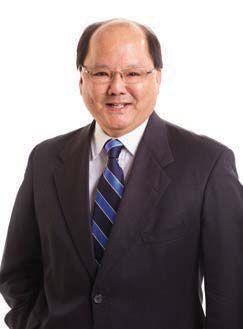
The hunt for interior-city real estate and attractive infill opportunities is on in Southeast Fort Worth.
Look no farther than Stop Six. Once the sixth stop on an interurban streetcar line that ran between Fort Worth and Dallas decades ago, the neighborhood around Fort Worth’s Dunbar High School today is rife with vacant lots. The plan to redevelop the Cavile Place housing project, redistributing many of its 300 apartment units into the community, has fallen apart.
That’s represented opportunity for some enterprising small builders like Lester Jones, who grew up in the neighborhood, went off to serve our country in the Marines, came back and built houses around Fort Worth for years with his dad, and then saw an opportunity to help revive his old stomping grounds. His inspiration: a documentary about a Detroit developer who contributed to that city’s nascent comeback by focusing on one house at a time. We can do the same thing here in Fort Worth, Jones told his wife. He called it their “Lazarus Project” – bringing Stop Six back from the dead.
Jones has just finished his first spec house in Stop Six – a three-bedroom, two-bath, two-car-garage brick home that he’s listed for $185,000, a strong $123 per square foot.
Jones isn’t alone. A small number of other builders have been building homes in Stop Six, both for buyers and on spec. A small businessman is building a 5,400-square-foot custom home on 1 acre in the neighborhood.
Land values have shot up accordingly. A few years ago, Jones bought a standard
residential lot from the city for $2,000. Just a few weeks ago, someone offered him six lots for $14,000 apiece, he says.
He can still make money on that. He figures he has $110,000 in costs in the home he’s just listed. “It hasn’t gone past what’s reasonable, but it’s certainly done its thing,” he says.
You can read about Lester Jones and Carlos Harris in our story about Southeast Fort Worth renewal that begins on page 44. It’s crammed full of stories about entrepreneurs who are toeing the water in neighborhoods ranging from EvansRosedale to Poly, Morningside and Stop Six. Builders Jennifer and Robb Farmer, who own the historic Pinkston mortuary in Evans-Rosedale, are taking a plan to turn it into an arthouse cinema to the city for a rezoning in March. Developer Chris Powers, who’s converting a section of West Fort Worth into the River District, is looking at teaming with a longtime real estate-investing family on a 5-acre site between Texas Wesleyan and the burgeoning Renaissance Heights development. Developer Michael Mallick, who helped transform 200 acres of prairie into Renaissance, has turned up the heat on acreage he owns at the Riverside/Berry intersection, which Southeast Fort Worth boosters view as one of the next hot spots in Southeast Fort Worth.
And our cover story in this issue is about Ramon Romero Jr., who’s built a life’s business out of swimming pools, stone and rehabbing houses in Poly, where he grew up. On the side, Romero is a state legislator. He’s stayed modest, living in a quiet home he bought at age 21, just a few blocks off of East Lancaster. “I’ll be straight with you,” he told us. “Ramon is not rich. Ramon has a lot of stone to sell.”

Scott Nishimura executive editor





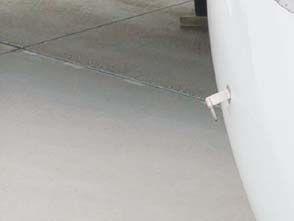

















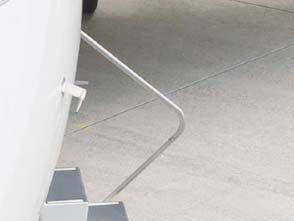
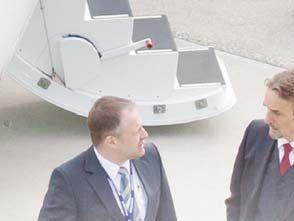
























The Convention and Visitors Bureau changes its name and launches a master plan to not just bring more tourists, but accommodate them.
BY SAMANTHA CALIMBAHIN
The Fort Worth Convention and Visitors Bureau announced a name change Feb. 28 at its annual meeting and breakfast — “Visit Fort Worth.”
The new name comes as the organization launches a Destination Master Plan to increase tourism, visitor spending and length of stay. The master plan outlines five strategic goals for Fort Worth: Enhanced Experiences (meaning the addition of more tours that showcase the city’s landmarks, food and other attractions), Strengthened Messaging (developing marketing strategies to increase awareness for the city), Expanded Facilities (which includes the renovation and expansion of the convention center and development of more hotels and other facilities), Improved Connectivity (improving the city’s transportation system through services like TEXRail, Uber and others), and Greater Collaboration (encouraging government, business and other organizations to work together to support tourism).
Efforts to support the initiative are already underway, one of them being the decision to make Trinity Metro's
Molly the Trolley free in downtown again. Fares became free starting March 1.
Subsidies from Visit Fort Worth, Downtown Fort Worth, Inc., and Sundance Square — as well as contributions from downtown hotels like the Omni, Worthington Renaissance, and Sheraton — will help pay for the service. The cost to operate Molly the Trolley is about $1 million each year, and downtown organizations will contribute a total of nearly $136,800 annually to help offset the cost.
“Molly the Trolley is a crucial part of the downtown visitor experience,” Bob Jameson, president and CEO of Visit Fort Worth, said in a statement. “Public transportation is a coveted amenity that many convention planners and other visitors consider when choosing a destination. [Visit Fort Worth] is happy to help subsidize Molly the Trolley because this service is a win for downtown and the future of tourism.”
Also planned for this year is Texas Crossroads, a series of acoustic concerts set to take place at McDavid Studio in the fall. Jameson said at the meeting that more details will be announced in the spring, but the event "will showcase a mashup of very different artists who do not normally appear on the same stage together."
During the meeting, Jameson also called for the city to continue working on bringing additional hotel rooms, as well as moving forward with the planned renovation and expansion of the Fort Worth Convention Center.
"We are not able to accommodate all of the business that wants to be here, and the goal is to attract more," he said.
According to Visit Fort Worth, the city reached 9.1 million visitors in 2017 (up from 8.8 million reported last year), resulting in a $2.4 billion economic impact and $116 million in local tax revenues.
More information on the master plan can be found at fortworth.com/masterplan.
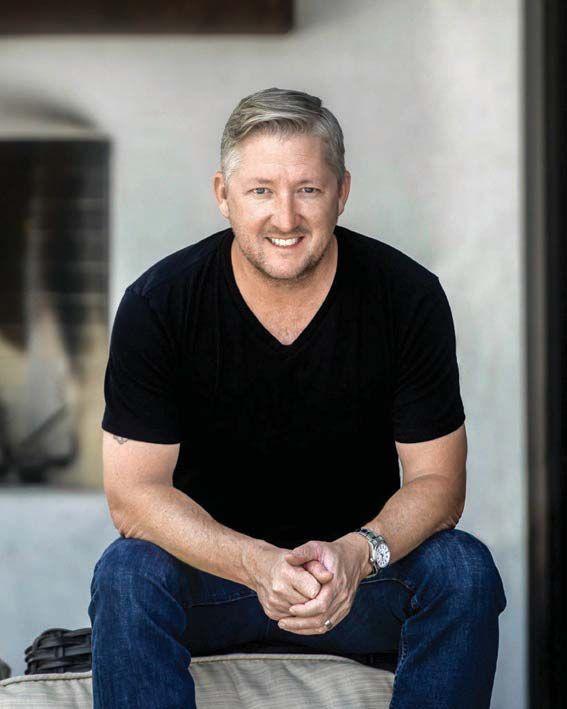
Fort Worth chef Tim Love, with an idea, pursues the founder of the Pilot Flying J travel center chain and ends up with a deal to revamp the food in the national chain.
BY SCOTT NISHIMURA
Sometimes, you just have to pick up the phone. The Fort Worth chef Tim Love did just that. In Knoxville, Tennessee, to check on his Lonesome Dove and Love Shack restaurants there, Love met Jim Haslam, the founder of the Pilot Flying J chain of 750 travel centers in 43 states and six Canadian provinces. Curious, Love dropped in on a Pilot in Knoxville to check out the food.
“I wasn’t real happy with it,” he says. Love cold-called the company and sent an email, offering to help. He finally received a text from the executive in charge of the company’s
food program. It was four and a half months to a deal under which Love will create branded menu items for Pilot Flying J centers meant to provide more variety and fresh items for customers on the open road. “It’s the oldschool cold call,” Love says. Love has already made some changes to the Pilot Flying J line of PJ Fresh grab-and-go products that include sandwiches, fruit cups, pizza, and hot foods. “We’re changing ingredients, buying better,” he says. Instead of some foods sitting under the hot lights, they’re now presented in cast-iron skillets.
In April, Love will launch the first in a line of Tim Love for PJ Fresh foods, an organic peanut butter and jelly sandwich. “If you get it on the road, it does well four hours from now,” Love says. The PB&J sandwiches are planned for all Pilot Flying Js, Love says.
Love this summer also plans to test a Tim Love-branded breakfast taco in the 74 Texas stores that, depending on customer response, could make it nationally. Finally, this year Pilot Flying J will launch a Tim Love Texas red chili and chili Frito pie. It could make it into as many as 300 Pilot Flying Js, limited to that number by kitchen capacity, Love said.
That still leaves the mix-all graband-go, but Love says made-to-order may eventually become a possibility.
“We’re working on a program for that,” he says.
One of the challenges Love has faced: Most of the foods are made
in the stores, not in a central kitchen. And the Pilot Flying J stores tend to be on interstates outside of major metro areas. “You don’t start really thinking about this stuff until you start thinking about it,” Love says.
Why Pilot Flying J? Love says 2,600 customers walk through the doors daily in each store. “It’s a massive count.”
And Pilot Flying J can’t become complacent, Love says. “You see QTs popping up everywhere. People are coming, and the focus is on the food,” he says.
And the fast-growing Buc-ee’s has a near-cult following among its rabid customers. “You walk into Buc-ee’s, it’s all about the food,” Love says. “We’ve got to get ahead of this.”

BY ANDREW VAN HEUSDEN
Texas Motor Speedway is building a new indoor and outdoor club seating area, Restart BAR Zone Club. The club is expected to be finished in time for the O’Reilly Auto Parts 500 NASCAR doubleheader weekend on April 6-8. Fans can enjoy seating at half-round tables and barstools outside or watch a high-definition television while sitting at a bar. Ticket sale options have yet to be finalized.

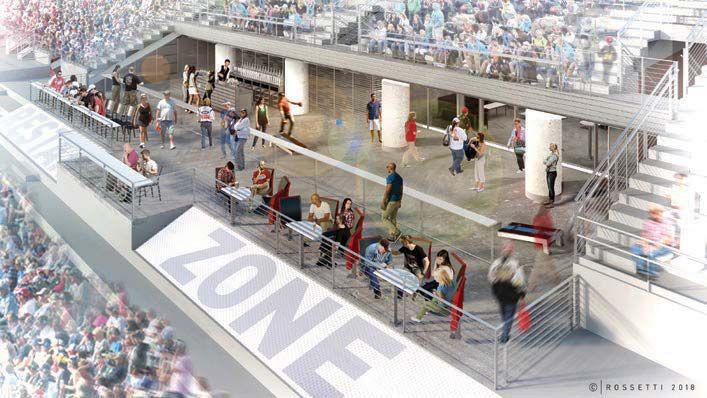
The Petroleum Building and adjacent parking garage have been purchased by Sundance Square for an undisclosed price. The 14-story building is located on a full city block at West Sixth Street, between Houston and Throckmorton streets, and will be occupied by XTO Energy, its previous owner, until midway through this year. With this purchase, Sundance Square will own over 4 million square feet of office, retail and residential space. Sundance Square has not yet announced what the exact use of the building will be.
The largest duty-free store in the U.S., TRG Duty Free, celebrated its grand opening at the Dallas/Fort Worth International Airport in February. Located in Terminal D, this two-level store offers shopping, VIP concierge services and more. Travelers can buy local products found at no other duty-free stores, including TX Whiskey and Askinosie Chocolate. The top level has comfortable seating pods, chargers and iPads for travelers who need a space to work.
Stage West has purchased its location at West Victory Boulevard after being under a triple-net lease, managed by Ol’ Vic L.P. (a group of Stage West supporters), for a decade. According to Stage West, this purchase will result in a lower mortgage cost than lease rate, give the theatre company equity in property that will be valuable during the growth of the Near Southside district, and make the space more available for rental by other theatres and startups when not being used by in-house productions. The organization’s development committee plans to lay groundwork for renovations fundraising throughout the upcoming months.
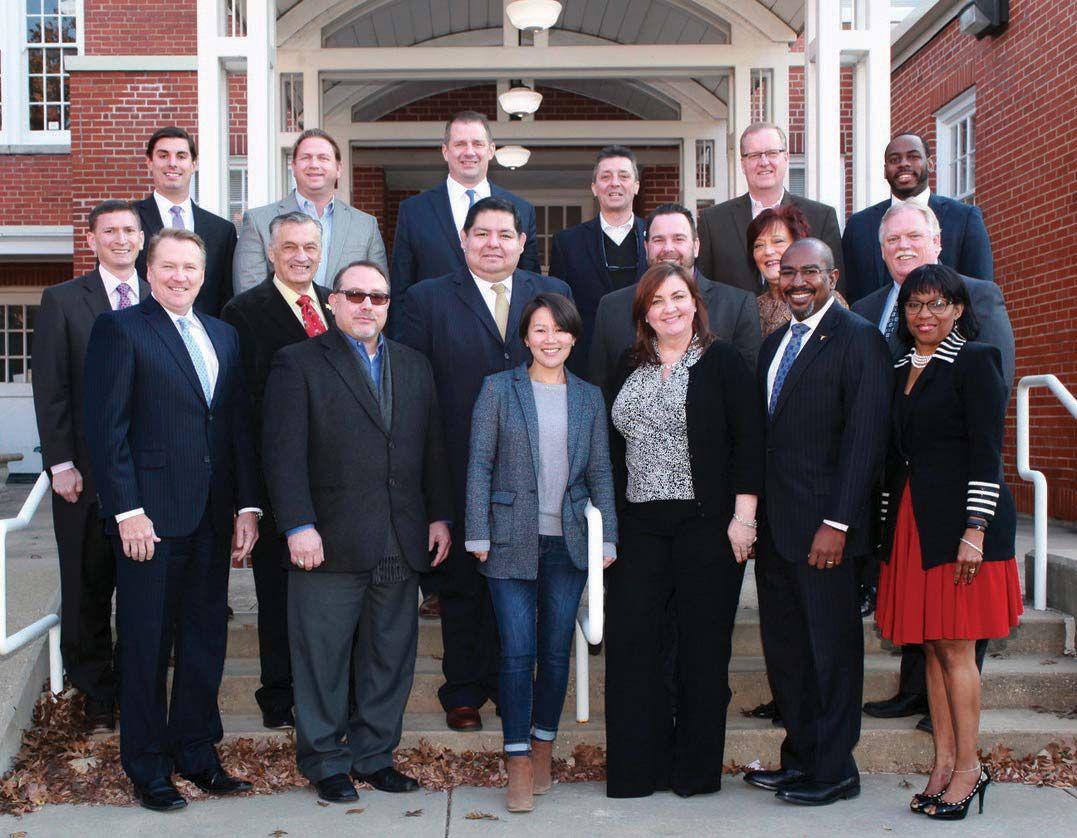
Changes to the BAC Education Foundation could mean changes for IDEA Works too.
BY SAMANTHA CALIMBAHIN
The month of March marks the start of a rebrand and relaunch for the BAC Education Foundation, a nonprofit that provides support to entrepreneurs and startups in the area. Its new name — the AccelerateDFW Foundation.
“The vision and mission of AccelerateDFW is quite different,” board chair Ed Riefenstahl said. “It is both more expansive and more focused in assisting entrepreneurs and in collaborating with similarly-minded partners.”
The BAC Education Foundation was
originally formed in 1999 to help get Texas state funds to the Business Assistance Center (BAC), a city-run service that offers education, training and skill building for small businesses. During this time, the BAC Education Foundation was run by the city. When funding from the state no longer became available, the city continued to fund the BAC without the help of state funds.
Then four years ago, IDEA Works came along — the multi-industry incubator that offers coaching, workshops and other programs to small businesses.
Board members and stakeholders of the BAC Education Foundation pose in front of the Guinn Campus.
It shares the same building as the BAC (the Guinn Campus off Interstate 35 West and East Rosedale Street, which also houses TECH Fort Worth). IDEA Works, an initiative of the BAC Education Foundation, helped generate some revenue for the foundation; grants and sponsorships allowed the foundation to become financially independent.
So, with the BAC Education Foundation now independent from the city, the foundation decided to rebrand in an effort to give the organization a clearer identity, offer a distinct set of entrepreneurial support services not currently offered by other local organizations, and expand its focus to the Fort Worth-Dallas Metroplex, not just Fort Worth and IDEA Works.
The AccelerateDFW Foundation plans to expand its efforts by supporting entrepreneurial events and activities, as well as partnering with educational institutions, locally based corporations and other entities that support startups. The foundation will also support initiatives intended to help businesses execute ideas and achieve faster success.
AccelerateDFW plans to address how the foundation will be funded in the future as well.
As far as how all this evolves the programs of IDEA Works — that’s yet to be determined, Riefenstahl says.
“IDEA Works will still help entrepreneurs, just more of them,” he said. “For those entrepreneurs willing to learn from those who have made it through the entrepreneurial pit, IDEA Works will provide the right resources and the right connections at the right time. We are reviewing IDEA Works’ current program/ service offerings for entrepreneurs and will pivot based on today’s — not yesterday’s — identified needs.”


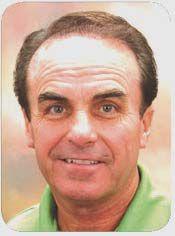
The best ways to leverage one of social media’s hottest trends.
BY SAMANTHA CALIMBAHIN
If you’re not already doing it, your kids are doing it, or that trendy millennial sitting next to you in the coffee shop is doing it. We’re talking about Stories — those photos and videos that appear on social media outlets like Snapchat, Instagram and Facebook, then disappear, usually after 24 hours. Some companies have already taken up the trend, using it as a new way to get their brand in front of audiences. So, what are the best ways to leverage it for business? Local public relations and marketing agencies PAVLOV, Balcom Agency and HOLLAND collective weigh in.
WHAT SETS IT APART:
“Snapchat is the original creator of the ‘Stories’ feature … Stories appear chronologically, giving your Story a much bigger chance of being seen, as opposed to being prioritized by Facebook and Instagram’s ever-changing algorithms.” -Hannah Lacamp, social media specialist at PAVLOV
“The demographic. Seventy-one percent of Snapchat users are under 34 years old.” -Lesley Dupre, account director and PR specialist at Balcom Agency
“What’s innovative about Snapchat is the use of geotags and event filters. When your business hosts an event, you can customize a cool ‘filter’ that your audience can tap into and use to take selfies on location.” -Alex Cambora, HOLLAND collective accounts manager
HOW TO USE IT BEST:
“Tapping into local influencers and celebrities for ‘Snapchat takeovers’ (allowing an influencer to ‘take over’ the brand’s account and create a story from their perspective) is a great way to build brand reputation and trust amongst followers.” -HL
“We like to use Snapchat as a tool to engage with our audiences. So next time your business hosts a party, create a fun filter and invite people to take selfies. The filter serves as creative brand activation, and the stories are shared with people who are directly connected to your audience.” -AC
WHAT SETS IT APART:
“The visuals. Users go to Instagram, particularly Instagram Stories, expecting eye-pleasing photos and videos.” -LD
“Instagram leads the pack with more than 300 million active daily users [as of Dec. 24, 2017]. Not only do Instagram Stories have the most user-friendly interface out of all social media networks, they are also (arguably) the most innovative, adding the ability to tag users, add links, customize geo-tags and stickers, upload GIFs, and create and share Boomerangs.” -HL
HOW TO USE IT BEST:
“In the HOLLAND collective world, Instagram is where we go to get creative. Businesses can highlight their originality with unusual fonts and gifs to create something visually stunning and take your InstaStory to the next level. Use this space to showcase what a day in the life of your business looks like.” -AC
“Instagram Stories limit ‘oversharing’ content in the newsfeed, allowing more day-to-day, in-the-moment photos and videos. Brands can explore their creativity by sharing customizable Stories of events, company culture and more in a fun, engaging format their followers can relate to.” -HL
“To show off your best. Use your best photos and videos to show off your product, people, views, etc.” -LD
WHAT SETS IT APART:
“The site has over 2.13 billion monthly active users [as of Jan. 31, 2018], which is twice as many as Instagram and 10 times as many as Snapchat.” -Gunnar Wilbert, Social Media Coordinator at PAVLOV
“Facebook has the potential to reach the broadest demographics, from young to mature users, with the ability to share informational details about your business.” -LD
HOW TO USE IT BEST:
“Even though Facebook Stories aren’t mainstream yet, they shouldn’t be left out of your social media strategy. They give your brand a unique opportunity to deliver your camera-first message to a massive audience. The 1.15 billion daily users of Facebook’s mobile app will also see the preview for your story at the top of the app’s feed.” -GW
“To reach the masses. While Facebook presents an opportunity to showcase your business to a large number of people, its new algorithm will prioritize stories from a user’s friends and family over stories from a brand. This means Facebook advertising dollars need to be spent to reach more of your target audience.” -LD










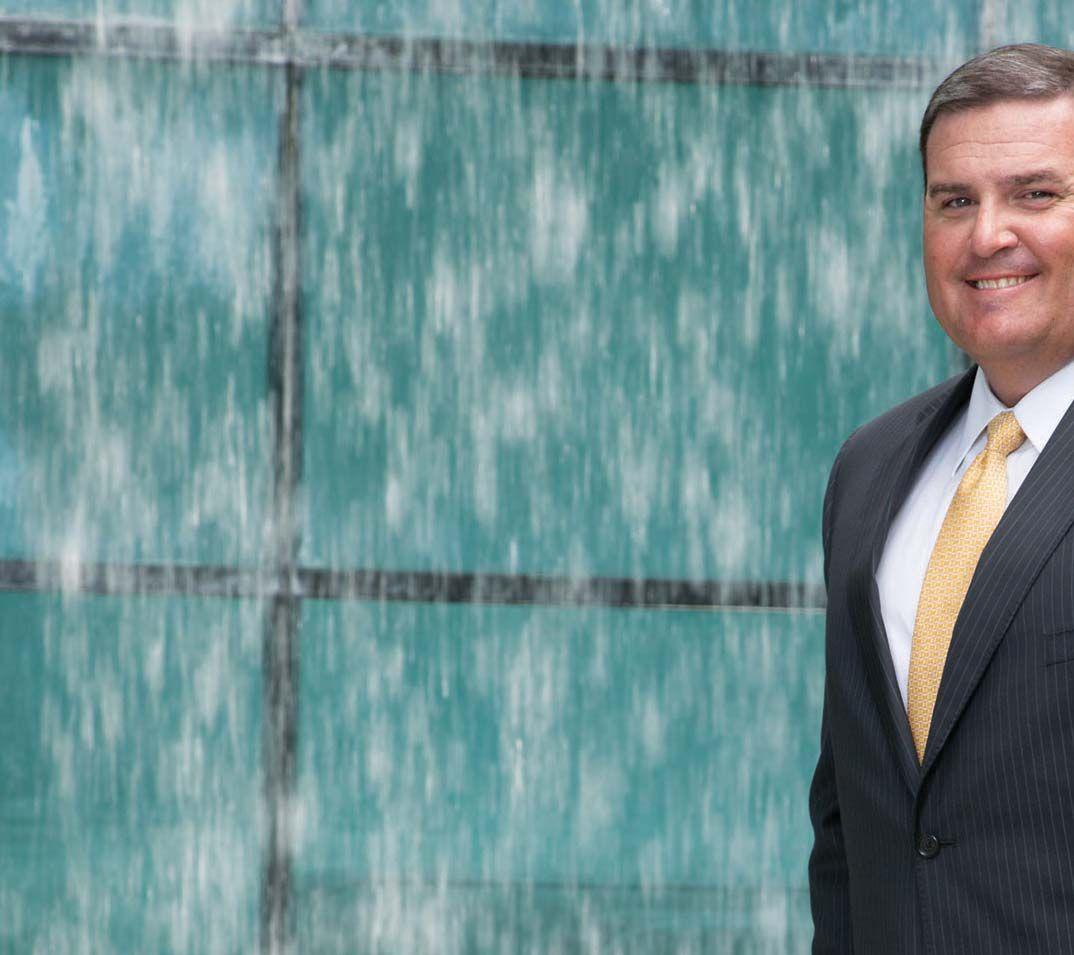
Craig Rogers President & CEO


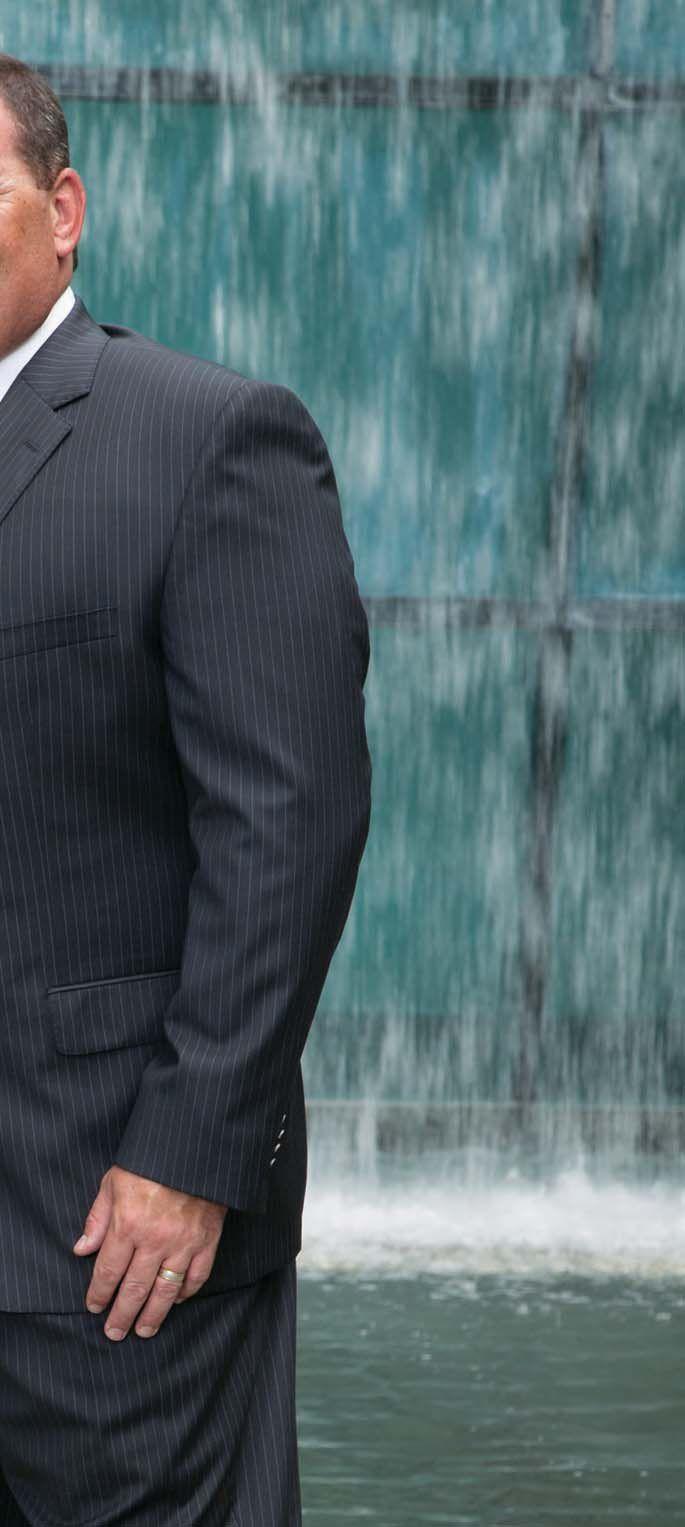


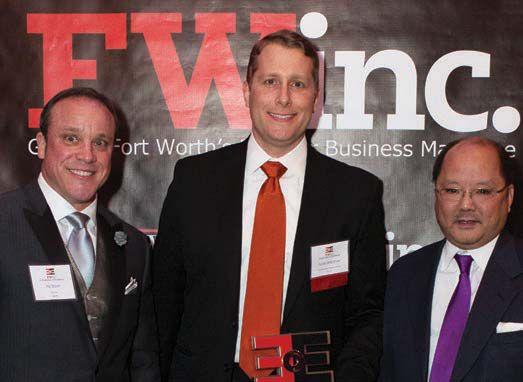
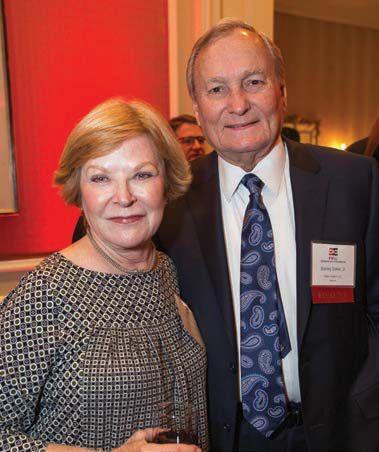

FW Inc.’s Entrepreneur of Excellence Awards
FW Inc. announced the winners and honored the finalists of its 2018 Entrepreneur of Excellence competition at an awards dinner Jan. 11 at the Fort Worth Club.
1. Allen Spinner, Cynthia & Robert Sturns
2. Hal Brown, Nolan Bradshaw, Scott Nishimura
3. Cody Nichols, Jerry Priester
4. Aaron Ballard, Hudson Marx, Mel Henkes, Chase Tipton, Mark Duffy
5. Cathy & Stanley Baker
6. Sherry Green, Sunny Drenik, Anna Boulware, Lisa Cobb, Debbie Cooley
7. Tamera Payne, John Carlen
8. Earl & Carol Gauntt, Susan & Larry Buck
9. Shannon & Howard Ashkinos 1 3 4 2 56
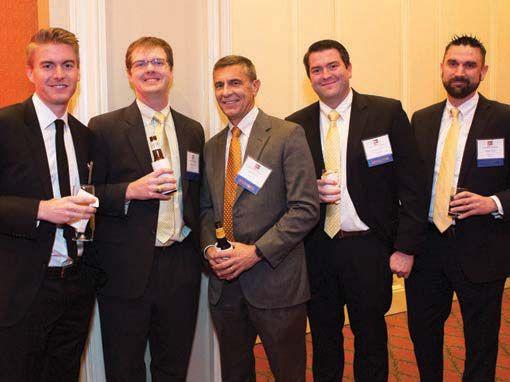

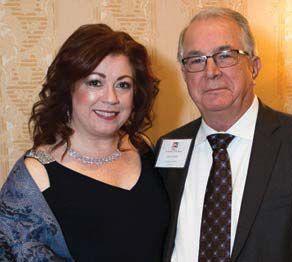









SHELBY BRUHN President

Supporting the Fort Worth community through tailored financing, cash management solutions and personalized service.
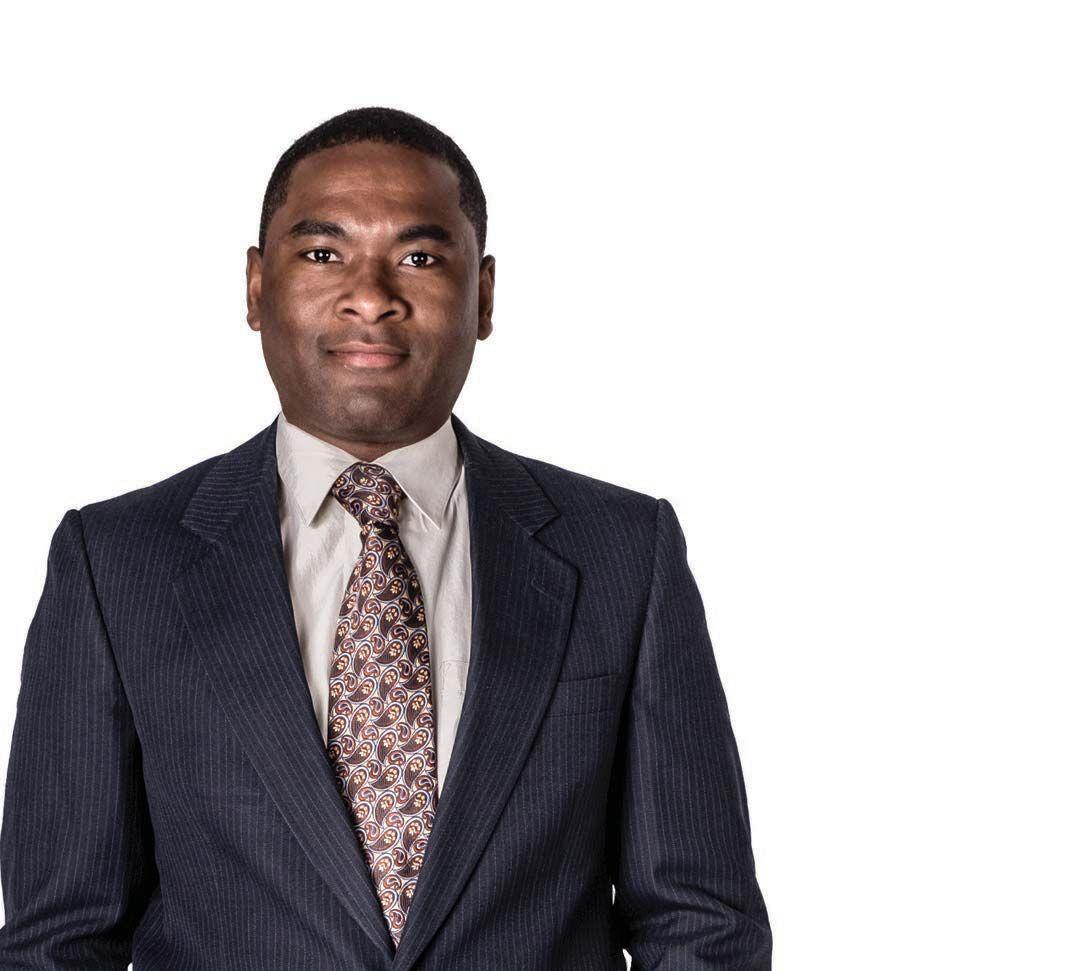
Southeast Fort Worth economic development leader looks to facilitate conversations and mitigate the likelihood of disputes.
BY SCOTT NISHIMURA
Stacy Marshall has had a lot to navigate since he became executive director in 2015 of Southeast Fort Worth Inc., the economic development organization responsible for helping revitalize the largely raw southeast side of the city, attracting industrial, commercial and retail business.

Marshall, former chief executive of the Lancaster Chamber of Commerce, diversified the organization’s board, taking it to 17 members from six and bringing in executives and other leaders from business and the community. He established an executive committee led by a chairman John Dewar of Freese and Nichols.
Southeast Fort Worth Inc. has also bumped up its budget since Marshall’s arrival, going to $236,000 in 2017 from $125,000. Marshall has put the money into more outreach, part-time staff, and marketing. The organization also relaunched its website.
Marshall’s set out to present Southeast Fort Worth Inc. as an entry point to the city for business interested in locating in the southeast quadrant, where disputes over development are common.
“I’m an advocate to bring people on board before we’re too far down the road,” Marshall said in an interview. “I don’t want people to be shocked by anything. I’m very transparent. I love for everybody to know what is going on.”

Marshall typically helps move business development proposals through the city

and neighborhood organizations. “It’s everybody sitting at the same table, having a conversation,” he says. Marshall estimates Southeast Fort Worth has 14 neighborhood organizations “that are passionate. There are six that command that I answer their calls, come to their meetings.”
Some proposals have met a quick demise, such as one to put a distillery into the historic Grand Theater off of East Rosedale Avenue in the Evans-Rosedale corridor. “That was a no-go,” Marshall says. “You have two churches [nearby] right next to each other.”
Other proposals have longer runway, such as a current development proposal to put a public cinema in the old Pinkston Mortuary in the Evans-Rosedale district, on the east side of Interstate 35 West and viewed by city and business leaders as a potential extension of the Near Southside.
Marshall’s also assisting the city in its planned request for proposal and expressions of interest for a master developer to come up with a plan for a number of vacant lots the city owns in the Evans-Rosedale district. A developer has proposed a plan for a limited service hotel at Interstate 35 West and East Rosedale Street, but city leaders aren’t sure that’s the right use.
Marshall would like to see more city funding for street improvements and greater incentives for development.
One of Marshall’s goals for Southeast Fort Worth: two grocery stores, one in the city’s District 8, comprising neighborhoods like Poly and Morningside; and one in District 5, the home of Stop Six. He visited South Dallas’ Bishop Arts District. “They suggested a small grocery store inside a shopping center,” he says.

Vineyard Tower Expansion – Opening Summer 2018!
Extraordinary Environments | Meetings Expertise | Service with a Passion
The $120 million expansion at Gaylord Texan Resort & Convention Center will feature 86,000 square feet of additional meeting space—bringing the property’s total meeting space to over 490,000 square feet. Vineyard Tower will also boast 303 additional guest rooms, two outdoor terraces and a dedicated loading dock.
Contact us today to start planning your next event.
GaylordTexanMeetings.com | (877) 677-9352

With your sales growing and business increasing, you saw an opportunity to expand – and you took it. Good thing you had a like-minded local business expert in your corner: First Financial Bank.
We understand where you’re coming from, because we’re from there, too. So you not only get personal, local service, you get fast, local answers.
From business loans to banking services, First Financial
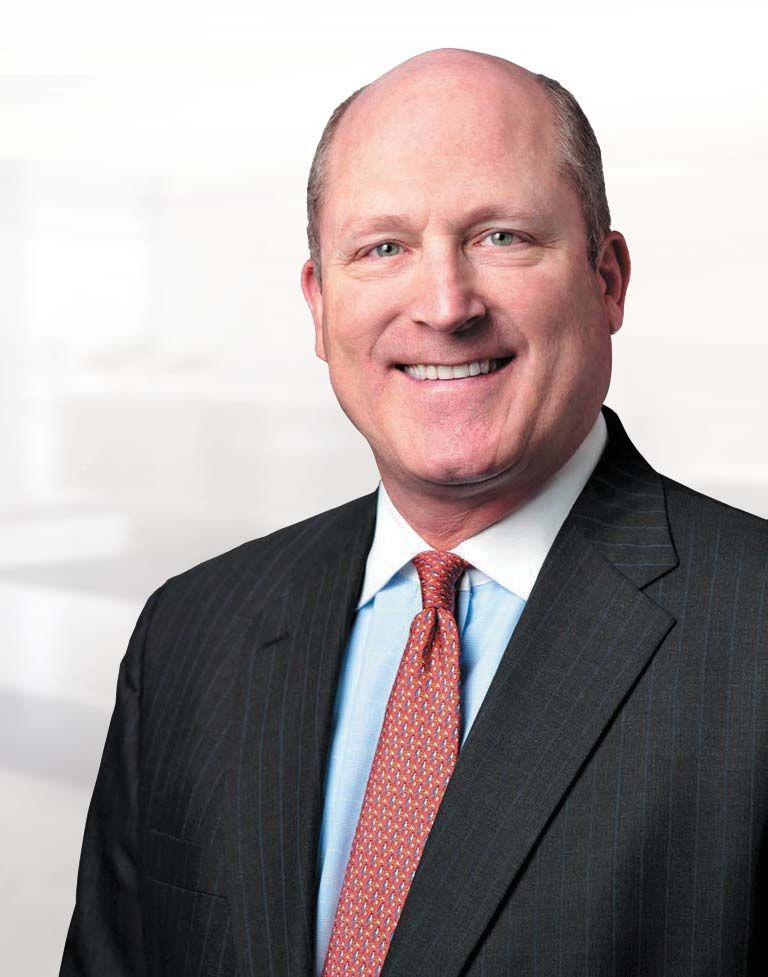

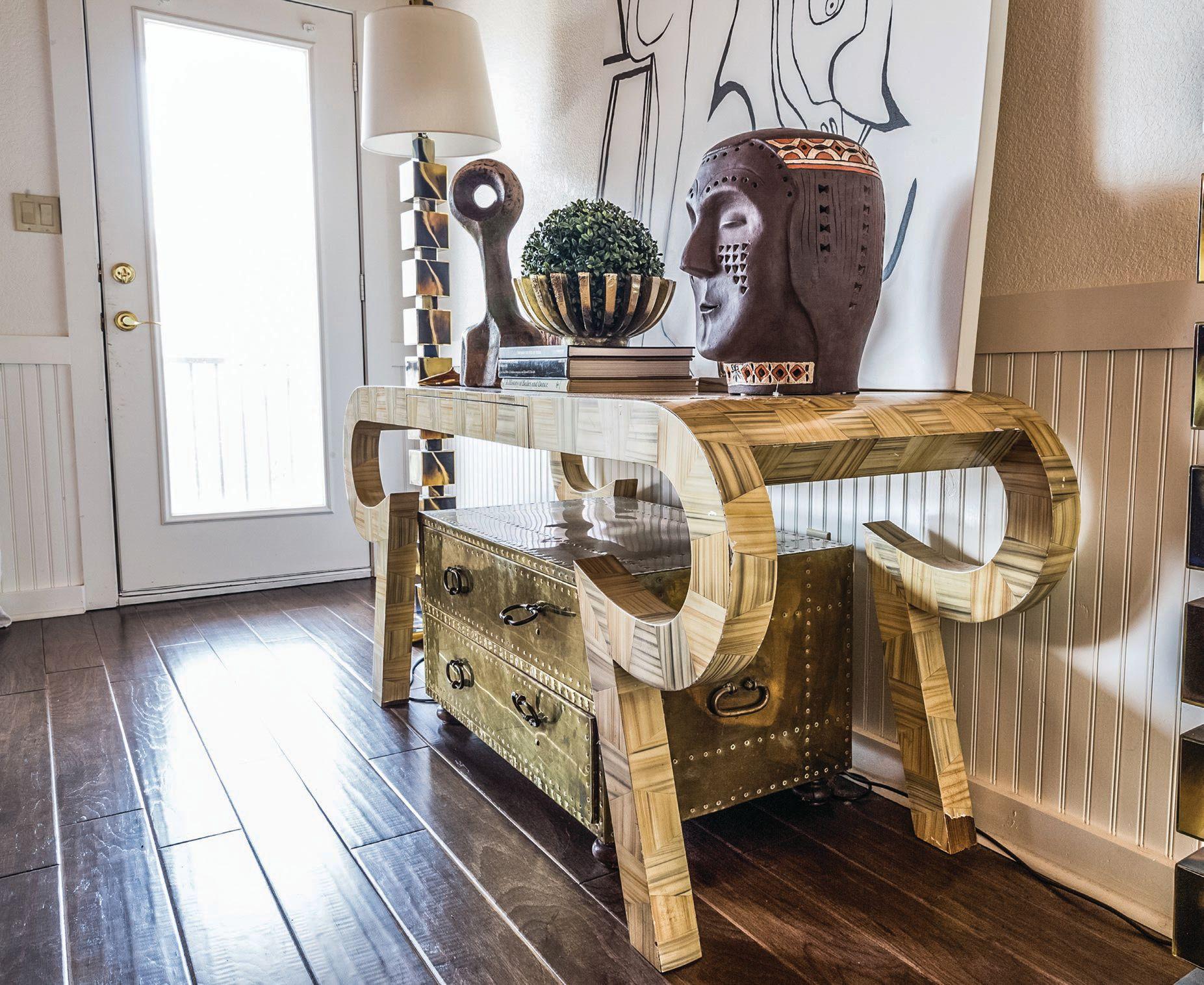
The Spring issue of Fort Worth HOME is on newsstands now.

Want to be one of the first to get the next issue of Fort Worth HOME? Subscribe to Fort Worth Magazine at fwtx.com/subscribe to receive both publications before they hit newsstands. Already a subscriber? Look for the Spring issue of Fort Worth HOME in your mailbox.






His father is a former city councilman; his mother, vice president of the FWISD Board of Trustees. So naturally, Frank Moss went into fashion.
BY SAMANTHA CALIMBAHIN
He’s been called a “Bearded Bae” and a “Black Dandy.” But at the end of the day, he’s just “Frank” — that is, Frank Moss, co-owner of bespoke clothier Franklin & Anthony.
No, not that Frank Moss, the former Fort Worth city councilman. That’s his father. His mother is Christene Moss, vice president of the Fort Worth Independent School District Board of Trustees. But rather than pursuing a career in local politics or education, the younger Moss decided to take a different route — fashion.
“My parents have actually been supportive [of] everything I do,” Moss says, adding that both have guided him in his business pursuits. His parents are also Franklin & Anthony clients.
Before entering the world of custom clothing, Moss was a stylist for fashion

Frank Moss is known for his clothing style, but his beard makes waves, too, having appeared in publications like COSIGN Magazine and Essence (which named him a “Bearded Bae” in 2017). Here, his tips for beard care.
shows, working under fashion marketing and public relations specialist Stephania Schirru and Dallas designer Esé Azénabor. Then one day, a friend asked him if he wanted to make suits.
“I said, ‘That means I get them for free?’ And he said, ‘Yeah,’” Moss recalls. “I said, ‘Sure let’s do it.’”
That friend was Keaon Anthony, who became the “Anthony” of Franklin & Anthony. The duo launched the company about two and a half years ago, creating custom suits for clients around the U.S. When Anthony stepped down to focus on his family, Moss brought in another partner, Michael Anthony Taylor Jr., previous owner of bespoke clothier Eminent Style. Since his middle name was “Anthony,” the name stuck, and today, Franklin & Anthony has clients around the U.S., including Washington, D.C., New Orleans and Atlanta. It has even made suits for Buffalo Bills running back Travaris Cadet, whom Franklin & Anthony connected with through Schirru.
The company doesn’t have a brick-andmortar yet, but Moss hopes to begin looking for possible showroom locations in Fort Worth or Arlington this summer.
Moss, for the most part, wears solely Franklin & Anthony — “I am my own billboard,” he says — and describes his personal style as “modern renaissance.” A few of his personal preferences: colored suits, peaked lapels and high-waisted pants with no breaks or belt loops.
Though he’s passionate about fashion, that’s not to say he isn’t involved in the community. He helped found the nonprofit CommUnity Frontline, a group of men


focused on improving the city in areas like education, business and social issues. The group’s current focus is East Fort Worth, where Moss is from. He currently lives in Meadowbrook.
Moss balances that, alongside raising a family, running Franklin & Anthony and working his day job in mortgage modification. Whatever he’s doing, Moss says he takes the opportunity to dress up — even though he doesn’t really have to.
Anyone can make an outfit work, he says, as long as it’s carried with confidence. “If you don’t have that confidence, your outfit looks just that way. The more confident you are about your clothes, the better you look. That’s why I can get away with a very loudcolored suit.”
Use beard balm and oil. Bold Beardsmen and BeardGoonz are two brands Moss recommends.
Understand your hairitage. Race matters when it comes to beards, Moss says. “For finer hair, it’s good to wash your hair daily and condition it daily
… For black individuals, condition it daily, but wash it once a week, just because our hair is different, and we tend to wash out our minerals and cause our hair to get really dry.”
Know what your comb is made of. A wooden, bone or ivory comb causes
less breakage, according to Moss.
Find a good barber and stick with him or her. Moss’ barber of choice is Nicole Scott of Nice CutsA Clip Mode Barber Salon in Woodhaven. He doesn’t go to anyone else in Fort Worth.
BY SAMANTHA CALIMBAHIN

There are many ways to fly privately out of the Fort Worth-Dallas area. Here, a quick look at six of them. Use this guide to compare and contrast as you plan your next business or pleasure trip.
JetSmarter jetsmarter.com
The works: JetSmarter offers an app that allows travelers to book flights via their phones. Once you become a member, you can create a personalized charter flight for yourself and/or guests. Flights leave from Dallas Love Field Airport, and JetSmarter can fly almost anywhere in the world. On flight day, members are asked to arrive 30 minutes prior to take-off time and provide a driver’s license or passport. Doors close 10 minutes prior to take-off.
The perks: Complimentary champagne and in-flight catering are provided during the flight. JetSmarter members also have
access to a Concierge Service, which can help with hotel accommodations, exotic car rentals and other perks.
The bird: One higher-end jet that JetSmarter charters is the Gulfstream IV SP. It seats 12-13 passengers, has a range of 4,500 miles and a travel speed of 528 mph.
Surf Air surfair.com/us
The works: Book a flight through Surf Air’s mobile app or via its website. Flights can be booked weeks in advance or up to 20 minutes before flight time. The planes currently fly out of Jet Aviation at Dallas Love Field, and flight destinations include Austin, Houston, Northwest Houston/The Woodlands, Midland and San Antonio.
The perks: On flight day, members arrive 20 minutes before the flight and have access to complimentary beverages and snacks in a designated lounge. Each member has his or her own Membership Manager who
can help with additional travel needs or requests. Surf Air also hosts members-only experiences and events, depending on the region. In California, for example, the company hosted a cocktail event at Hotel Bel Air in February. According Surf Air, more events in Texas are being planned as well.
The bird: Among Surf Air’s higher-end aircraft is the Pilatus PC-12 which, according to Surf Air, is known for its safety and reliability and is the best-selling pressurized single-engine turboprop aircraft in the world. The Pilatus PC-12 has a capacity of eight passengers, with a cruising speed of 322 mph and a maximum altitude range of 1200 nm.
The works: Members book flights over the phone by calling Jet Linx directly at 817-625-5387. Flights fly out of Meacham International Airport to destinations in Jet Linx’s primary service area (PSA) — which
includes the continental U.S., Canada, Mexico and the Caribbean. Flights outside the PSA may incur surcharges.
On flight day, Jet Linx clients can arrive 15 minutes prior to their flight and walk directly from the private Fort Worth Jet Linx terminal to their waiting jet.
The perks: Travelers have access to an executive lounge with Wi-Fi and a bar stocked with snacks and beverages. Jet Linx also offers an Elevated Lifestyle program, letting members take advantage of deals at luxury resorts, spas and other services. Jet Linx currently has more than 20 partnerships, including the Canyon Ranch day spa and Meadowood resort in Napa Valley.
The bird: Jet Linx flies a variety of aircraft from light jets like the Embraer 300 to heavy jets like the Gulfstream V.
Baker Aviation baker-aviation.com
The works: Book a flight by calling and requesting a quote with your requested dates and routing. Baker Aviation will then send quotes for planes that are available. Once you decide on a flight, sign the quote and provide your credit card information, and Baker will reserve the plane for you. Baker can currently fly to Mexico, Canada, the Caribbean, South American, Hawaii, and anywhere in North America. The company plans to eventually have aircraft capable of flying to countries like Europe and Asia. Baker is based at Meacham International Airport, and with an added fee, can pick up passengers from anywhere.
The perks: Baker offers a private hanger where passengers can drop off their cars which get washed while they’re away. The company can also arrange catering and ground transportation for travelers at their destination.
The bird: Among the company’s higherend planes is the Citation X which, according to Baker, is the world’s fastest and one of the most efficient super midsize business
jets available. The jet, which seats eight in executive recliners, is equipped with Wi-Fi and galley with a microwave/convection oven.
Executive AirShare execairshare.com
The works: Schedule a flight via phone (877-3725136), email (charter@ execflightservices.net) or


the Executive AirShare mobile app. While Executive AirShare services customers from all airports in the Fort Worth-Dallas area, the company primarily operates out of Meacham International Airport and Dallas Love Field. Executive AirShare can fly to anywhere in the world, but most of its business flights are within the U.S., Mexico and the Caribbean.
The perks: Executive AirShare’s customer service, called Executive AirCare, can assist travelers with arranging a courtesy car, booking a hotel and other needs. Travelers also get to know their pilots and can contact the pilot directly if they’re running late or early.
The bird: A high-end plane that Executive AirShare flies is the 2016 Embraer Legacy 500, whose cabin is the largest in its
class. The plane seats nine passengers, and chairs swivel and can be adjusted to fully flat positions. It also features a refreshment center.
The works: There are several ways to book a flight, via phone, email, online or the Fly NetJets app. NetJets flies out of multiple airports in Fort Worth-Dallas, including Meacham, Alliance, Dallas Love Field, and DFW Airport, as well as smaller airports like the Arlington and Grand Prairie municipal airports. NetJets flies to more than 4,000 airports in 150 countries and territories. On flight day, travelers typically arrive at least 30 minutes early for domestic flights and 60 minutes early for international.
The perks: NetJets offers members networking opportunities, events and travel experiences. A partnership with Four Seasons Hotels and Resorts allows for exclusive trips to Lanai, Hawaii; Vail, Colorado; Paris; Milan; and other destinations.
The bird: One of NetJets’ planes is the Bombardier Global 6000, a 13-passenger plane that features a private stateroom and quiet cabin among other amenities.

Shag rugs, an Xbox and Transformers action figures scattered everywhere. No, this isn’t someone’s house. This is the office of Ardent Creative.
BY SAMANTHA CALIMBAHIN
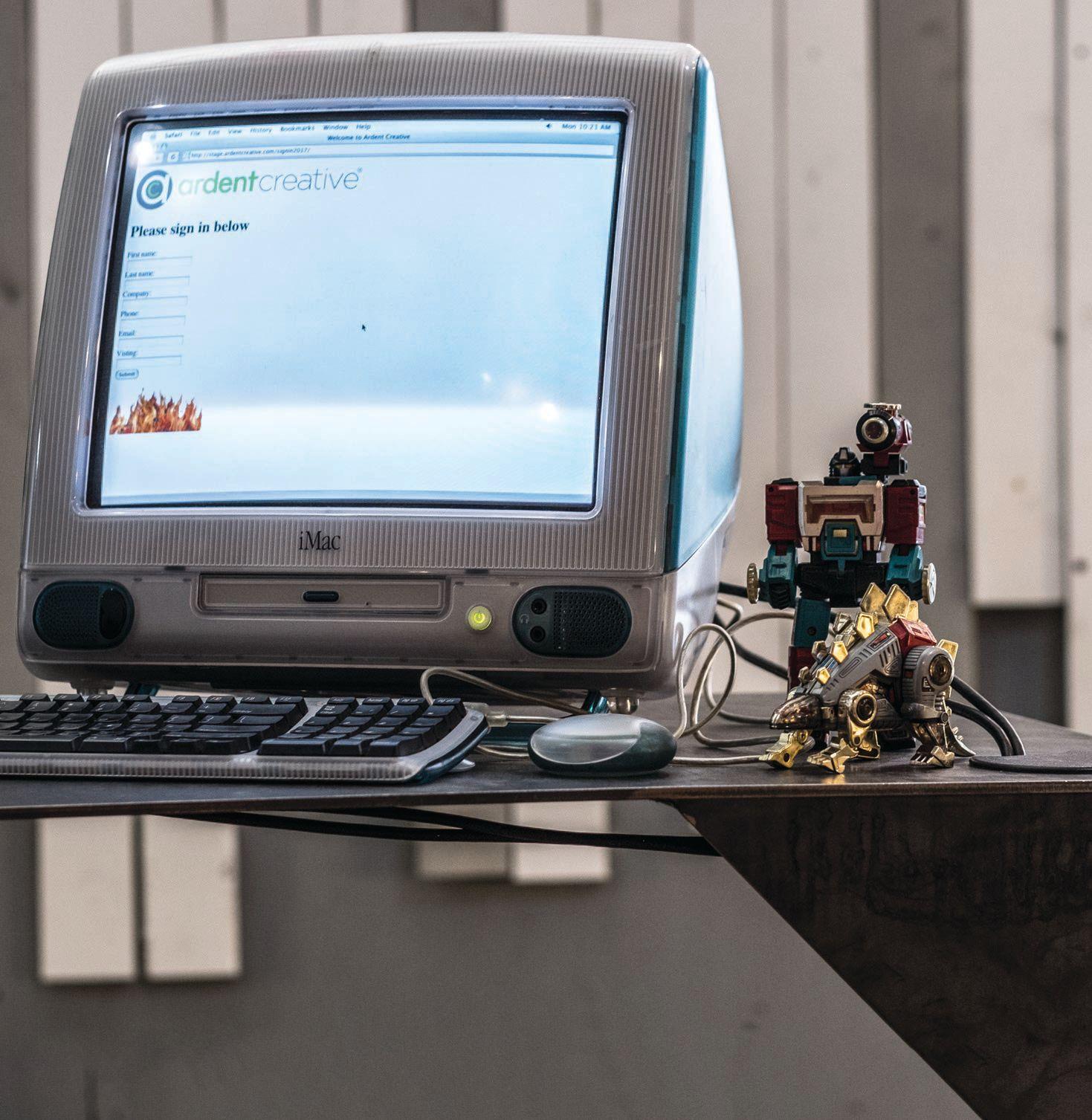
It’s not unusual for Ardent Creative employees to take their laptops to the common area, sit back on the couch and turn on an episode of NBC’s “The Office” — while working, of course, and in some ways, living out the mantra written on the wall behind them: “Work to Live > Live to Work.”
It’s a concept that Ardent has carried since the beginning. When the design, development and digital marketing firm incorporated in 2005, co-owners David Canington and Brad Ball looked to create a company that provided an appropriate work/life balance, offering perks like half-day Fridays and time off to take care of family concerns.
“I came from a sales job I made a lot of money, but I never got to see my wife,” Canington says. “We very much wanted to build a company that gave us the ability to watch

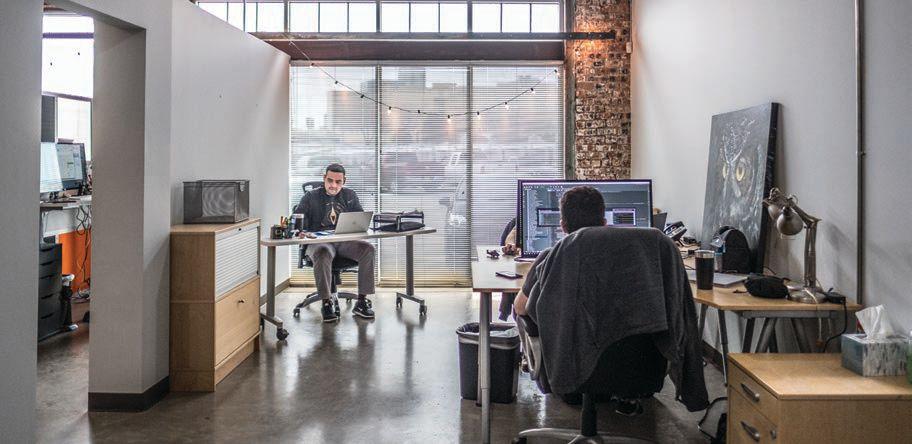
our kids grow up and have the freedom to do the things that we want to do — but we want the same for our staff.”
So, it made sense to create an office space that felt like home. After moving from South Jennings Avenue, to Richland Hills, then South Main Street, Ardent finally settled at 707 West Vickery Blvd. last year. The building, owned by Churchill Properties co-owner Will Churchill, is also home to companies like Quorum Architects and Teach for America. Ardent’s space is 5,578 square feet, part of which is still a work in progress, as the company is building additional conference and office space slated to be finished by April.
The space’s design was the brainchild of Ball and Canington themselves; architect Windmiller Properties took Canington’s layout and created the CAD drawings for the city. The result? A space with a decidedly industrial vibe, with all the standards like exposed ventilation, rusted metal beams in the ceiling, brick fronting the interior and touches of wood throughout.
But then, there are reminders of home: The reception and common areas mimic a living room. Action figures, many of which
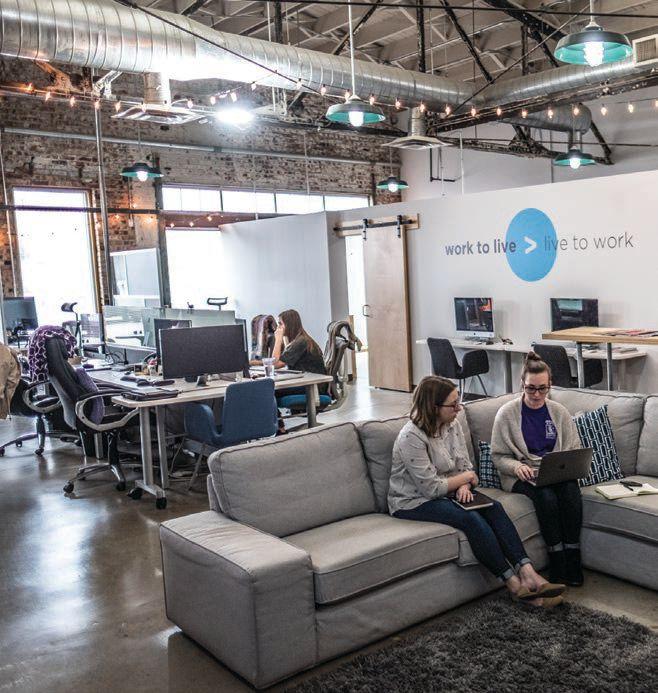

are 1980s Transformers from Canington’s personal collection, are scattered throughout (Batman is listed as a staff member on the company’s website). The common area’s TV is equipped with Netflix, Apple TV and an Xbox — and employees come to play.
“[At] lunchtime, this is filled up with people, just talking about their days,” Canington says. “We want to create an office that develops a culture where everyone can come together, collaborate, work as a team and feel like a family.”
Stepping through the metal and glass doorway, one enters the reception area, where a vintage iMac sits atop the front desk. Canington’s mother found it at a garage sale for $20 — it still works, and Ardent uses it to sign in guests. Another old iMac can be found in adjacent reception area — a cozy space marked by a midcentury modern leather couch and fluffy gray rug. Set up against the wall is an art piece made by art director Anna Lossau, featuring cutouts of Fort Worth landmarks forming the Ardent Creative logo.
Past the reception area, Ardent’s workspace follows an open


floor plan, separated by walls that stop short of the ceiling. Lighting plays a key role: Blue pendant lights illuminate the space, while string lights wind through the work area. Spotlights strategically point upward toward the ceiling to make the space feel bigger. Design and development departments mix and mingle — a drastic change from Ardent’s previous office on South Main, where four rooms kept each department separated.
“The overall goal is very much just to not be confined, to give a freedom of movement around the office,” Canington said.
While minimalist gray, black and white dominate the color palate, pops of blue, green and orange add life to the work area. School lockers sourced from schoollockers.com serve as storage space for employees.
Sliding wood doors divide the open work area from the solo offices and conference room. Two paintings, one of a white horse in the conference room and the other of Ardent’s logo in black and white just outside, are the handiwork of Ball himself, who has a Bachelor of Arts degree in painting and drawing from

Texas Wesleyan University. He also did the owl and lion paintings in the office.
A small hallway leads to what will soon be more offices and conference space for Ardent. For now, it’s mostly used as a photo studio, as Ardent does product photography for clients.
But most of the fun happens in the central living area, where another gray shag rug lies beside a comfortable gray sectional sofa. Behind the sofa, a wooden bar table and barstools provide additional seating. The wall behind the TV doubles as a whiteboard.
It’s a mix of work and play that’s reflective of Ardent’s culture — comfortable, not stuffy, and all about bringing “as much fun as we can bring to [the] day-to-day,” Ball says.
But no matter how much Ardent’s office tries to mimic home, according to Canington, nothing beats the real thing.
“I believe that your life outside of work is more important than your life inside of work,” he says, “because if you have that together, then everything you do in your work life will be great.”

Seven of Fort Worth’s strongest coffee drinks, for when you need that extra jolt
BY SAMANTHA CALIMBAHIN
Coffee — it’s what keeps the workers working.
As businesses grow and startups increase around Fort Worth, so are the coffee shops, with newcomers like Sons of Liberty Coffee and Ampersand answering
the call from professionals in need of a morning pick-me-up.
And while a simple black coffee or Americano might be enough to do the trick, some menu items really push the limits when it comes to caffeine and flavor strength. Now we’re not advocating caf-
feine as the healthiest form of energy, but for those days when you really need the extra boost, these drinks stand among the strongest served in Fort Worth’s coffee shops.
1311 W. Magnolia Ave., 835 Foch St.
The Yama is what general manager Bryan McKendry calls the “single malt scotch of coffee,” served in a whiskey glass. Avoca serves this Japanese cold brew two ways: one straight up and the other aged in an oak barrel — just like whiskey. The latter is the stronger of the two, and McKendry estimates that one ounce is equivalent to two cups of black coffee or four shots of espresso. Too strong for your taste? Opt for the Mythos, a soda-esque nitro cold brew sweetened with vanilla, or the Chupacabra, a sweeter cold-brew concoction with cream and cinnamon syrup. Now if you really want to bounce off the walls, order the Charlie Sheen, a simple mix of cold brew and Coke.
250 West Lancaster Ave., Ste. 140
The Red-Eye isn’t on the menu at Sons of Liberty Coffee, one of Fort Worth’s newest coffee shops that opened in downtown’s Pinnacle Bank Place in January. This house brew features two shots of espresso. As far as on-menu items that pack a punch, the Liberty Laatte can be served with two extra shots of espresso — that’s 4 ounces of espresso mixed with milk and simple syrup.
3009 Bledsoe St.
Vietnamese iced coffee has a reputation for being notoriously strong. At Ampersand the Cultural District’s newest neighbor, a docile coffee shop by day and rowdy club by night — the 12-ounce drink features three shots of espresso and sweetened condensed milk, topped with whipped cream. It’s the strongest thing on the menu.
Burned. What did you think we meant?
Failing to engage an expert to help negotiate your new lease or lease renewal could result in you getting burned. Whitebox is a complimentary full-service commercial real estate firm committed to getting you the best deal possible.
Double Espresso - Buon Giorno Coffee
915 Florence St.
Buon Giorno Coffee in downtown Fort Worth is known for its espresso drinks with an Italian slant. If you’re grabbing a cup to set you off for the workday, owner David Clarke recommends keeping it simple with “the Italian commuter’s favorite morning tipple: a double espresso, followed by another double espresso, and finally before rushing off to work, another double espresso!”
Java Nitro - Brewed
801 W. Magnolia Ave.
This one’s probably best consumed not before work, but Brewed’s Java Nitro is one of the strongest beverages on the menu. It’s a pint of Lakewood Temptress, an imperial milk stout, with two shots of espresso.
Macchiato – La Zona
1264 W. Magnolia Ave.
The “Saint Sofia” part of La Zona offers a small menu of espresso drinks and signature churros. If you’re not feeling a $10 Carajillo, a notably strong coffee and liqueur concoction, a simple Macchiato espresso topped with a dollop of milk foam — packs quite the punch on its own.
Matcha Latte - Craftwork Coffee Co.
4731 Camp Bowie Blvd., 1121 W. Magnolia Ave.
Okay, this one isn’t coffee. But if you need energy, Craftwork founder and CEO Riley Kiltz recommends the Matcha Latte. Matcha green tea is known to provide longlasting energy and, unlike coffee, creates a calmness rather than hype.


COFFEE VS. ESPRESSO: WHICH HAS MORE CAFFEINE? Well, it depends on how you look at it, according to Consumer Reports. Caffeine content depends on multiple factors like brand, type of bean and method of preparation, but generally, one ounce of espresso (that is, a shot) has about 63 milligrams of caffeine, while one ounce of regular coffee has about 12-16 milligrams of caffeine.
So, technically, espresso has more caffeine than regular coffee — but, considering most people consume either a cup of coffee (8 ounces), or an espresso-based beverage with one or two shots of espresso, a cup of coffee generally has more caffeine than your average espresso-based drink.


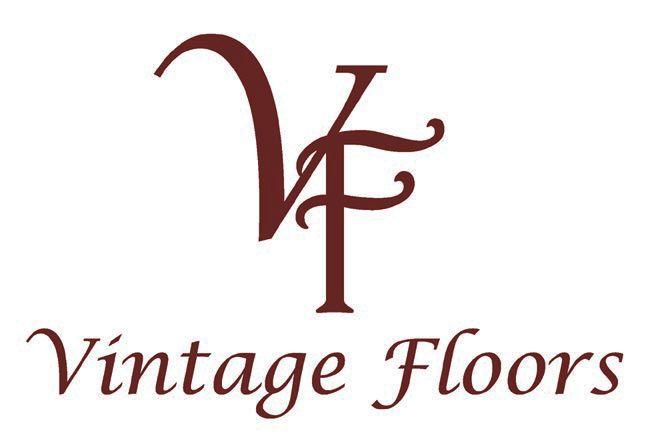
Here’s an idea for your next company event: Book a stadium suite. Too pricey? One app hopes to change that.
BY ANDREW VAN HEUSDEN

Picture this. You’re at a Rangers game working on closing a deal with a big client, but you can’t concentrate because an overserved fan is spilling his drink on you, and your noisy neighbor is encroaching on your elbow room.
Enter SuiteHop — a way for businesses to avoid the nosebleed seats and immerse themselves in the luxurious setting of a private suite.
“The SuiteHop platform is really bringing suites to a larger population of businesses that never could afford a full season lease,” SuiteHop CEO Todd Lindenbaum said. “But by the game or by the event, businesses of all sizes can find it really affordable.”
Here’s how it works: The app has a variety of partners, including teams of
venues, suite owners, and ticket brokers, who are using SuiteHop to list suites online. Customers can visit SuiteHop, search for the event they wish to attend, check out the listings until they find one they like, and book it. If there’s a suite that isn’t listed, customers can fill out a request to have SuiteHop find one.
“A lot of times we can track one down through listing partners that don’t have one listed on the site but would make one available,” Lindenbaum said.
Some of the suites will ask for credit card information when you reserve seating, while other listings will require you to fill out a confirmation form with a sales representative.
All SuiteHop experiences include game tickets and free parking, but not all venues provide free catering; however, Lindenbaum said SuiteHop provides a full-service team to help with catering if interested.
The app is a simple way for event planners and sports fans to access a wide variety of venues from across the U.S. — and, yes, this includes venues in the Fort Worth-Dallas area, which is one of the top three markets for SuiteHop, due to the popularity of AT&T Stadium and American Airlines Center.
“It’s a passionate fan base,” Lindenbaum said. “It’s a mobile city that has people who like to go out and have fun.”
But it’s not just for sports. SuiteHop can also book a suite for a concert or other event, if available. Lindenbaum said the most requested event on SuiteHop is Supercross.
SuiteHop is currently focusing on major sports leagues, but Lindenbaum said the company plans to continue to expand to reach little leagues and college sports. Translation: It might take some time before SuiteHop enters Dickies Arena or TCU.
“We have plans to continue to add venues, new cities, and provide the same type of access that we have been providing at DFW for years now,” Lindenbaum said. “This is a really big market, and we’re just getting started.”
NCAA March Madness Tournament Session 3: March 17 at American Airlines Center
Limited availability. Contact SuiteHop to find a suite.
Boston Bruins at Dallas Stars: March 23 at American Airlines Center Shared suites available, from $3,000.
Houston Astros at Texas Rangers: March 29 to April 1 at Globe Life Park
Limited availability. Contact online to find a suite.
Phoenix Suns at Dallas Mavericks: April 10 at American Airlines Center Suites from $9,375
Justin Timberlake concert: May 27 at American Airlines Center Suites from $10,000
Justin Timberlake concert: May 28 at American Airlines Center Suites from $26,780
Taylor Swift concert: October 5 at AT&T Stadium Suites from $9,994
Taylor Swift concert: October 6 at AT&T Stadium Suites from $9,994
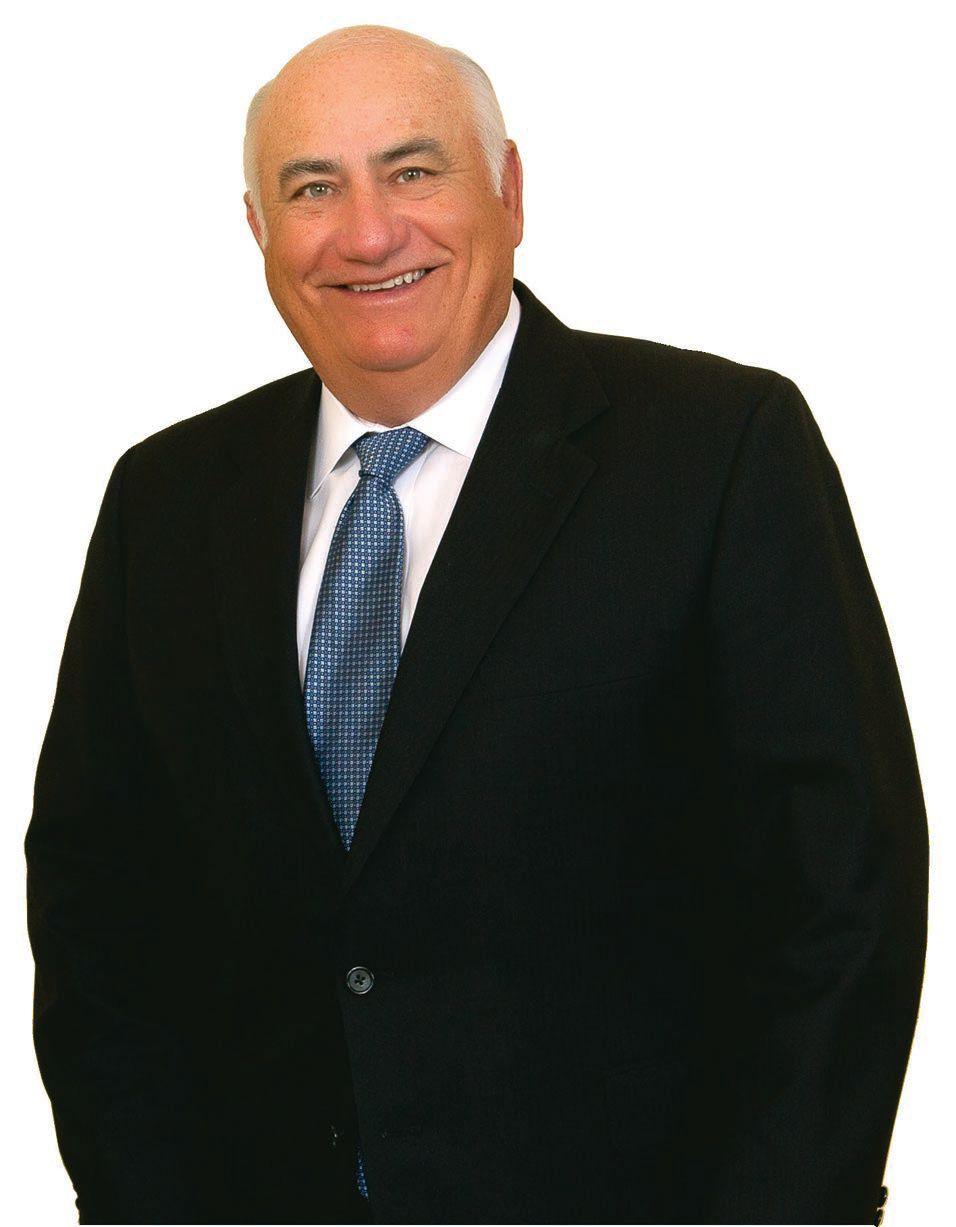


BY MEG HEMMERLE
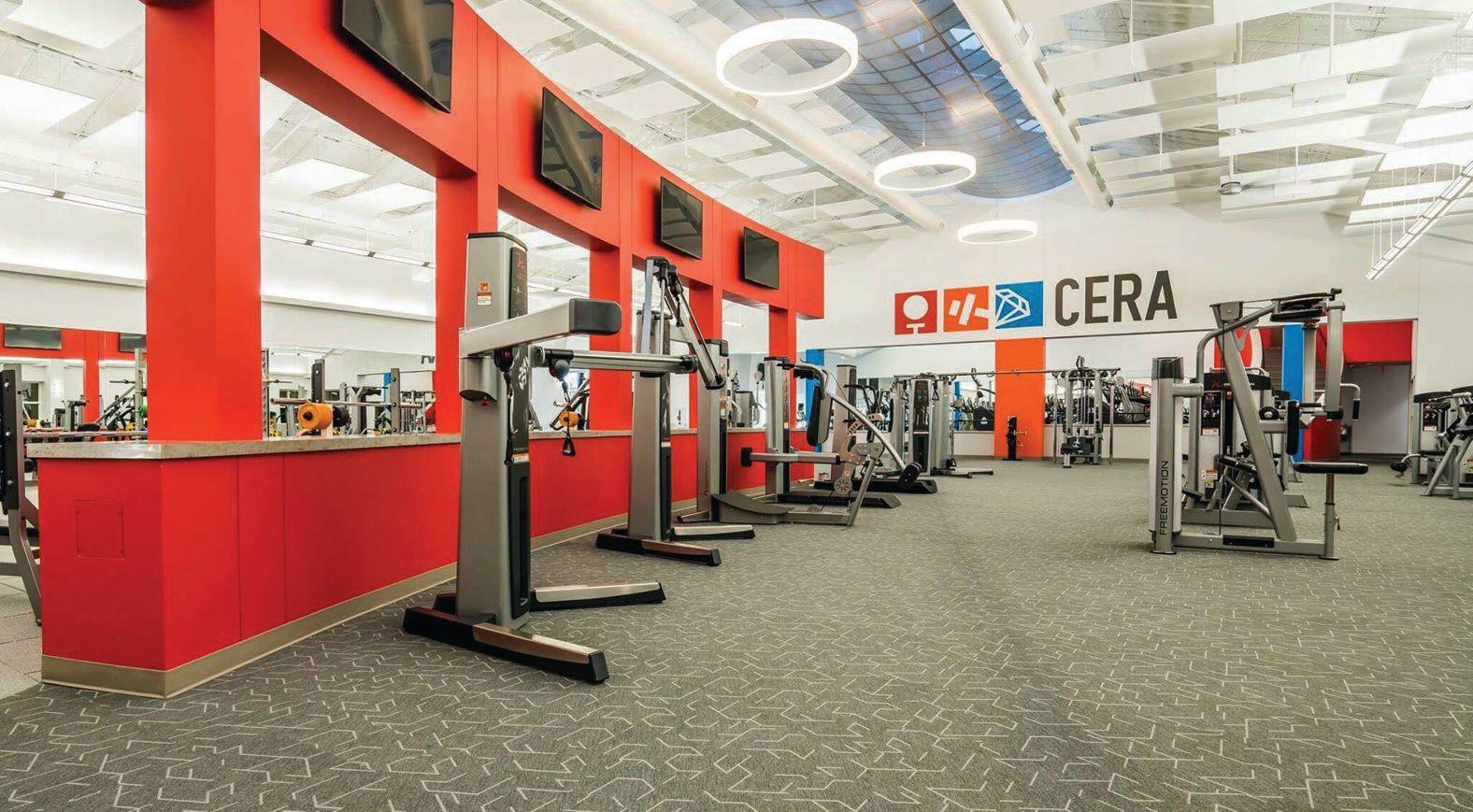
Following the multimilliondollar renovation of its 70,000-square-foot recreation complex, CERA — that is, the Corporate Employees Recreation Association is looking to add more members.
The private recreation center, which celebrated its grand opening Jan. 21 on Bryant Irvin Road, near the new Waterside development, offers membership to employers looking to provide gym access to employees. Companies like Acme Brick, the Aledo Independent School District and Apex Capital are among CERA’s current 15 members — CERA general manager Ted Shaw said he hopes to grow that number to 20 and have 5,000 fitness members.
So, who’s eligible to join? According to Shaw, CERA is looking for companies that promote a culture of wellness and show a commitment to keeping employees and retirees healthy.
To be considered for membership, companies must submit a letter to the CERA Board of Directors. The letter should clear-
ly state the company’s interest in making CERA activities and facilities available to employees, the company’s current number of employees, and the contact information for the company representative. As an employer, no fee is charged to the company for participating in the Associate Membership Program, and memberships last for 12 months from the date of agreement.
The CERA Board of Directors reviews each letter and decides whether or not to extend an invitation to join the recreation association. “We do expect the business to have at least 10 to 12 percent of their eligible employees be involved in at least one thing here,” Shaw said.
Members can choose among 14 organized programs, like the fitness center,
various sports leagues, or art classes like pottery. Companies then pay one annual fee based off of the chosen activities. “They may not want to be a part of the fitness center or play golf, but they might want to join the basketball league or do the camera club for a year and pay the $50 annual fee to meet twice a month,” Shaw said.
In addition to the CERA facility, members also have the option to play golf at the Squaw Creek Golf Course, located in Willow Park. Members can sponsor friends under guest memberships to enjoy amenities like the racquetball court together and sign up for a family membership as well, at an additional cost.
More information can be found at cerafw.org.
Before reopening as CERA, the facility was founded as the Consolidated Vultee Aircraft Corporation in 1949 and was later renamed General Dynamics and Lockheed Martin Recreation Association. CERA sold part of its land for the development of Waterside, where Whole Foods Market and The Grove are located, and in memory of the old facility, metal piping from the old playground was recycled into art sculptures that are now a part of The Grove.
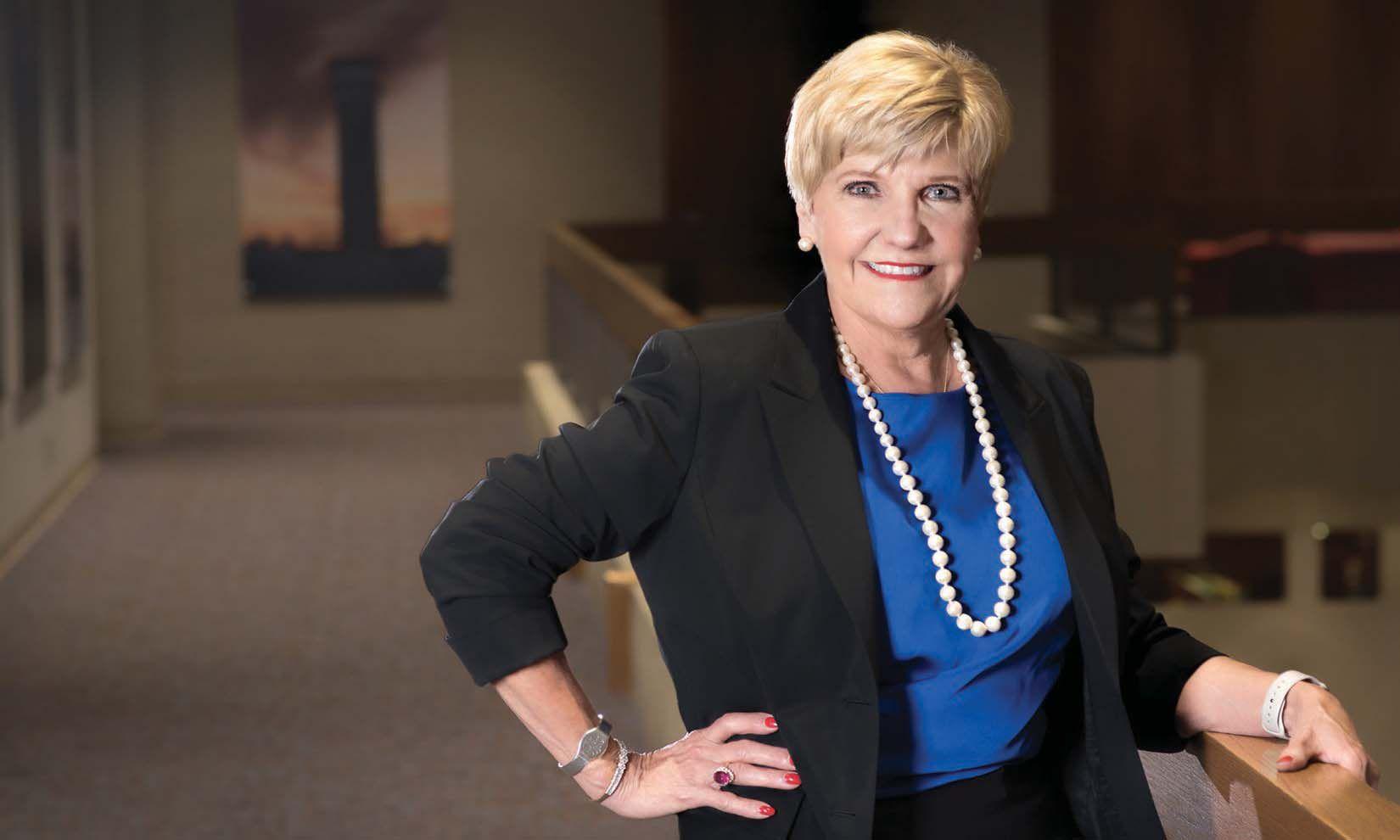




























Fort Worth entrepreneur – and part-time Texas legislator – Ramon Romero builds a life’s business in luxury pools, stone, and rehabbing houses in his Poly backyard. And about that restaurant…
BY SCOTT NISHIMURA / PHOTOGRAPHY

RAMON ROMERO JR.’S DAD WAS NEVER SHORT ON LESSONS HE DISPENSED TO HIS EIGHT CHILDREN WHEN THEY WERE GROWING UP IN SOUTHEAST FORT WORTH’S MIDDLE-CLASS POLY NEIGHBORHOOD. “MY DAD USED TO SAY, ‘WHEN YOU MAKE A LITTLE MONEY, SPEND A LITTLE MONEY,’” ROMERO SAYS. “BUT WHEN YOU SPEND MONEY, SPEND IT ON SOMETHING THAT GIVES YOU MONEY BACK. DON’T SPEND IT ON CARS. JEWELRY. WOMEN. SPEND IT ON DIRT.”
Ramon Romero Sr. retired from a 40-year job as a line butcher, making $13 an hour, but that was more than enough to make some investments, Romero says. “Whenever there was a house for sale in the neighborhood, he’d buy it.” Then he put his kids to work on it. “I grew up under the house or on the roof.”
“Compra ganado,” the dad would say. Buy cattle. “Back in those days, if you had cows, you won,” says Romero, whose father emigrated to the U.S. from Mexico on a work permit at age 20.
So, here’s Romero, now 44, driving across the bridge over Sycamore Creek, where he fished golf balls out of the stream, sold them to golfers on the course, and then decamped to Ashburn’s on East Rosedale Street for ice cream.
Here’s Romero driving the neighborhoods where he used to work beneath houses as a kid. Only now, he’s got his own houses he rehabs and keeps as rentals or flips to somebody he’d like to see move in and help bring Southeast Fort Worth back from beaten up.
Here’s Romero dropping by the main Poly offices of the pool coping company he started 23 years ago and the stone supply company he launched in the same offices after he had a bad experience with a vendor and decided, why, he’d just get into the business. “I’ll be straight with you,” Romero says. “Ramon is not rich. Ramon has a lot of stone to sell.” Ramon has built his business – he estimates an average $5 million in sales per year. Where he once focused on volume, now he likes to take high-end jobs where building the pool cap and accoutrements sometimes takes weeks. Where he once had about 80 employees, he now has about 40.
Here’s Romero, dropping by the midcentury modern home he bought in Poly at age 21 –adding the third home to his portfolio at the time – just a few blocks off of East Lancaster Street, known as Fort Worth’s homeless corridor. Romero still lives here. The 1-acre lot is a shady, quiet oasis, and, of course, there’s a pool and more in the backyard. “So,” Romero says, entering the backyard, “I build fireplaces, swimming pools, cabanas, outdoor kitchens.”
ing a profit anymore,” he says. “It’s about what input can I have on people’s lives.”
“Experience to Lead” Romero, who served on Fort Worth’s planning and zoning commissions, ran for City Council representing the Southeast Fort Worth district that includes Poly in 2012 and lost the race for an open seat. In Fort Worth, incumbents typically have establishment money lined up behind their re-election campaigns. Romero’s campaign was unusual in that he had a good number of those contributors behind him, even though he didn’t have the office.
Steve Murrin, the former city council member widely recognizable for his handlebar mustache and 10-gallon hats, still keeps the “Ramon Romero” folder he filled with notes from when he introduced Romero around ahead of that election. A flier in the folder touts Romero’s “experience to lead,” his ownership of businesses in Poly, service on the city’s golf advisory committee, presidency of the El Poly Pyramid Neighborhood Association, and family history in the district.
“He was on the zoning board, and I noticed him there. He always had a businessman’s approach to zoning.”
“He was on the zoning board, and I noticed him there,” Murrin remembers. “He always had a businessman’s approach to zoning. I just liked him personally. He could stand back and do what was good for the city of Fort Worth. I called all these people and said, here’s a guy who needs to get elected, and he won’t disappoint you. We raised about $8,000.” Romero subsequently got himself elected to the state Legislature, representing Southeast Fort Worth. “Life is hard for everyday folks,” he says. “These people don’t have a lobbyist. I consider myself a lobbyist for these folks.”
– Steve Murrin
Murrin says he has no idea of Romero’s political ambitions; Romero, a Democrat, keeps these tight, if he has ambitions beyond being a state legislator. “I think he’s the kind of guy who could be governor,” Murrin says. “I think he’s like me, and I consider myself to be a Remocratic Depublican. I go both ways.”
Finally, a short time later, here’s Romero, back behind the wheel, driving up East Lancaster toward downtown, up a little hill off of the street and into an encampment of tents and people who have no homes. Just days earlier, Romero had participated in a citywide homeless census. He wants to dispel what he says are a lot of myths about homelessness. “They’re not all mentally unstable. They’re not all vets with PTSD. There are a whole lot of normal folks out there.” Things have come full circle for Romero. “It’s not about mak-
Debra Smith, co-owner of Pulliam Pools, one of Romero’s earliest clients, has been one of his longest-standing mentors. Romero was 21 when he asked for work from Pulliam. “I gave him a chance,” Smith remembers. “Something happened on his first job, and I wasn’t going to let him back in, but he came to me, hat in hand, and asked for another chance.”
Romero became one of Pulliam’s highest-volume producers before he changed his focus to more complex jobs from high volume.
“They’re still my No. 1 client,” Romero says. “We do about $1 million in business with them” annually.
Smith isn’t saying what happened on that first job. “I don’t want to say what,” she says, laughing. “People who are very young don’t always understand keeping an even keel. It took him a lot to admit you may not have done your best. I find that to be 90 percent of success.”
Smith, a Republican, says she wouldn’t be surprised if Romero one day reached for national elected office. “I wouldn’t be surprised one iota if he reached for that level,” she said.
“God, Send Me a Signal” Romero’s business life hasn’t been free from lows. In June 2013, a man was killed after being shot in the parking lot of the popular restaurant, Picante Sports Cantina, that Romero had opened months earlier at East Rosedale and U.S. Highway 287. The incident, widely covered by local media, even made the New York Times Weekend Gun Report blog. “Do I have to talk about the restaurant business?” Romero says.
Picante represented Romero making adjustments on the fly. He and Pulliam Pools owner Barry Pulliam decided to go in together on a showroom on the site of a junkyard at Rosedale and U.S. 287 that Romero had purchased and cleaned up. Their plans for what the two envisioned as an outdoor products design center were scuttled when Pulliam learned he had cancer.
Romero had to move onto another idea, and he chose restaurant, investing $400,000 in buying, cleaning up and renovating the property. His aim was to bring a good restaurant, watering hole and neighborhood meeting place to the retail-starved highway gateway to Texas Wesleyan University. “We just need a place to have a quality restaurant,” Romero says of his rationale. “There isn’t any place to drink a beer at a quality establishment without going downtown.”

Right then, I put the restaurant up for sale.” He still owns the real estate, home to a Tex-Mex family-oriented restaurant that doesn’t serve alcohol.
Picante opened in May 2012 to strong reviews of the food, ambiance and experience, and it quickly became a meeting spot for Poly groups, as Romero predicted. Picante was doing $80,000-$90,000 a month in revenue, Romero says. “It was fairly successful,” he says. He and the staff were wary of hooligans, sending anybody whom they suspected of ill intentions away. Unfortunately, “there were some influences who brought the wrong people in,” Romero says.
Romero was in the restaurant when the late-night fight broke out. It poured into the parking lot, where shots erupted from a passing vehicle and a man was struck. The man wandered off and died later at a hospital. The restaurant’s “Picante” sign appeared prominently in television news coverage. Afterwards, Romero says he prayed.
“God, send me a signal.”
And God said, “I just did,” Romero says. “Loud and clear.
Today, life is considerably more peaceful for Romero. Besides his coping and stone businesses, he’s grown his portfolio of 36 residential and commercial properties since the recession, where his stock market portfolio got creamed in the downturn. “This is my moneymaker,” Romero says, showing off the measuring wheel he keeps in his 2013 Mercedes-Benz.
Most of the property is in Poly, around where Romero grew up. He has people working on a house in Morningside that he’s remodeling. He bought the house for $22,000 from the city and is investing about $60,000 in remodeling costs, including new roof, electric, plumbing, and siding, gutted interior with new windows and refinished wood floors. “Will it be worth 250 when the neighborhood changes? Absolutely.”
He’s also working on a rehab in South Hemphill Heights, paying $36,000 to buy it. He’s got another $50,000 in it. “This one is about
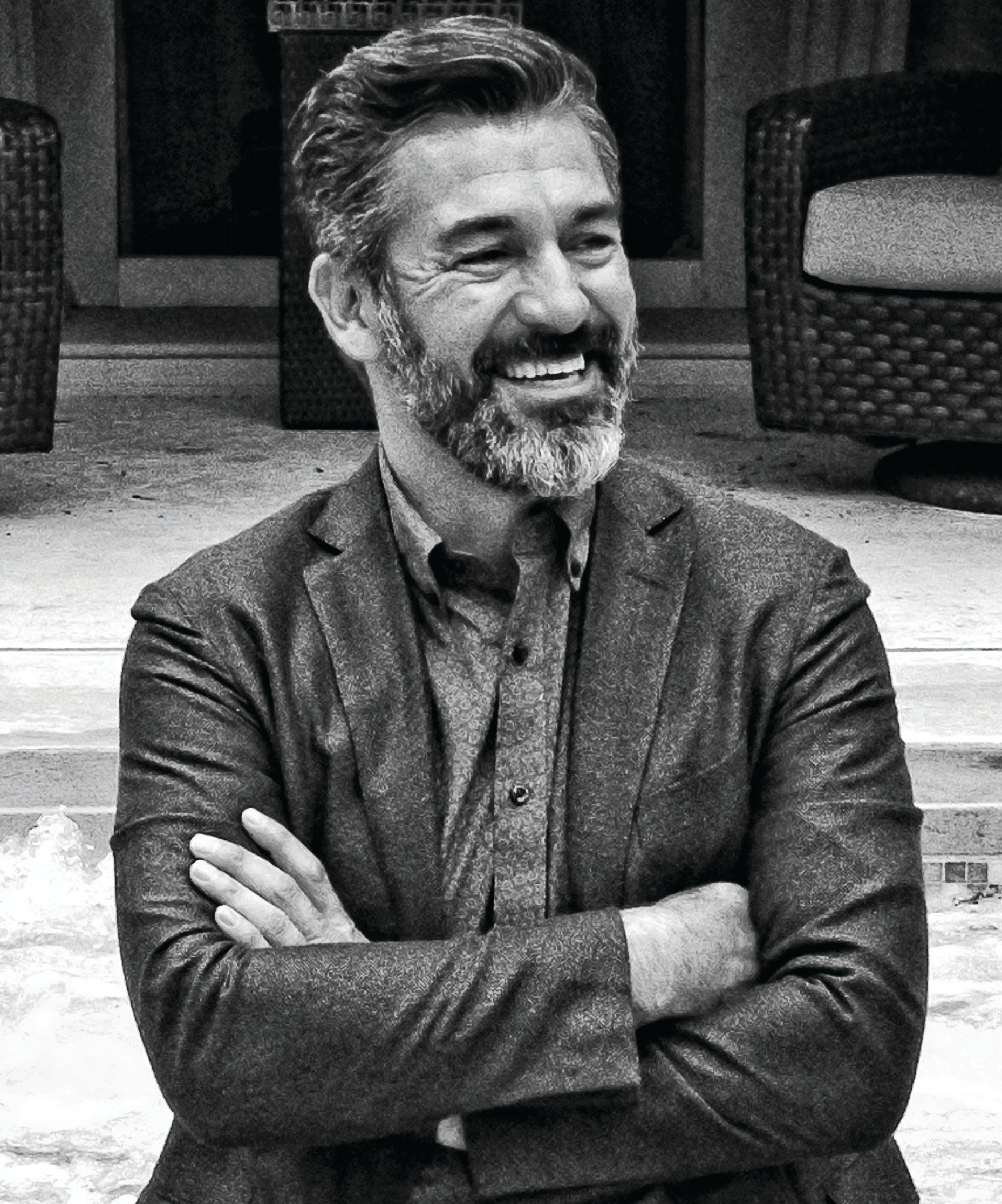
“Ramon is not rich. Ramon has a lot of stone to sell.”
– Ramon Romero
$100,000 away from complete renovation,” he says. “But you’re a house or two away from a really good block. For $20,000 [in cheap remodeling], I could have put somebody in paying $900 [rent], and it’d still be an eyesore.”
Romero prides himself on having been debt-free since he was 21, but says, lately, he’s taken on some debt in the rehab business.
Always a Salesman Romero says he’s always looked for ways to make money since he was a child. “Growing up Latino, the boys are told to go to work, and the girls are told to stay home and study,” he says.
He used to sit outside a self-service car wash on East Rosedale near his home. Anyone paying to clean their own car might pay $1.50, he says. Romero offered to wash customers’ cars for $5, pocketing the $3.50 profit.
As a high school sophomore, he worked as a part-time telemarketer, setting up health insurance appointments on commission and estimating he was making $450-$700 a week.
He left home at 16 years old. Ranked 7th in his class at Poly High School, he skipped a day. His father found out. “He said you skip one more day, and you’d better find somewhere else to live,” Romero says. So, Ramon left home, renting a house in Fort Worth's Arlington Heights. “I was already making a lot of money,” he says.
ness began to take off. “He found different quarries on his own, he drove all over the U.S. finding quarries,” she says. “He opened his own yard. That’s when his business really grew.”
Romero expanded A-Fast’s menu beyond coping – building the caps around the edges of pools. Figuring he was already on a job site doing stone work, he looked for other pieces of work he could pick up. A-Fast designs and creates plans for pool renovations and offers itself up as provider of everything in the outdoor setting. “What else can you do while you’re there?” Romero says. “Why is my portion of the job only $10,000?”
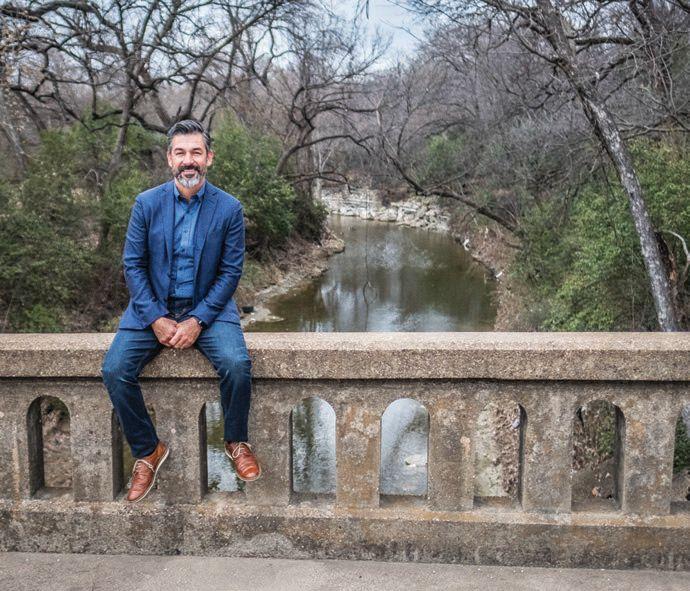
Romero scaled back on volume after the 2008 recession, but his average ticket has gone up. His ticket, once an average $4,000 with 25-30 jobs per week, now ranges between $30,000 and $50,000, with four to five jobs per week, he says. In 1995, Romero bought his third house, the one where he lives today, buying it out of businessman Jack Newell's estate for $21,500. Romero added a pool, waterfall, slide, cabana, outdoor kitchen, and fireplace, and bought more property around it, for a site that’s now 1.6 acres. It has two outbuildings, one of which Romero – divorced several years ago – is rehabbing for the offices of his fiancée, Marylou Cabral, a marriage and family counselor.
At 17, he bought his first house after his girlfriend – and future wife – became pregnant with their son. “Dad sold me a house for $7,000,” says Romero, who remodeled and lived in the garage apartment and rented the main house to a tenant.
He started an irrigation business because he wanted a skill. “I was spending a lot of time digging holes,” he says. Then in 1995, he went into the pool business, starting A-Fast Tile and Coping with one employee, his brother’s best friend, who’d been doing the work for 10 years. Romero knew nothing of pools – “I’d never even mixed a bucket of cement” – but he provided the capital, ran the back office while his employee managed the jobs, and learned the trade. “The expertise was there,” he says.
In 1999, Romero started Stone Mason Supply out of A-Fast’s Poly offices, after a prominent Fort Worth vendor charged him an $800 restocking fee for stone that Romero says the company incorrectly loaded. “I said, ‘man, I need to be in that business,’” Romero says. Smith, his Pulliam Pools mentor, says that’s when Romero’s busi-
Romero levers efficiencies from his businesses to lower the costs of the rehab jobs he does and add value, like nice countertops and floors. “When my guys have extra time, I put them to work on my projects,” he says. “We cut out the middlemen. We cut costs. We run a really tight ship.”
His dad, now 76, liked to help his tenants find homes to buy. “You can do a deal and help your community at the same time,” Romero says. Here’s where Romero does things differently than his dad, who he says would let things go with his properties. “I was always telling him, if you raise the rent, you can afford to fix these things,” Romero says.
On the flip side, “I wish I had a little more restraint. But you should build as if you were going to live in it yourself.”
Romero continues to live frugally. He started paying himself a $58,000 annual salary in 1999, and says he reinvests his surplus earnings in his businesses. “I’ve never paid myself more than that.”
He likes life outside the box. “I’ve been outside the box my whole life,” he says. “I’ve been a commissioned salesman everything I’ve ever done my whole life.”
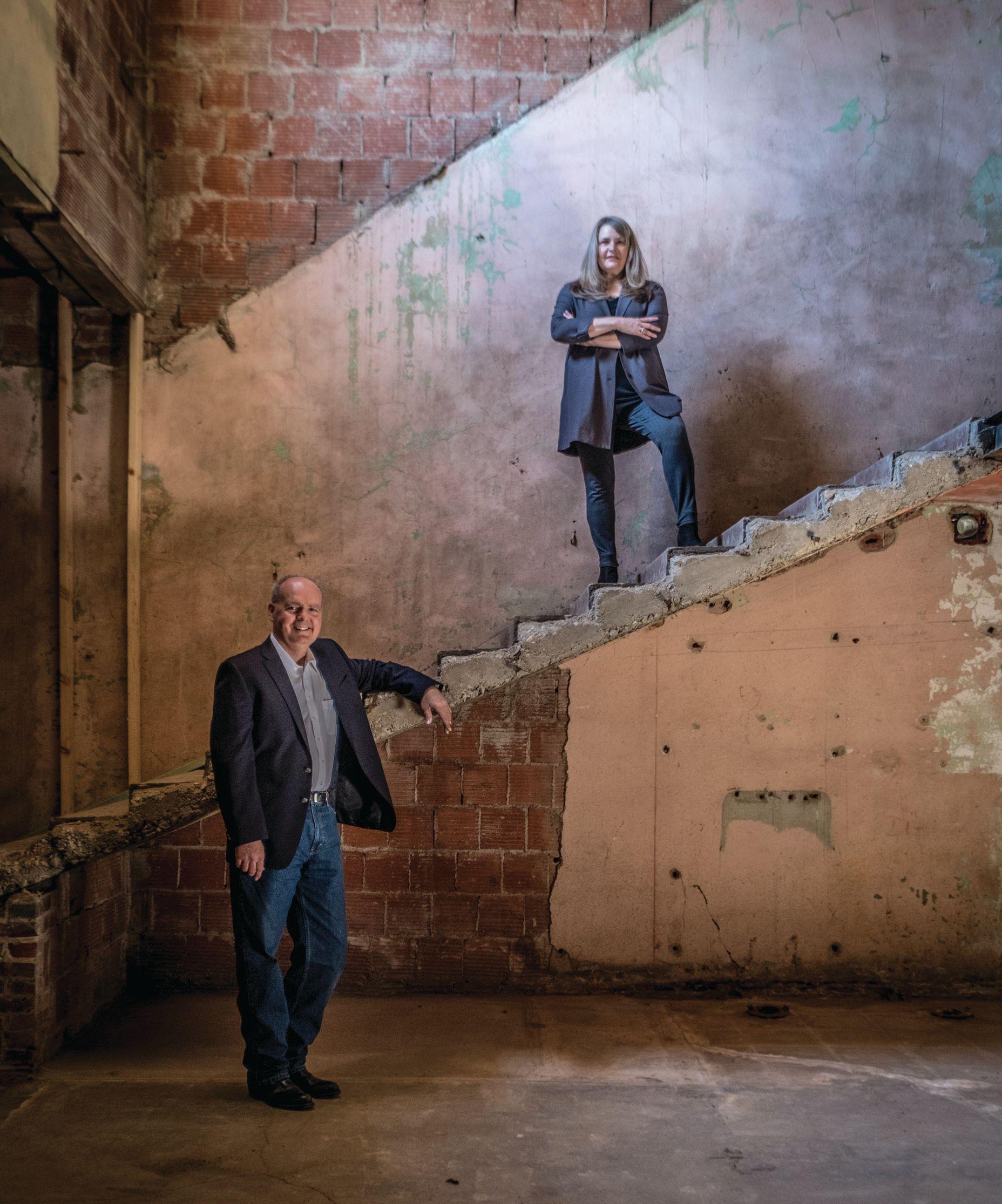
From Poly to Evans-Rosedale, Renaissance Heights, and Stop Six, developers slowly find their footing in Fort Worth’s grittiest neighborhoods.
BY SCOTT NISHIMURA
Jennifer Neil Farmer and Robb Farmer, who run a Fort Worth design-build firm that does projects internationally, were looking for a historic property to buy when they ran across a listing for an old mortuary. “It had been on the market, it was repped by a company in Dallas, and people were having a hard time getting in to see it,” Jennifer Farmer said in an interview. “It was listed as a mortuary. But I could tell from the parapet, it used to be a theater.”
The Farmers bought the building – the defunct Pinkston mortuary in Fort Worth’s emerging Evans-Rosedale corridor on the east side of Interstate 35 West, just across the highway from the burgeoning Near Southside. The Farmers set out to carefully clean up the site and make repairs, in preparation to market the shell for uses like a café and small retailers.
Then Amy McNutt, co-owner of the vegan Spiral Diner on the Near Southside’s West Magnolia Avenue, called in December with an idea she’d been hunting a site for: put an arthouse cinema in the Pinkston. The Farmers go before the city’s Zoning Commission March 14, seeking a rezoning to allow on-site alcohol sales and consumption to make way for McNutt’s theater. If they don’t get approval, the couple will revert to their original plan, Farmer said. “We work slowly,” she said. “We’re very
community-minded and careful.”
The Farmers are among the latest to join a slow return of development to Southeast Fort Worth. Developers are toeing the water in neighborhoods from Poly to Stop Six, attracted by available land, the city’s last cheap prices, and proximity to major highways and assets like downtown. But they're hindered by fragmented, often-unclear property ownership, wary of perceptions about safety and poverty, and unsure of demographic factors like disposable income. Land values are being pushed up, and deals are happening around clusters like Texas Wesleyan University, Evans-Rosedale, and the redeveloped Masonic Home property that’s now home to Renaissance Heights. Spec homebuilding is increasing, as homes built in small numbers have been selling.
The canvas is huge, but three clusters – Texas Wesleyan University, Evans-
Rosedale, and Renaissance Heights – form a big triangle, says Fred Slabach, president of Texas Wesleyan, which has aggressively pushed renewal around its Poly home.
“If we could connect them, we would have a pretty impressive triangle,” Slabach said in an interview. “It doesn’t take in the entirety of Southeast Fort Worth. But it is a pretty large portion of it.”
The intersection of Evans Avenue and East Rosedale Street is regarded by Southeast Fort Worth boosters as the quadrant’s lowest-hanging fruit, because it’s viewed as a Near Southside extension, falls beneath that city design overlay, and is covered by a neighborhood empowerment zone that waives permit fees. The city has already spent millions on improvements to the Evans Avenue and East Rosedale streetscapes, and public assets like the Ella Mae Shamblee Branch Library, Evans Plaza, Hazel Harvey Peace Center for Neighborhoods,
and a public art project at a fire station.
The Farmers’ plan, which they've kept under wraps ahead of the zoning hearing, is the latest to surface in the district. The Farmers, who run the F5designBuild firm, bought the property at 821 E. Terrell St. in early 2016. The building is 12,000 square feet in size, built in three stages starting in 1921, and the site is 46,000 square feet.
The Farmers’ research confirmed the building served as a theater in the 1930s. After McNutt contacted the Farmers, they recast their plan and applied to the city for rezoning to allow on-site alcohol sales and consumption for a theater, cinema, café or restaurant where at least half of revenue comes from ticket or food sales.
The Farmers expect to negotiate parking on the vacant land they own next to the building, as part of the rezoning, Jennifer Farmer said. The Evans-Rosedale area’s mixed-use zoning allows alcohol sales, but the city rezoned the Pinkston property in 2008 to disallow alcohol sales. The Farmers would expand the building to allow more than one theater screen for McNutt’s group, Farmer said. The city’s planning department in late February was finishing details of the plan that will be presented to the zoning commission, focusing on parking, a planning official said. Package liquor sales will likely remain barred. The City Council is scheduled to vote on the Zoning Commission’s recommendation April 3.
“If the citizen theater [proposal is approved], then we would break ground 2019,” Farmer said. “If the alcohol amendment doesn’t go through, then we’re not the home for the citizen theater. We can do a restaurant without alcohol; then, we go forward in 2017. We had not planned to expand the building. We were ready to submit [a permit application to the city] just for renovation of the shell.”
The Pinkston plan can serve as a catalyst in Evans-Rosedale, Stacy Marshall, executive director of the Southeast Fort Worth economic development nonprofit, said in an interview. “Once they get
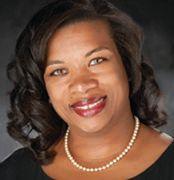
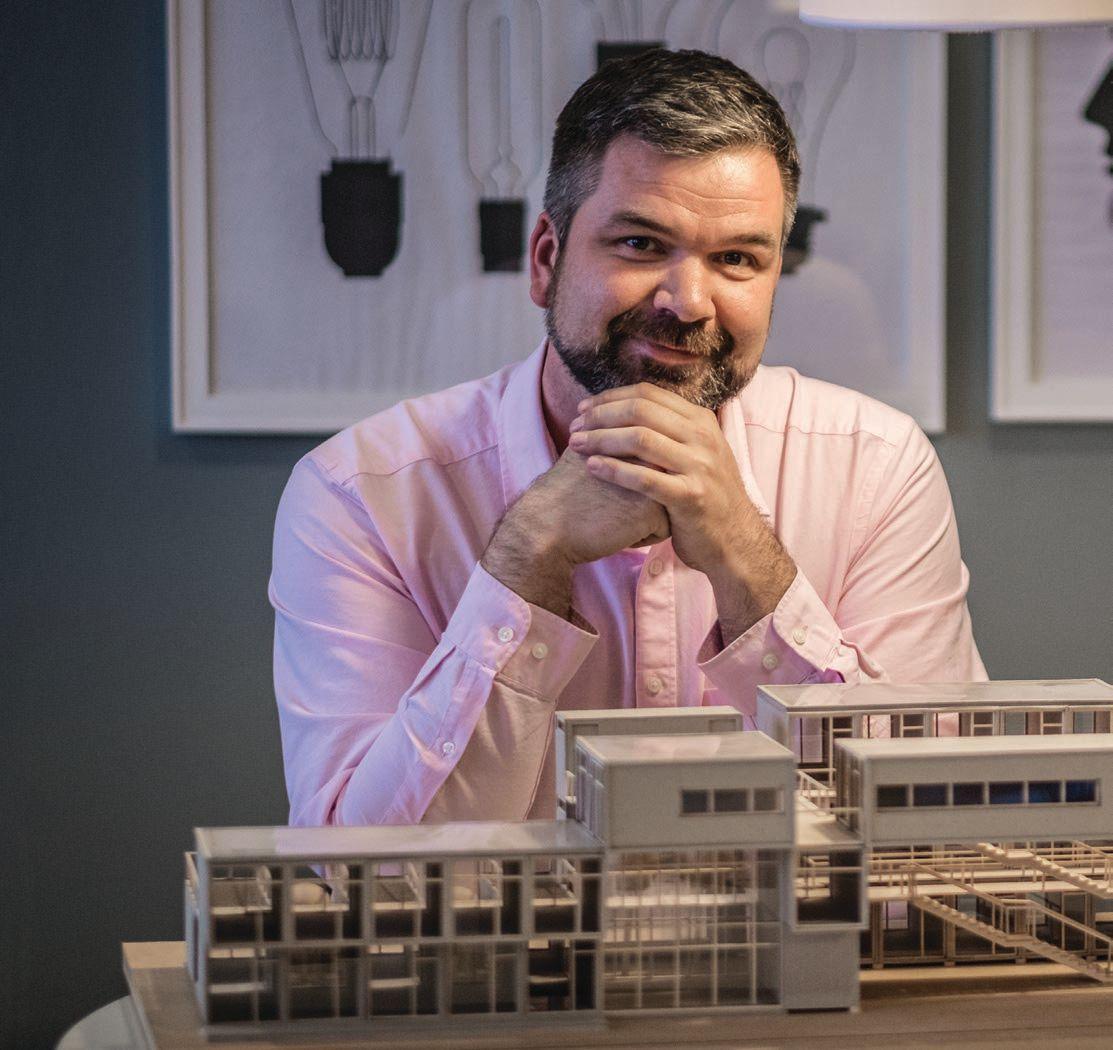
that building up and running, it will fill the blank spaces to the east.”
Asked in an interview what she thinks of the proposal, City Council member Kelly Allen Gray, whose district includes Evans-Rosedale, said, “I need it to be a little bit more precise. I need to know that it’s happening. I think if they can pull it off, it’s a great plan. They have some zoning issues to work through. I think it’ll be a great asset if they can truly do what they’re saying.”
Gray, an advocate for housing, said Evans-Rosedale is a good landing spot for commercial development. In discussions leading to the recent publication of a new citywide economic development plan, housing was ruled out for Evans-Rosedale because of a lack of enough land.
“It’s a prime location; it has literally every piece of infrastructure,” Gray said. Unclear title, an issue across Southeast Fort Worth, is not a problem in Evans-Rosedale.
“There’s not lots of different owners,” Gray said. “There’s not an issue of assembling property. Evans-Rosedale has great freeway access, close proximity to downtown. If the medical district is of interest to you, the proximity to the medical district is
great. It just makes sense.”
Elsewhere in the corridor, the city is preparing to issue a request for proposal, seeking a master planner to develop a rationale for a number of lots the city holds in Evans-Rosedale.
“We have been approached by three developers,” Marshall said. “The one that came closest was the [proposed limited service] hotel, one wanted to put townhomes on the frontage road and around [Missouri Avenue], and one wanted to put in a Family Dollar.”
On Evans south of East Rosedale, the Fort Worth architect Matthijs Melchiors is under construction on an unusual office building made of forty 160-square-foot recycled shipping containers. The building will have 32 offices available for rent, the 640-square-foot offices of Melchiors’ firm, now housed in the city’s IDEA Works incubator on the west side of I-35W, restrooms, and event, meeting, and break space.
The building finished 2017 at 60 percent pre-leased, says Melchiors, who's targeting the kinds of tenants who are growing out of the city's incubators across the highway. Lease rates are $850-$1,250

per month. Ground-level spaces could be used by micro-retailers or food and coffee service, Melchiors said.
Melchiors is putting the building up on a 5,000-square-foot lot. It’s costing him $1.2 million to $1.3 million, or about $200 per square foot to build, compared to about $250-$270 for traditional construction. But the savings are largely coming from his absorption of roles, he said in an interview.
Evans-Rosedale land prices, like elsewhere in Southeast Fort Worth, have shot up. Melchiors went under contract to buy the site in April 2016 at only $5 per square foot, compared to prices several times that on the Near Southside. Evans-Rosedale prices have since doubled to $10-$12 per square foot, Melchiors said. Safety perceptions have been a historic drag on prices. “In a lot of people’s minds, it’s a no-go area,” Melchiors said. “We’ve experienced no problems.”
Homebuilders have been slowly testing Southeast Fort Worth. Developer Tim Fleet has purchased 30 lots in Morningside in the last nine months and started construction on eight homes – four- and three-bedroom, two-bath homes that will
be listed for about $165,000, or $100 per square foot, an attractive entry price point.
“We’re just finishing the first ones,” Fleet, whose Riverside Homebuilders has also been building spec homes in West Fort Worth’s Como neighborhood, said in an interview. “We’ll see if they sell. If they start selling, we’ll start building more houses.”
The university continues to queue up redevelopment pieces along East Rosedale to U.S. Route 287, which it views as a gateway to the university. Texas Wesleyan has already spent $6.5 million to build four key pieces of the “Rosedale Renaissance”: a university “front door” with entryway and clock tower; United Methodist Church Central Texas Conference Service Center and bishop’s offices; renovated Polytechnic Firehouse, home to the university art department; and improvements on streets adjacent to campus that lever $32 million in public improvements to East Rosedale. More on tap designed to heighten opportunities for students to live, work and play on campus:
University Center: Spring groundbreaking for a $19 million, 44,000-squarefoot, two-story center on the mall that will house admissions, two game and study lounges; food court with two food concepts and a coffee shop; university bookstore relocated from a Texas Wesleyanowned strip center on East Rosedale; outdoor plaza and amphitheater; student meeting rooms; student affairs; and a ballroom that seats just under 300 people for a meal. Opening: fall 2019. “This is going to be a game-changer,” Slabach said. “All the data shows students who are engaged in the
university outside of class will be much more likely to persist and graduate.”
The ballroom will also allow the university to hold more of its own functions. “Right now, we don’t have a space on campus that will seat more than 150,” Slabach said. “We’ll be able to invite the community in. Our alumni association can have its annual banquet at campus.”
The University Center will also present a strong face for prospective students who are visiting, Slabach said. The university expects to sign a contract in late April with Byrne Construction, which will be construction manager at risk, Brian Franks, the university’s executive director of facilities and operations, said.
New apartments: The university will issue a request for proposals this spring for an apartment building with 50 two-bedroom units on land Texas Wesleyan owns east of the bishop’s house on East Rosedale, Slabach said. “We’re working with developers to get the exact configuration,” but it would likely be three to four stories, Slabach said.
The university is interested in a partnership under which the developer makes the investment and either manages the apartments or “turns it over to us,” Slabach said. Texas Wesleyan would work with its partner to set lease rates.
“There’s not an issue of assembling property. EvansRosedale has great freeway access, close proximity to downtown. It just makes sense.”
–
Fort Worth City Council member Kelly Allen Gray
Slabach says the university is over capacity on its dorm space, so it doesn’t believe it would have to offer the developer an occupancy guarantee. “If we’re able to work out an agreement with a developer, we would not need to put up any investment other than the land.” Tentative opening time frame is spring 2020, Slabach said. “I anticipate that would fill up pretty quickly.”
Stadium: Planned 3,000-seat soccer, track and field, and football stadium, potentially in partnership with the Fort Worth
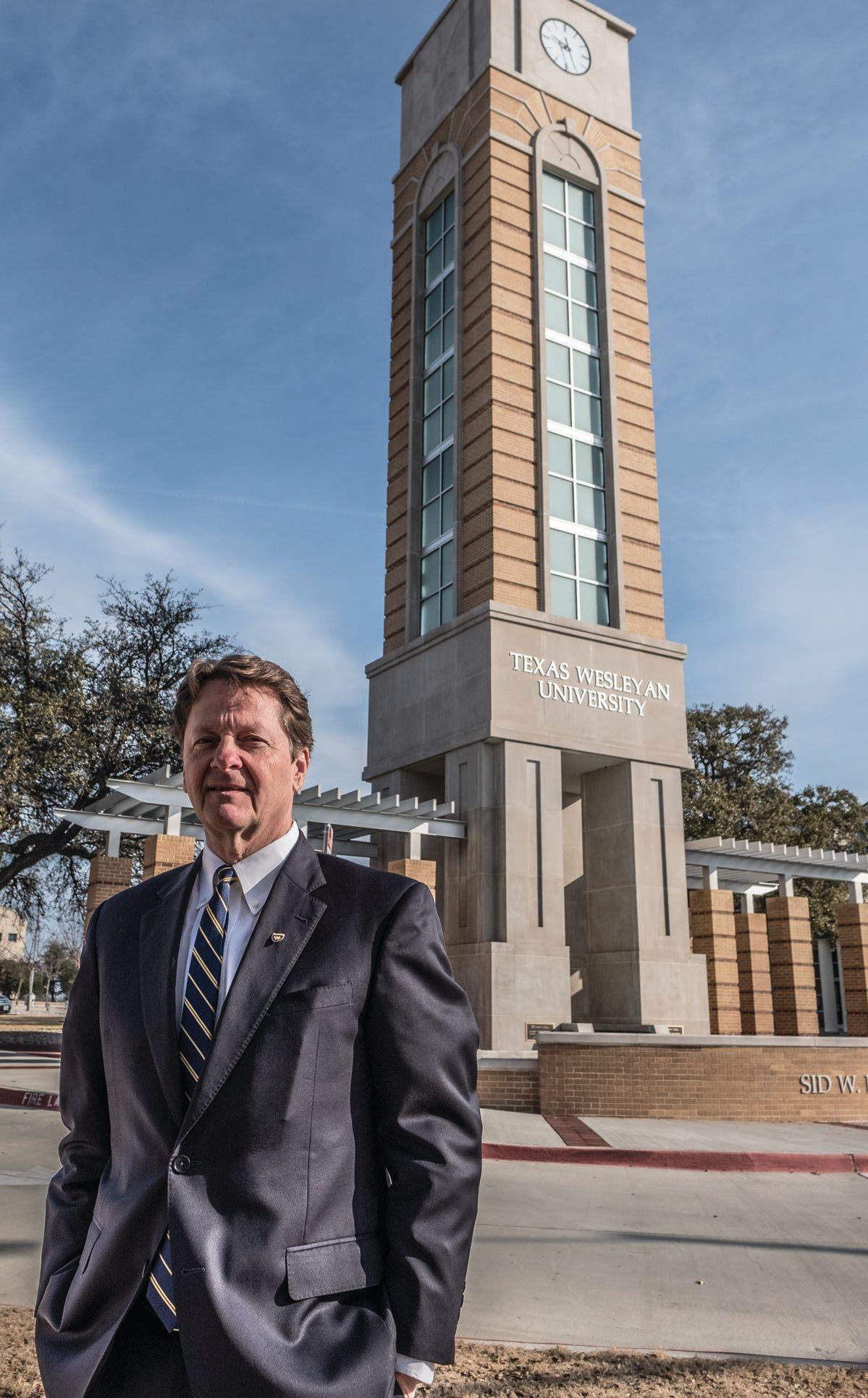
schools and Fort Worth Vaqueros minor league soccer team. The university’s board earlier this year gave the go-ahead for planning on the field, Slabach said, that would be a precursor to a stadium.
The university owns enough property on the west side of its campus for a field, but “we’d need to acquire a few additional pieces” to build a stadium, Slabach said. The field could open in fall 2019, and full stadium in fall 2021, Slabach said. “A lot of that would depend on the Fort Worth ISD.” The field and stadium could cost up to $15 million, Slabach said. The stadium would be home to Texas Wesleyan’s football team, which the university restarted last year for the first time since World War II. The Rams play their home games at the Fort Worth ISD’s Farrington Field.
Sycamore Park: The Rams baseball team is in its second year of playing home games at the city’s Sycamore Park off of East Rosedale, west of the university. The Wesleyan board earlier this year approved $630,000 in improvements, including work on bleachers, restrooms, concessions, dugouts, and fencing. The university is raising the money, Slabach said. “Once funding is in place, I anticipate six to nine months for design and permitting and then five months to complete the work,” Franks said.
The Sycamore Park and stadium pieces will increase activity around the campus, driving retail demand, Slabach said. The university is celebrating the signing of an incentive-laden lease with the Fort Worth restaurateur Ben Merritt, who this spring will open Ben’s Triple B: Biscuits, Burgers and Brews in a university-owned strip center on East Rosedale.
Vaughn’s mile-long stretch connects Texas Wesleyan and Renaissance Heights and consists of largely small commercial and residential lots, except for a vacant 32-lot, five-acre site a block off the street at its midpoint, held by the Ruiz family, longtime investors in Poly and surrounding neighborhoods.
Slabach of Texas Wesleyan sees Vaughn as a potential connector, but “the lots are smaller, and there’s probably not going to be major development – except one site,” the Ruizes’.
Brothers Dennis and Lucas Ruiz estimate the family owns about 50 single and multifamily residential rental properties in Poly and eight commercial properties there, including the location of a popular Tex-Mex restaurant on Vaughn, and controls one quarter of Vaughn by ownership between the university and Renaissance. They manage 300 rentals across the area.
The brothers’ father, a longtime tradesman, got into real estate years ago by buying a small group of houses. The brothers are beginning to explore what to do with their 5-acre site, approaching the university and city earlier this year. “We have a suggestion box,” Lucas Ruiz jokes.
Just six years ago, when Uplift Education opened a charter school on the grounds of the former Masonic Home in the justdeveloping 200-acre Renaissance Heights, “there was no place for our employees to pump gas; there was no place to eat lunch,” Yasmin Bhatia, Uplift’s CEO, says.
“We are just beginning to dive into the viability of the 5-acre site they pitched.”
–
Developer Chris Powers on a Vaughn Boulevard site
No longer. In 2013, Walmart opened at Renaissance, which created a new, modern landing spot in Southeast Fort Worth for national retailers and restaurants. Today, the 320,000-square-foot first phase of retail is full. The 142-apartment first phase of the Columbia Square apartments opened last year and are full; one-third of the units rent at market rates. A Cook Children’s clinic is open in the center.
from the internet – proves up statistics the ownership group discovered that showed residents from neighborhoods surrounding Renaissance were spending $70 million a year on groceries in Arlington, Baggett said. “There’s $500 million in income in [City Council] District 8 not being counted in the census,” he said.
• Senior Living: Renaissance in June will learn whether it’s won 9 percent tax credit financing for a five-story, 120-unit senior living building, Baggett said. Renaissance didn’t qualify last year but feels good about its chances this year. “This year, we will qualify,” he said. The developers will sell the credits they receive, allowing them to move forward with construction as early as next year, Baggett said.
The Ruizes also pitched the site in February to Chris Powers, CEO of Fort Capital, developer of the River District on Fort Worth’s West Side. Powers has invested in several successful small residential deals with the Ruizes over several years.
“We are just beginning to dive into the viability of the 5-acre site they pitched,” Powers says. “We believe most viable options for that site would require a public/ private partnership in some capacity. Back of the envelope looks like it is calling to be an affordable housing multifamily community. With its proximity to Texas Wesleyan, you might even build a product that attracts students to the area. Whatever we did, we would want it to be in partnership with the Ruiz family.”
The development could spring off of momentum from Texas Wesleyan and Renaissance, Powers says. “Both of those forces on either end of the site continue to build momentum for Vaughn.”
The YMCA of Metropolitan Fort Worth is under construction on a 35,000-squarefoot branch that will include a pool, preschool, youth space, wellness area, demonstration kitchen and full gym with walking track. Cook and the Y, which want to combat chronic health problems in Southeast Fort Worth, join ACH Child and Family Services, already in the development and expanding.
More’s coming:
• Retail: Renaissance can build another 180,000 square feet of retail space. The partnership that owns it, including the Iowa-based Lockard, is talking to a national movieplex operator, Hap Baggett, managing partner for Renaissance’s ownership group, said in an interview. The site is on U.S. 287 at East Berry. “That’s our big visibility, and the one we’ve held to the last,” Baggett said. Retail sales in the development were up 15 percent in 2017 and have grown in four consecutive years, he said. The retail strength – in an era when traditional brick-and-mortar is under siege
• Townhomes: The partnership is working on this phase of the development and expects to decide in April “what we’re going to build and at what price point,” Baggett said. The units would be offered for sale. “We’re going full bore on that now.”
The Renaissance partners have a second phase of apartments in their plan – 150 units – but they’d have to wait two years from their latest round of TDHCA tax credits to apply again, Baggett said. The partnership also plans single-family homes. “We’re 24 months away from design product,” Baggett said.
After taking a backseat to the development of Renaissance, activity at Berry/Riverside – long regarded as Southeast Fort Worth’s next significant real estate play because of its proximity to Interstate 35W, TCU, and downtown – is moving forward again.
The Fort Worth developer Michael Mallick, in a partnership he entered in 2004 with the city, demolished more than 1,000 blighted apartments at the intersection’s northwest corner. In their place, Mallick opened the 232-lot Sierra Vista subdivision in 2007, with Historymaker Homes build-

ing and selling 92 homes through March 2008. Building ground to a halt during the recession, and Mallick diverted his attention to facilitating the redevelopment of the Masonic Home property, which he bought and subdivided in 2006.
What’s new:
• Homebuilding: Wall Homes of Arlington, after acquiring the remaining 131 Sierra Vista lots from Mallick in 2016 and selling only three homes that year, in 2017 sold 50 homes it built. Through the first two months of 2018, Wall sold 18 houses. It has 28 lots remaining and expects to sell those by midyear, the company’s Christopher Torres said in an interview. Wall, a production builder putting up homes today around the region, is looking for the next place to build in, Erin Kolp, a spokeswoman, said. “It’s going to depend on the lot price,” she said.
In Sierra Vista, Wall is building entry-level homes between 1,329 and 2,071 square feet and selling them for between $80 and $100 per square foot. What changed after the slow start: Buyers didn’t respond to the company's first model, a one-story on a main road that leads into the subdivision.
Wall sold the model and built a new one, a large two-story with open family spaces and amenities like big walk-in closets, in Sierra Vista's interior, across from a small community picnic and playground area the company built. Sales took off, led by families and others who wanted the space, new construction, inexpensive price, and location, Torres and Kolp said.
“You’re close to every major highway,” Torres says. “The hospitals. Downtown. TCU is three miles up the road. You always have things to do.”
• Senior living: Mallick has an 8.8-acre piece, also at the northwest corner of the intersection, that’s under contract to Sphinx Development Corp. for a proposed senior multifamily development. Sphinx in late March expects to learn from the state whether it’s been approved for 4 percent tax credit financing, Mallick said in an interview. “They tell me it looks good.” Sphinx intends to build a 272-unit dense urban-styled project.
• Office space: At the Northeast corner of the intersection, Mallick owns a 34.8-acre commercial tract with a vacant 150,000-square-foot building. Before Renaissance drew Walmart, other big box stores and chain restaurants, Mallick’s original plan was to redevelop the site as retail. Even though Southeast Fort Worth boosters have viewed the intersection as potentially attractive to national retailers, Mallick is marketing it for office, light industrial, or logistics, and he recently pitched it to a major office user already in Fort Worth. “We’d have to rezone it,” he says. With Renaissance, “we basically cannibalized ourselves. We are adequately retailed up at Renaissance. There’s no need for 34
acres of retail in Southeast Fort Worth, in this quadrant. I wish this were in Stop Six” further south.
Elsewhere near the intersection, the Firestone & Robertson Distilling Co. last year opened its Whiskey Ranch venue, absorbing the declining Glen Garden Country Club. And businessman Jim Dunnagan, who owns a defunct 1950s-era trash incinerator, has been working with businesswoman Erin Razo to develop a plan for the six acres and position themselves to bid for 40 acres of surrounding city property.
Razo says the site draws creatives like artists and photographers on weekends. Potential uses include skatepark, special event space, urban farming, farmers market, and tiny houses for people who need homes.
“Really trying to treat it as pop-up space initially while it grows organically,” she said.
The neighborhood around Fort Worth’s Dunbar High School was once the sixth stop on an interurban line that connected Fort Worth and Dallas. Today, it has a jobless rate 2 1/2 times the Fort Worth average, 78 percent of the population is low-tomoderate income, and crime is high on a per-capita basis.
“There’s no need for 34 acres of retail in Southeast Fort Worth, in this quadrant. I wish this were in Stop Six.”
– Developer Michael Mallick
Stop Six’s renewal has been hung on plans for redevelopment of the Fort Worth Housing Solutions’ Cavile Place housing project, led by Housing Solutions and the city, but the two are preparing to unwind from the original plan.
The original plan: Demolish Cavile and replace its 300 units with new ones, including 225 in the Cavile neighborhood, in partnership with developers. The city is also investing millions in improvements to the nearby East Rosedale. But Housing Solutions and the city are changing their plan because market conditions rendered tax credits to be used in the
project worthless, Mary-Margaret Lemons, Housing Solutions’ executive director, said. An $8 million gap in expected development costs exists for the first 48 units, she said.
Housing Solutions spent about $1 million over several years buying 81 single-family residential lots around Cavile Place in preparation for the redevelopment. Beginning later this spring, Housing Solutions and the city, which owns less than 30 tax-foreclosed properties in Stop Six, will begin releasing them for sale in the private market, Lemons and Aubrey Thagard, the city’s Neighborhood Services director, said.
The lots will gradually be released in batches of a dozen or so, with the goal of selling them to “quality builders and nonprofits with a track record of providing housing, people who’ve got the capacity to do multiple parcels,” Thagard said. The agreements will require construction within a specified period, he said.
Lemons said Housing Solutions wants to sell at least the "majority" of the lots. Thagard said he thought it likely that all will be sold.
It’s not clear whether the lots will be put up for sale individually or in packages, or how they’ll be priced. “We’re still working through all that,” Thagard said.
Lot prices are up in Stop Six. Standard single-family lots, which builders might have acquired a few years ago for $2,000, are now offered for as much as $14,000.
Housing Solutions paid $12,000 on average for its single-family lots. Asked whether it was willing to take a loss in the divestiture, Lemons said, “FWHS uses all proceeds to further our affordable housing mission, so we always look for the best return on our investment.”
Cavile's status is unclear, Lemons said. “We’re really evaluating all of our options to redevelop,” she said. City council member Gyna Bivens, whose district includes Stop Six, said, “When they decide what they’re doing, I’ll be ready to help them.”
Builders already have expressed interest in building in Stop Six, characterized by wide swaths of vacant land, but have been frustrated by lack of response from the city.
Lot prices, custom building and speculative building have risen since the City Council lifted a historic overlay requiring the exteriors of newly constructed and remodeled homes to meet historic standards. Bivens, over criticism from some neighborhood leaders, argued the overlay was unnecessarily keeping redevelopment at bay.
Tim Fleet, the Fort Worth developer building spec homes in Morningside and Como, said he’s offered to buy lots in Stop Six from the city but hasn’t heard back. “We’ve made offers to buy five lots,” he said.
A small number of low-volume builders has been putting up homes in Stop Six.
Carlos Harris, one builder, recently sold two 1,650-square-foot homes he built sideby-side on spec. The homes, with 10-foot ceilings, granite countertops, tile floors and sitting on half-acre lots, sold within four days at $185,000 and $188,000, said Harris, who has six other lots in Stop Six.
While incremental, Harris said his success shows demand inside Loop 820 for good-quality homes of size at reasonable prices, Harris said. “You are right here in one central location,” Harris said.
Lester Jones, who grew up in Stop Six, has been building houses in the area for years, first with his dad, who died in 1996. Jones earlier this year completed his first
spec home in Stop Six, a 1,500-square-foot three-bedroom, two-bath, two-car-garage brick home that he’s listed for $185,000 – a strong $123 per square foot.
Jones has three other standard singlefamily lots, including one he bought two years ago from the city for $2,000. “Yesterday, a guy called and offered me six lots at $14,000 apiece,” he said in an interview in early February at the breakfast bar of the new Willie Street home, which Jones decked out with engineered wood floors and granite countertops.
Jones, who lives with his wife in Everman, came up with the idea to invest in Stop Six after watching a documentary about a Detroit developer who contributed to that city’s comeback by focusing on one house at a time.
“I told my wife we could do the same thing in Stop Six,” Jones said. “We called it our Lazarus Project – bring it back from the dead. People are interested in the area. Mainly, it’s people who grew up here, left, and have come back.”
Surging lot prices are still within the realm of what’s economically possible for a newly built home in the neighborhood, Jones said. “It hasn’t gone past what’s reasonable, but it’s certainly done its thing,” he said.

Fort Worth's Lake Como, viewed as a key asset in any turnaround of the historic West Side neighborhood

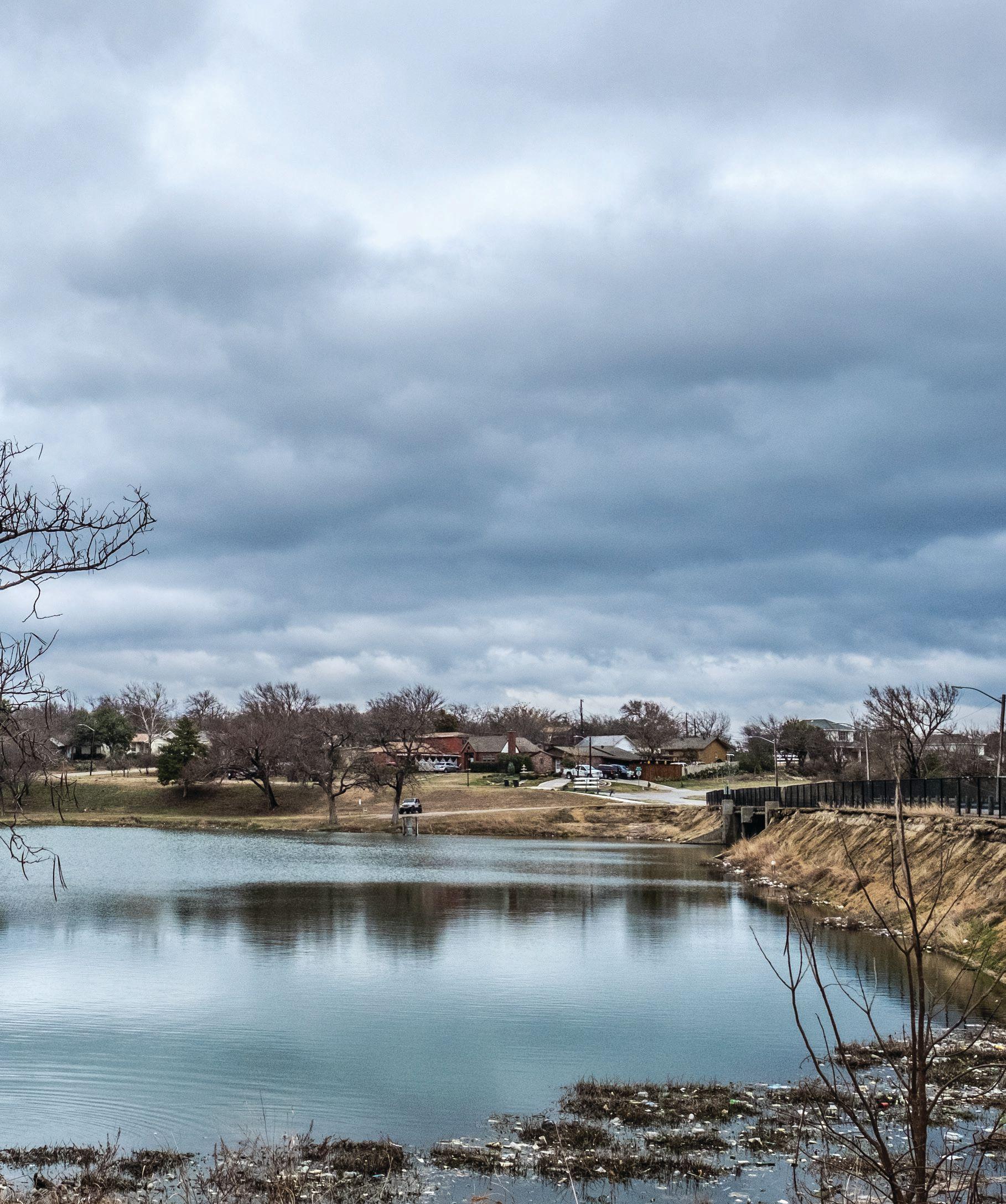




A developer builds 13 spec homes in Como, and they sell in a flash. Townhomes are also in store for the southeast side of Lake Como. What’s next?
BY SCOTT NISHIMURA
Tim
Fleet has been building homes and developing property for years. And you’ll find him across the region, from Decatur to Ennis and Fort Worth interior city neighborhoods like Como, Morningside and the North Side. Why the interior city?
“We could make more money elsewhere, but we’re very interested in the inner city,” Fleet says. “We’ve invested money in the inner city. I think it’s important that people who have money help people who don’t have money. If more people in the inner city own their homes, that helps everybody.”
Fleet is one of a small number of developers who are working in Como – a neighborhood rife with vacant lots and seemingly stuck in a time warp – in a search for convenient interior-city sites with attractive prices. Como’s population has declined by half from a peak 7,063 in 1960, the neighborhood suffering the impacts of desegregation, mortgage redlining, crime and drug activity.
More than two years ago, Fleet, who builds under the Riverside Homebuilders moniker, bought 15 lots in Como for $5,000 apiece and built 13 homes. Two of the lots were “unbuildable,” he says, for issues that turned up later, like unclear title.
The four- and three-bedroom homes, with features like open floor plans, appliance packages and foam insulation, quickly sold starting at $160,000, Fleet says. “These have the same energy efficiency as our most expensive homes,” Fleet says. “Same warranty. I have an unlimited budget for warranty” – one year for certain items, and up to 10 years. But within the first year, he says he fixes anything that goes wrong.
largest homebuilder working in Como.
Estrus Tucker, a leadership and civic development consultant and facilitator of the Como Neighborhood Advisory Council, has watched as development interest has ratcheted up. Inquiries about property in the neighborhood have increased considerably since 2015. Neighborhood leadership has received about 20 calls from builders, investors, and developers in the last eight months, Tucker says.
At home, where he has three properties in Como, “I get about 30 slips of paper per week,” he says. With Como’s affordable prices, vacant lots and poverty, “the handwriting has been on the wall.”
Fleet is no small builder. His company sold 600 lots last year and closed sales of 286 homes, he says. This year, he’s budgeted to close on 420 houses and 900 lots, including 40-45 houses in the interior neighborhoods of Como, Morningside, and Northside.
“Workforce housing is what’s missing. It’s going to be pushed to the perimeter, and the central city is not going to be affordable to the average Fort Worth resident.”
Fleet has found strong demand for his houses in Como. “I don’t think we’ve had a house sit 45 days,” he says. And he’s purchased more lots, with 20 today. Lot prices have gone up, as they have in Fort Worth’s interior neighborhoods. The most Fleet says he’ll pay in Como is $12,000 per lot today.
– Estrus Tucker, Como Neighborhood Advisory Council facilitator
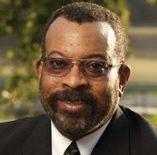
Fleet’s not alone. The Houston developer InTown Homes, working with Phillip Poole’s TownSite real estate development firm in Fort Worth, plans single-family homes, attached rowhouses, and a public open space on never-developed land on the southeast side of Lake Como, the small lake that borders the neighborhood on its west side and is fronted by the Sunset Heights neighborhood on the east side. The project, through rezoning, is now going through a replatting at the city. “That will determine density,” Poole said.
Townhomes, courtyard-styled homes, and row houses are products Como needs, Poole says. “They’re missing in Como.” Trinity Habitat for Humanity has chosen Como as one of three focus neighborhoods for the several years, including Hillside/Morningside and Carver Heights East in Southeast Fort Worth, and is the
Fleet quickly built trust among Como residents and leaders by appearing before the neighborhood council, calling on city leaders, and listening to residents’ concerns, Tucker says.
“Tim did his homework, he showed us his plans, answered questions about design,” Tucker says. “The community did not want a lot of small houses. They didn’t want homes that looked like they were for poor people. And there was an appreciation of garages.” Fleet also donated fencing to a community project, deepening the trust, Tucker says.
Some homeowners were worried about new development driving up property values and taxes, Tucker says. “That was in the room. It just wasn’t a dominant voice. Anything happening in Como, there’s a concern about prices and taxes going up.”
By contrast, neighborhood leaders chose not to help a Realtor whom they felt was disingenuous, Tucker says. “What he wanted was access to individuals who own lots. He wanted us to be a mediator. It felt insulting.”
Given Como’s struggles with issues like poverty, absentee landlords, and aging, Tucker says he doesn’t fear the neighborhood is about to get run over by gentrification. Using the Near West Side neighborhood of Linwood in the West 7th corridor as an example (Linwood’s modest frame houses were rapidly swallowed up and are being converted to luxury urban housing), Tucker said “There’s not likely to be a Linwood within the next five years. But 15, there could very well be.”
The city has kicked in, approving a strategic plan last year that covers Como and part of the Sunset Heights neighborhood, dotted by modest, older homes. The plan highlights the decrease in population and loss of small businesses and made several recommendations:
• Development: Facilitate a range of pedestrian-oriented residential development; establish the north-south Horne Street as a “vibrant business district” with higher-density development on the northern section and more neighborhood retail and commercial development on the middle to northern segments; apply consistent design guidelines for new development and substantial redevelopment projects; promote the fee waivers offered by the city’s Como Neighborhood Empowerment Zone.
• Housing: Improve Como’s housing stock with new affordable and market-rate housing; limited higher-density mixed-income housing in targeted locations; stabilized and rehabilitated existing housing stock; support of higher-density, “well-designed” townhomes, apartments and condos in targeted locations; rehab and foreclosure prevention assistance to existing homeowners; and public-private partnerships to achieve housing production and intervention targets over 20 years.
• Neighborhood economic development: Bring new business onto Horne and strengthen existing business; develop programs to recruit and support small business and to develop entrepreneurs; establish business and merchant association.
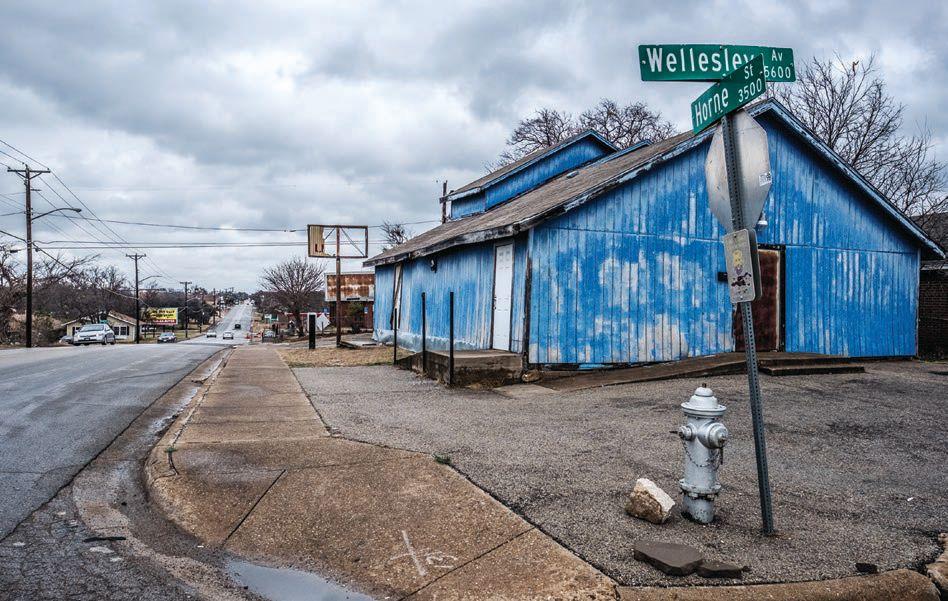

• Liveability: Improve parks; transportation network; make timely improvements to public infrastructure; work to reduce crime and code violations; establish an adult job training and workforce development program; establish a coalition to focus on reducing poverty; and develop programs that showcase Como’s heritage.
• Capacity building: Expand committee structure of the Como Neighborhood Advisory Council; develop public-private partnerships between the council and other organizations; and establish a nonprofit for fundraising on revitalization projects and programs.
Lake Como is the most likely lowest-hanging fruit in the neighborhood’s redevelopment. “It’s a natural resource we need to be developing around,” says Poole, whose development is on the Sunset Heights side of the lake. Says Tucker: “What happens on the east side of the lake could be a catalyst for something on the west side.”
Tucker wants to focus on Como’s northern Horne Street gateway, looking to reinvigorate, for example, the site of a long-closed fried chicken restaurant and a way to revive the historic Blue Bird blues joint, closed for years. “He’s just sitting on it,” Tucker says of the owner.
Bringing back the Blue Bird could do wonders for reviving the neighborhood’s historic and cultural spirit, Poole says.
Tucker’s also taken the lead on forming a new community development nonprofit in Como that will be responsible for fostering development of affordable housing and economic development in
the neighborhood. He wants to take deep dives into workforce development and incubating small business and entrepreneurs. “How do we connect people who live in Como with subcontracting opportunities going on in Como?” Tucker says. “Who are the small mom and pop shops thriving today, and how do we incubate them?”
The organization can facilitate affordable housing partnerships with investors, Tucker says. “We help lower the cost of doing business by bringing to bear some expertise,” he says. That could later turn into a fee-generation business for the organization, he said. “So much of what is driving Fort Worth is moving toward housing that is really not for the workforce,” he says. “Workforce housing is what’s missing. It’s going to be pushed to the perimeter, and the central city is not going to be affordable to the average Fort Worth resident.”
Tucker is drawing the board from other organizations already operating in the neighborhood; one-third of its representatives will be from outside the neighborhood. The organization already has about $100,000 in seed money, Tucker said.
Structurally, this kind of organization will be critical to the neighborhood, Poole says. “You have to have an organization that champions it,” Poole says. The city could make the organization, for one, responsible for managing publicly owned surplus property in Como, he says.
Tucker predicts Como will be “very appealing” to high-end developers in 20 years. “My hope would be that we’ve found a good mix of multifamily development that can preserve enough of the identity, have some appropriate senior facilities,” Tucker says. “Some appropriate townhome/condo communities would be a big part of what keeps Como here.”
He wants to see a strong nucleus of small businesses. “It would be wonderful to have something that draws people from all over the city.”

Fort Worth Magazine is the only magazine in the city that subscribers pay for, and we prove our worth month after month. Other magazines might claim higher circulation numbers, but they aren’t telling the whole story. Those magazines are free. The result? Many of those publications end up in the trash or in forgotten piles of mail. Our magazine carries our city’s namesake and only arrives in homes where people have requested us by that name. It’s worth every penny.
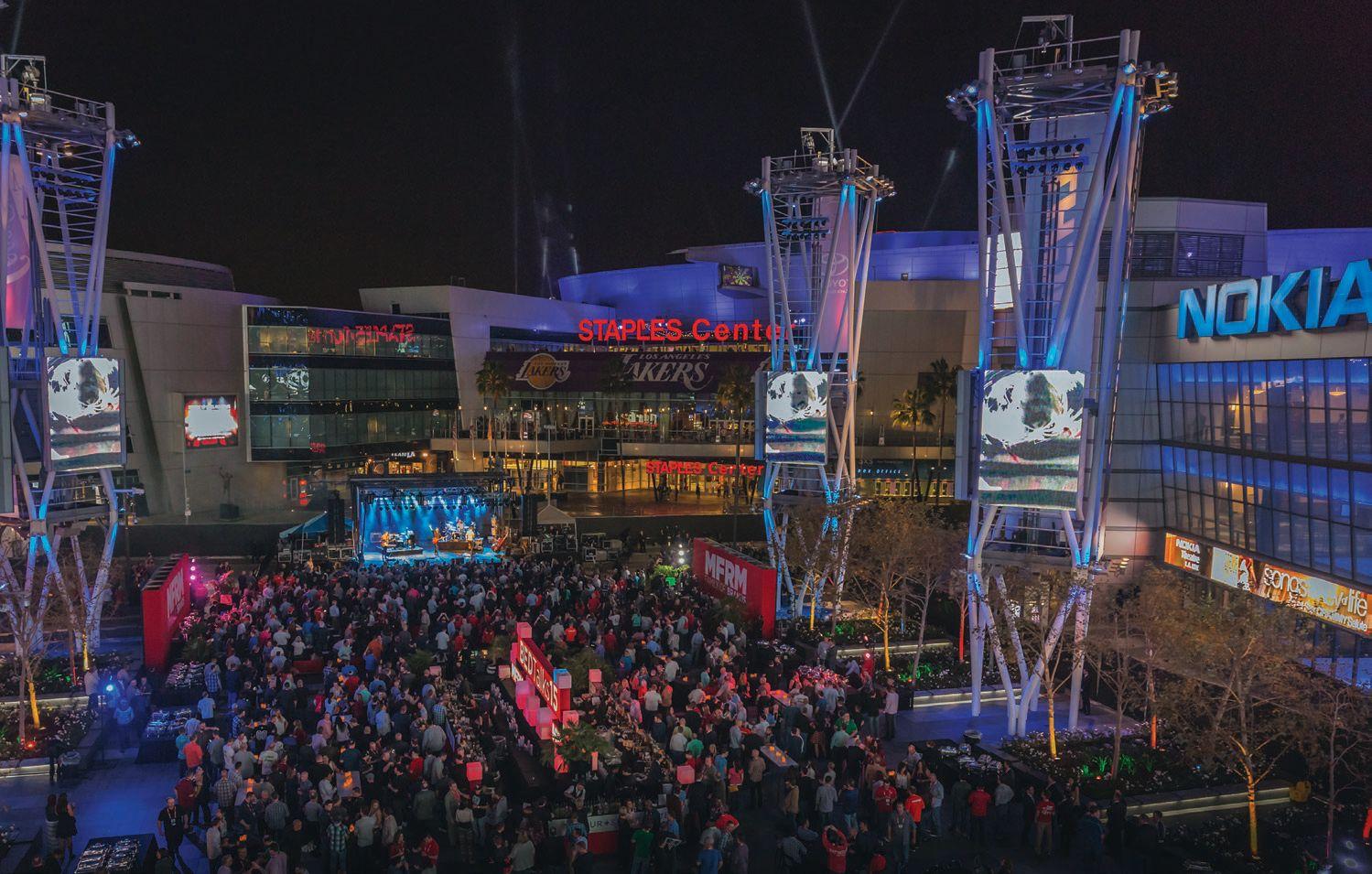


Conception to Completion
Looking for a turnkey solution? We have the package to meet your needs. Our team will work with you to provide all the production equipment, generators and labor for events of all sizes. From weddings and conferences, to rodeos and music festivals, Eagle AVL has you covered!




BY SCOTT NISHIMURA / PHOTOGRAPHY BY OLAF GROWALD
Will Northern has explored just about every nook in real estate, moving from rehabbing historic property in the Texas Hill Country with his father, to being a landman in college, doing assemblages for an oil and gas company, rehabbing houses, and building an agency doing residential and commercial deals and managing property. His Northern Realty Group in Fort Worth, started in 2010 as a “group of one,” today has 20 residential agents, six commercial, and two property managers and works from an office Northern opened in 2013 on West Magnolia Avenue. Northern, 34, who’s active in Mayor Betsy Price’s SteerFW young leaders’ initiative and recently was reappointed to the Fort Worth Zoning Commission by Price, likes the collaborative feel of the small agency. “I’m not interested in creating some behemoth company,” says Northern, a member of the Entrepreneurs’ Organization. “I’m not personally wired that way.”
Going South: My interest in real estate started with my dad and a partner of his acquiring property in a little town called San Saba, Texas. We own about a dozen commercial buildings around the town square, and I grew up learning how to lease commercial space and what’s involved in working with a small municipality and small businesses. He fell in love with the town, and he partnered up with [the Fort Worth investor] Don Jury and started buying property. My dad passed away several years ago, so now, my sister Elizabeth and I and Don manage the portfolio. We’re doing historic renovations. We just signed a lease to open a locally owned grocery store.
College jobs: In college, I started working as a landman and was negotiating oil and gas leases, running title and looking at maps. Then I got my real estate license. In 2008, I was laid off when the recession hit. I joined Brants Realtors; I was working seven days a week, making peanuts, living in my sister’s back house.
2010, a big year: It forced me to learn the business quickly and establish strong work ethic. And my luck started to change in 2010. I was working part-time for an oil and gas company, facilitating real estate transactions.
And I had at that time passed the two-year threshold to be able to get a broker’s license. Today, it’s four years. So, I got my broker’s license and started Northern Realty Group.
Assembly line: The oil and gas company had me doing unique transactions. That’s when urban drilling was big. I would try and find an interior urban infill site that a drill site could be on. Oftentimes, there wasn’t the perfect spot just sitting there, so you had to do an assemblage. And oftentimes, it required doing an assemblage of people’s homes, which got very emotional. It introduced me to zoning. There were transactions of
buying a house out of foreclosure. We would sever the minerals from the house, and we would sell the house. There were a couple of instances where the house was in bad shape and needed to be rehabbed, and so, guess who got to take over the rehab?
Building an agency: Eventually, I had friends, who got their real estate license, who hung their licenses with my broker’s license. That forced me to do all those things that a brokerage needs to do. Which introduces my mom, Karen Holcomb, to the scene. She had been the CFO of the Fort Worth Opera and had been helping me through the evenings, but she decided to join the Northern Realty Group adventure. And she legitimized the operation. We then graduated from the dining room table. I quit my job as a landman, and we went full-on real estate brokerage.
Growth goals: Today, I’m focusing on continuing to grow the company by recruiting experienced agents that are seeking a company that has a local feel. It’s important for me to maintain a size where I can still interact with agents. And we don’t charge franchise fees [to agents], so we can be really competitive when it comes to putting more money in an agent’s pocket.

A heart attack almost killed entrepreneur John Hill and forced him down a new path.
BY JASON FORREST Forrest Performance Group

John Hill’s run-toward-the-roar moment wasn’t organic. It was thrust on him by a devastating heart attack that totally changed the trajectory of his life.
Today, Hill is the founder and CEO of
The Good Contractors List, a Mansfieldbased company that curates contractors in the Fort Worth-Dallas area and guarantees their work up to $10,000. In the last seven years, Hill’s built his company into a $2 million business
widely respected in North Texas for its honesty, integrity and drive to remake the relationship between contractor and customer.
The first kernels of Hill’s idea for a website came back in 2005, when he was working for a yellow page company. He noticed contractors were often presenting themselves in dishonest ways in their ads, which birthed an idea that germinated for six years. What if he could create a service that weeded out the bad apples and guaranteed contractor honesty?
And then the heart attack came. In 2011, Hill suffered a catastrophic heart attack that damaged 40 percent of his heart. He had a pacemaker put in, and doctors told him he’d never do anything more than walk on a treadmill. Seven years later, Hill is the picture of health and now competes in bodybuilding competitions.
After Hill’s heart attack, his purpose to chase the idea he’d originally had six years earlier crystallized.
Sometimes the safest place to be is the one that feels the scariest. Lions — with their intimidating teeth and deafening roars — are designed to provoke fear. But the real danger lies with the smaller, quieter lionesses. In the animal kingdom, the lion’s job is to roar and send prey scattering away from the startling noise — right into the path of the waiting lionesses, the true hunters.
Likewise, humans sometimes have an instinctive desire to shy away from pursuits that look and sound scary. But often, running toward those challenges and conflicts is the best (or only) way to grow and meet our goals. In business, those who run from the deafening noise never reach their full potential.
After being faced with a massive health scare, it was time for Hill to run toward the roar.
“I realized I couldn’t be afraid anymore to do what I felt I was supposed to be doing,” Hill said.
So, Hill took a leap of faith. He left his job in direct mail selling and poured
“I realized I couldn’t be afraid anymore to do what I felt I was supposed to be doing.”
himself into his website idea just months after his heart attack. Suddenly he’d quit his job, had no money in the bank and just one more check coming in. That’s how strongly Hill felt about his new venture, even if he readily admits that he had no “entrepreneurial fantasies” at the time. He just wanted to bring the nobility back to the relationship between contractor and customer.
At first, Hill didn’t even have a website to present to contractors as he asked for initial investments. He merely had a drawing on a pad of paper of how the website would look. Nonetheless, Hill’s idea took off in short order, and soon contractors began flocking to his business. He started with just a handful, and today the site has more than 250 certified contractors.
“There’s so much wrong in the industry that homeowners go into every transaction with fear already,” Hill says. “So usually when a contractor messes up or they’re late — simple stuff that can be corrected easily — homeowners jump to conclusions and everything goes south. By being that guy in the middle that cares, they can hear us say, ‘You know, we’ve been working with these guys for quite a while now; they always do what they say they’re going to do; this just is a misunderstanding,’ it’s like the walls come down. Relationships are mended, and they can get jobs done. That’s how we stay in business. The idea is that we’re relationship-builders and show them that all of us in this business care about the end product. I don’t pick a contractor that doesn’t care.”
In the company’s eight years, Hill can only recall one moment when a bad contractor snuck through by giving a false
name. The contractor took money from nine families and didn’t finish any of the jobs, which presented Hill with a crisis moment. So, he acted swiftly; he paid out about $18,000 to those families to help cover costs, and he went to the news to out the contractor.
He didn’t do it for publicity. He did it to potentially save others from working with a contractor who wasn’t honoring contracts.
That’s the sort of integrity Hill’s created with The Good Contractors List. And as it continues to grow year over year, Hill’s main aim is to continue that growth while maintaining the sort of integrity that got the company where it is today.
“I’m most proud that 100 percent of the time we’ve fixed the issue and not dodged our responsibility once,” Hill says. “Even when we’ve lost money, we gained a reputation with contractors and with homeowners that used us. Some of our greatest fans are people who had a problem. I’m most proud that I’ve done what I’ve said I’m doing to do, and as we grow, I’m going to continue to do what I say I’m going to do. That will make me proud in the future.”
He’s preparing to turn the reins of the business over to a new managing partner he’s bringing in — he’ll still be the company’s voice in its radio ads — and he wants to devote time to being an inspirational speaker. “I just feel God said, ‘Do you want to stay or do you want to go?’” Hill says. “I stayed.”

Jason Forrest is the CEO and chief culture officer at Forrest Performance Group in Fort Worth. With a more than a decade of coaching and speaking experience, Jason is a leading authority in culture change and an expert at creating high-performance work cultures through complete training programs. He writes this column for each issue of FW Inc.

• Established and highly respected print and online digital media publication for over 18 years
• Multi product portfolio to sell - Fort Worth Magazine, FW Inc., Fort Worth HOME, Faces of Fort Worth, Dream Home and fwtx.com.
• Loyal passionate readership and social media followers
• No cap on earnings Contact Brian Ritenour at Brian.Ritenour@fwtx.com, or at 817-560-6111, today for more information.
You could sell this page.
Come join Panther City Media Group and be a part of the team behind Fort Worth Magazine, Fort Worth HOME and FW Inc. magazine
The state’s economy continues to move ahead, buoyed by higher oil prices, but faces headwinds in a tight labor supply and inflation, the Dallas Fed Bank says.
BY FW INC. STAFF
Texas’ economy continues to move ahead, propelled by oil prices above $60 per barrel, rising exports, and business optimism over the new federal tax law and economic strength, the Federal Reserve Bank of Dallas says in its latest Business Outlook Survey.
Texas employment growth “accelerated in the fourth quarter and was strong across most metros and industries,” the Fed Bank said.
“Headwinds include uncertainty about North American Free Trade Agreement renegotiations and a tight labor supply damping the potential for even stronger economic growth going forward,” the Fed Bank said.
Texas added jobs at a 2.4 percent rate
“The energy sector experienced the greatest 2017 growth (9 percent) among major industries after two years of decline due to the oil bust.”
– Dallas Fed Bank
in 2017, ranking No. 4 nationally after falling below the U.S. average in 2015 and 2016, the Fed Bank said. The Dallas Fed forecasts a 2.8 percent increase in 2018 Texas job growth.
Texas’ fourth-quarter job growth was “robust and far-reaching, spanning all major metros and industries and indicating economic strength beyond the temporary boost from Hurricane Harvey recovery efforts,” the Fed Bank said.

“Energy sector expansion moderated,” the Fed Bank said. “Still, the energy sector experienced the greatest 2017 growth (9 percent) among major industries after two years of decline due to the oil bust,” the Fed Bank said. “Job growth picked up notably in professional and business services in the fourth quarter and surged in leisure and hospitality and in construction — two sectors benefiting from hurricane recovery.”
In manufacturing, “new orders and general business activity indexes surged to 11-year highs in December,” the Fed Bank said. “The new orders index edged down in January but remained at its highest point since mid-2006, while the general business activity index strengthened further to its highest
level since late 2005.”
Texas firms’ optimism “picked up notably at year end,” the Fed Bank said. “In January, the service-sector company outlook index advanced for a second month, while the manufacturing sector company outlook index ticked down but remained elevated. Additionally, a sharp rise in firms’ capital spending plans was seen in the December [survey] and was sustained in the January readings.”
The Fed Bank said the December survey collection period covered the days that led up to and included the passage of the federal tax code revision.
Looking ahead, “a key question facing the Texas economy entering 2018 is the extent to which the state can add jobs when the labor market is very tight. The state unemployment rate is near its all-time low at 3.9 percent, and firms responding to [the survey] report that labor shortages are impairing their growth.”
A measure of Texas unemployment that includes “marginally attached” workers and those employed part time for economic reasons “has receded to near prerecession lows, suggesting slack in the broader labor market has largely been absorbed,” the Fed Bank said.
“The wages and benefits indexes remain above average, as an increasingly tight labor market continues to translate into wage inflation,” the Fed Bank said.
“Manufacturers are more bullish about future wages. Sixty percent of firms expect wages and benefits will be higher six months from now, pushing the future wages and benefits index to 56.9 in January, its second-highest reading since the series began in 2004 and more than 20 points above its postrecession average.”
Texas inflation “will likely continue rising,” the Fed Bank said. “The manufacturing survey’s six-months-ahead future selling prices index remained elevated in January after reaching a 10-year high in December. The service sector survey’s future selling prices index rose for the third month in January, also reaching a 10-year high.”
Texas auto insurance rates continue to climb, thanks to population growth and the state’s vulnerability to risk factors like hail. But the good news is premiums are cheaper over here on the western half of the Metroplex.
BY FW INC. STAFF
Texas auto insurance rates
continue to climb, with the state’s rising population and risk factors like hail, new data shows. “Car insurance rates are at an all-time high nationwide, and rates are rising especially fast in the Dallas/Fort Worth area,” The Zebra, an Austin-based comparison site, says.
Texas’ average annual car insurance premium was $1,809.62 in 2017, and Dallas’ was $1,867.10, The Zebra said. In Texas, premiums are nearly 3 percent higher than in 2015 and more than 44 percent higher than they were six years ago, The Zebra said.
“Texas in general is a state hit by a variety of severe weather events: hurricanes, hail, storms,” Adam Lyons, The Zebra’s CEO, says. “Additionally, many cities in
Texas are growing rapidly. The weather events, combined with more people on the road and increasing population density, mean more cars damaged by weather, more claims filed from accidents, therefore leading to increased premiums.”
The good news: Rates are cheaper over on the west side of the Metroplex, according to The Zebra’s data. The 10 most expensive zip codes and average annual premium in 2017:
• 76010 Arlington: $1,986
• 76002 Arlington: $1,946
• 76014 Arlington: $1,919
• 76011 Arlington: $1,911
• 76018 Arlington: $1,904
• 76015 Arlington: $1,898
• 76164 Fort Worth: $1,896
• 76119 Fort Worth: $1,895
• 76105 Fort Worth: $1,886
• 76106 Fort Worth: $1,880
Average annual premium from other selected zip codes:
• 76104 Fort Worth: $1,865
• 76107 Fort Worth: $1,819
• 76110 Fort Worth: $1,796
• 76109 Fort Worth: $1,781
• 76132 Fort Worth: $1,777
• 76063 Mansfield: $1,767
• 76092 Southlake: $1,740
• 76028 Burleson: $1,700
• 76126 Benbrook: $1,754
And the western Metroplex’s cheapest auto insurance rates:
• 76205 Denton: $1,639
• 76201 Denton: $1,645
• 76209 Denton: $1,658
• 76008 Aledo: $1,668
• 76085 Weatherford: $1,673
The Zebra, which bills itself as the largest car insurance comparison marketplace in the U.S., recently released the results of a national study exploring factors impacting car insurance rates. The firm says it used pricing data from the past six years and explored “millions of car insurance premiums” and risk factors such as state, ZIP code, age, gender, financial behaviors, and specific vehicles.
The Zebra ran its reports using a base risk profile of a 30-year-old single male driving a 2013 Honda Accord EX.



Fort Worth will launch its first activation at this year’s South by Southwest global collective of creatives in Austin.
BY BRANDOM GENGELBACH
President of Economic Development
Aunique partnership is showcasing the “unexpected Fort Worth” at the 31st annual South by Southwest (SXSW) Conference and Festivals in Austin.
The SXSW festival, with deep roots in music, has bloomed into a “destination for discovery” among the creative class in business, technology, smart cities and other fields.
SXSW draws upwards of 60,000 attendees, including participants and visitors from around the world. But via social media and advertising, it reaches millions searching for creative and professional growth.
On March 13-14, they are going to discover Fort Worth Now @ SXSW – a wealth of representatives and information from the Fort Worth Convention & Visitors Bureau, Fort Worth Chamber of Commerce, City of Fort Worth, Bell Helicopter, Lockheed Martin, Hillwood Properties, Niles City Sound, Firestone & Robertson Whiskey, Hear Fort Worth and Fort Worth Film Commission.
The goal: Increase Fort Worth visibility as a city of choice for visitors and a creative, educated workforce.
This is also a bold partnership that shows how our community can collaborate to show the city in a new way. Together, we’re showing and celebrating how Fort Worth is advancing in business, innovation, high-tech, arts, music and film – all within the 32,000-square-foot Fair Market venue, 1100 E. 5th St. in east Austin.
This is Fort Worth’s first official activation at SXSW, and it coincides with SXSW film, music and interactive tracks and the new SXSW Cities Summit. Mayor Betsy Price kicks off the event with a 15K bike ride on March 13 from Mellow Johnny’s to Fair Market Austin. The ride sold out in February.
We’re setting up this venue with a stage and ample seating for official SXSW Fort Worth-centric panel discussions, ranging from the future of travel apps and how cities can support hyperscale data storage, to steps for creating a venture capital ecosystem.
Panels will also look at the future of data with Facebook, Hillwood and investment partners, and nurturing music studios and Texas filmmakers. In between, we’ll have Shots of Knowledge with TX Whiskey and engage with guests interested in visiting or doing business in Fort Worth.
A dramatic LED screen will showcase scenes of the city. A lounge will allow business and civic leaders to network with visitors.
We will present interactive art from the Fort Worth photographer Rambo, day parties featuring our gifted local musicians, a Fort Worth makers market, and innovative exhibits from Lockheed Martin and Bell Helicopter, including Bell’s new interactive urban air taxi simulator, which was unveiled at the recent Consumer Electronics Show in Las Vegas.
Our SXSW initiative also occurs at a time when the chamber, FWCVB and city are launching historic new strategic plans. The chamber’s Fortify plan is deployed in many ways at SXSW:
• We’re working to increase external visibility among innovators, entrepreneurs and creatives as well as technology and Fortune 500s – a leading priority in light of findings in the city’s strategic plan research that discovered most Americans think we’re the 45th largest city instead of the 16th.
• Applying Fortify’s Business Recruitment and Expansion pillar, we’re showcasing our legacy aerospace companies and their innovations to attract vertical industry and other high-tech, engineering innovators and manufacturers.
• Guided by Fortify’s Entrepreneur/ Small Business pillar, we’re spotlighting local entrepreneurs in film, music and venture capital spaces to exemplify Fort Worth’s thriving startup ecosystem.
• To rev up the Talent Attraction pillar, we’re showcasing local music and the arts, local craft beer and local spirits to dispel misperceptions about Fort Worth and illustrate quality of place magnets for Gen Y, creatives and recent college grads.
Folks at SXSW say the event “proves that the most unexpected discoveries happen when diverse topics and people come together.” Fort Worth Now is showing why. For details, go to FortWorth.com/NOW.

Brandom Gengelbach is executive vice president of economic development for the Fort Worth Chamber of Commerce. He writes this column for each issue of FW Inc.
Close your next deal at one of these business-fr iendly bistros.

The Shops at Clearfork, 5212 Marathon Ave., 817.737.5212 Butcher Shop: 817.731.5360, bbbutchers.com/fortworth
B&B is Fort Worth’s only upscale steakhouse and traditional butcher shop specializing in high-quality meats and elevated customer service. Our menu includes 100 percent authentic, A5 certified Kobe beef, the finest Texas and Japanese Wagyu beef, as well as in-house 28-day and 55-day dry-aged USDA Prime beef – all hand cut in the Butcher Shop.

An exclusive, 12-course meat tasting and wine pairing in the Butcher Shop, guests have the rare opportunity to taste and compare the flavor components of our exclusive cellar cuts while learning about the meat and the dry-aging process. Plus, wine enthusiasts will enjoy a handpicked variety masterfully paired with each cut by the sommelier.

The lunch menu, which is a delightful recess from the dinner menu, includes hamburgers, meat-driven pastas, pizzas, salads and sandwiches along with noteworthy dishes like a Bone-In Chopped Steak and Wagyu Skirt Steak Frites. Not in the mood for meat? Our lunch and dinner menus offer fresh and noteworthy seafood dishes along with vegetarian options.
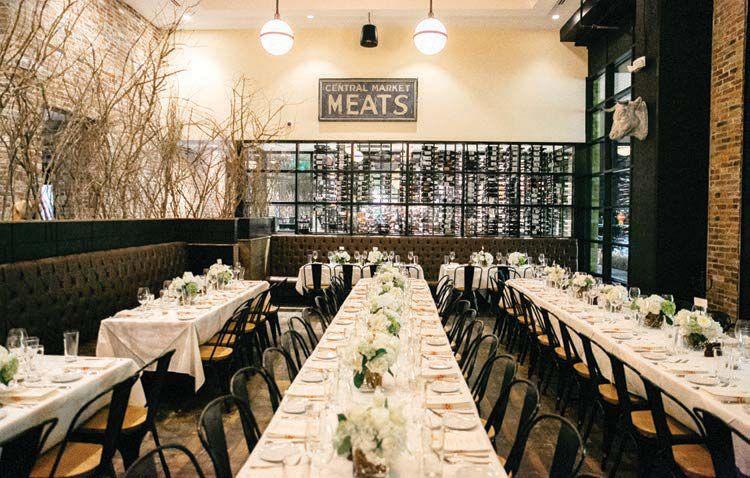
We have five unique and premier private dining spaces that are ideal for your next celebration or office gathering. Our private events coordinator will take personal care of your custom-printed menus, specially tailored wine pairings, floral decoration, musical entertainment and more.
First demands drive the ultimate results. Why does this happen?
BY LAURA FRASE
Of Counsel, Litigation Practice Group Cantey Hanger LLP
The
first
number placed on the negotiation table subliminally pulls counteroffers close to that number. It doesn’t matter whether the first number is reasonable, outrageous or irrelevant.
In the art of negotiation, the first demand drives the settlement result. Study after study has proven this. Why and how does this happen?
This brain trickery (technically a cognitive bias) is known as the “Anchoring Effect.” The first number placed on the negotiation table subliminally pulls counteroffers close to that number. It doesn’t matter whether the first number is reasonable, outrageous or totally irrelevant to the issues being discussed — that first demand keeps dragging us inexorably toward it.
The Anchoring Effect is not just limited to numbers. Studies have shown that we often give greater analytical weight and credibility to the initial facts or information we learn simply because it is the first. The now-skewed evaluation
can lead to miscalculations, missed negotiation opportunities and, potentially, impasse.
How does this phenomenon work? Some scholars argue that the anchor causes us to inadequately adjust our negotiation moves or plan far enough away from the starting point the anchor implies; the anchor has a greater pull on the final result than is warranted. Others suggest that the anchor “primes” or subconsciously suggests the correct answer or course of action. No matter how they work, anchors are powerful and pervasive.
Demonstrating the influence (and insidiousness) of the Anchoring Effect, renowned psychologists Daniel Kahneman and Amos Tversky created a “Wheel of Fortune” experiment several decades ago. A spinning wheel of seemingly random numbers was rigged so that the wheel would only land on the numbers 10 or 65. Participants then spun the wheel, got their “random” number and were then asked the percentage of African nations that were members of the United Nations. On average, those who got the number 10 guessed a lower percentage of countries than those who got the number 65. The numbers had no relationship to the percentage of African-member countries in the U.N., yet the irrelevant numbers impacted the participants’ choices.
I conducted a similar experiment with my students at UNT Dallas College of Law. I gave them a piece of paper and asked them to write the amount they
would be willing to spend for a meal at a restaurant. What they didn’t know was that one-half of the notes listed the name of the restaurant as Bistro 17 and the other half, Bistro 97. Those with the name Bistro 17, on average, wrote a smaller amount they would spend than those who had Bistro 97; they were anchored to the irrelevant name of the restaurant.
Anchors are everywhere: MSRP for car sales, eBay minimum bids, the first idea mentioned in a meeting, and inventory valuations, just to name a few. They influence us whether they are explicit, implied or presented as part of unrelated information. Anchors impact negotiations even when we know they are irrelevant or so extreme as to be unbelievable. The more memorable the anchor, the more formidable it becomes.
So how do we counter the Anchoring Effect? Ignoring anchors does not lessen their impact. Talking about them (such as explaining why the number is unreasonable) heightens the effect. The best option is to replace the anchoring number or information with our own well-researched, objective reference point. Link the new anchor to the story we want to tell. Then, drive discussions toward that new anchor, compelling our opponent to embrace our replaced anchor rather than their own.
This is hard stuff. Being alert is key to fighting against the tug of the first number or fragment of information. Replace the other side’s anchor with your own, and you will be more successful in negotiations.

Close your next deal at one of these business-friendly bistros.




Enchiladas Ole 901 North Sylvania Ave., 817.984.1360, enchiladasole.com
A healthy twist on TEX-MEX, Enchiladas Ole doesn’t serve leftovers, and our lovingly prepared cuisine comes from our familia to yours with no preservatives, no additives, and no lard! We prepare every meal with fresh, authentic ingredients daily, "the way I remember making enchiladas with my mother." We use healthy spices in every dish, including garlic, curry, and turmeric. To make the tortillas flexible, grill our vegetables, and refry our beans, we only use olive oil and water. It's no wonder why our food has been labeled by numerous major food critics as the “cleanest Mexican food around.” We prepare every meal with fresh, authentic ingredients daily.
Fort Worth City Council member, long wary of developers, says that’s exactly where she should be.
BY SCOTT NISHIMURA
It’s no secret that Fort Worth City Council member Kelly Allen Gray is skeptical of developers. The YMCA is underway on building a new branch in her district, but years off its original hoped-for schedule after Gray blocked the funding mechanism for the land purchase – a deal to sell the old branch for an apartment development that Gray thought carried too much risk of going substandard. “I am very protective,” she says during a Sunday afternoon drive around her Southeast Fort Worth District 8, chock-full of opportunity for redevelopment but also known for bloody fights over such proposals. “So, because of that, I have this reputation.” She uses Dollar General and Family Dollar as examples of proposals she often sees but can’t get excited about. “My people deserve more, so if that’s the best you have to offer me, don’t come see me.”
What should be here? “If you look at District 8 in its entirety, and that’s all the way down I-35, there’s lots of land available for the right type of development. When you’re looking inside the loop, what has to
"I'm very protective. So because of that, I have this reputation."
- City council member Kelly Allen Gray
be developed is more community-friendly development.”
What does community mean? “Small businesses. Maybe some midsized retailers. It just has to make sense. People who live in Southeast Fort Worth buy goods and services just like anybody else. They are expecting quality goods and services. In District 8, we have lots of sit-down mom and pop restaurants that are amazing, and the community supports them. What we do not have is a chain sit-down restaurant. When we are in community meetings and we are talking about economic development, that is the thing that is said over and over again.”
Renaissance Square has chain restaurants, but that’s not what you’re talking about. “They’re fast-food restaurants. I’m talking IHOP or Applebee’s or Chili’s or Olive Garden or Red Lobster. Any of those
types of restaurants would do well. I just know one would do well to be the kickstart for two, to be the kick-start for three.”
Where could they go? “You could look at Evans and Rosedale. You could look at Renaissance Square. You could look along East Lancaster. You could look at Texas Wesleyan. You name it.”
On a developer’s proposal to turn Evans-Rosedale’s Pinkston mortuary into an arthouse cinema (See story, page 44). “I think it’ll be a great asset if they can truly do what they’re saying.”
Filling the Texas Wesleyan-Evans-Rosedale-Renaissance Heights triangle. “I think you have to have that next big first where someone steps out. It doesn’t necessarily have to be a big-name retailer. Maybe it’s just the next Brewed or Avoca. You look at Texas Wesleyan and the forgivable loan we gave to fix up the storefronts. [The university drew restaurateur Ben Merritt with a biscuits-and-burgers concept he’ll open this spring.] And that drives more interest.”
On why a proposed hotel wasn’t necessarily the best use for Evans-Rosedale; the city is hiring a master developer to plan lots the city owns there. “They didn’t go away, but we said, is that really the highest and best use? And it being in the urban village, it has to have some particular building concepts, and I think the developer just wasn’t quite ready for that piece.”
Berry/Riverside intersection, the next big thing until its developer bought the nearby Masonic Home site and facilitated its development into Renaissance Heights. “I think what you’ll see as Renaissance Heights builds out, the focus will shift back to Berry and Riverside,” which is in a tax increment finance district and falls beneath a city Neighborhood Empowerment Zone that offers fee waivers. “It has all the economic incentive tools we have available in our tool shed.”
Close your next deal at one of these business-fr iendly bistros.

1509 S. University Drive, 817.336.0311 olsouthpancakehouse.com
Ol’ South Pancake House is where the entire family can enjoy Southern homestyle cooking at any time of the day or night. Signature dishes have kept our guests coming back for more, with our most popular World Famous German Pancakes being served over 40,000 times each year to our loyal customers.

829 Lamar Blvd. East, Arlington, 817.265.9174 piccolomondo.com
Piccolo Mondo Italian Restaurant was established over 34 years ago and is known as one of the most popular and famous Italian restaurants in the metroplex. Appealing and satisfying Italian continental fare features shellfish, salmon, veal, gnocchi & pasta. The restaurant also has a piano bar and a banquet room.

704 W Magnolia Ave., 817.335.2041, pariscoffeeshop.net
Welcome to the Famous Paris Coffee Shop, “Historic Fort Worth Watering Hole,” serving customers since 1926. Paris Coffee Shop is historic and caters to the common Texas folk and tourists who are looking for a good hometown meal and atmosphere. Our menu offers breakfast, lunch and fabulous desserts including fruit and deee-li-cious meringue pies.

813 Main St., 817.348.0080, ruthschris.com
Do business across the dinner table, not the conference table. Whether it’s an intimate dinner for a small group or a reception for hundreds, there will be no compromises. Just how Ruth would have wanted it. Contact our Sales Manager, Kenzie Branum, to learn about how private dining and catering are done at Ruth’s.
Congress’ cut in corporate taxes got all the press. But a provision for shareholders, partners, and members of entities like S corporations and LLCs will have far greater impact on entrepreneurs.
BY MICHAEL A. FEE
President, Michael
P.C.
One of the more publicized provisions of the federal Tax Cuts and Jobs Act signed into law in December was the reduction in tax rates on C corporation net earnings to a flat rate 21 percent from an overall average 35 percent. Since its passage, this provision has been credited with promoting numerous economic benefits.
While those benefits are understandable, C corporations comprise only a percentage of the business returns filed. Based upon Internal Revenue Service data, roughly 6.5 million C corporation returns are filed annually.
However, over 33 million returns are filed by “pass-through” entities: S corporations, partnerships, limited liability companies and individual business activities.
These are the entities that create jobs and are the entities of choice of entrepreneurs. The Tax Cuts and Jobs Act also created tax benefits for these “pass-through” entities. The purpose of this article is to address one of those provisions: the “20 percent passthrough deduction” under the new Section 199A of the Internal Revenue Code.
The 20 percent pass-through deduction is intended to provide a form of tax relief to
business entities that do not pay tax at the entity level, but “pass through” income to the business owners for reporting on their individual return.
Explaining the concept is where any simplicity ends. This provision applies to the taxpayer who is an S corporation shareholder, partnership partner, or a member of a multi-member or single-member LLC.
While this deduction on pass-through income provides tax relief, this provision and its application is extremely complex and may not be available to all individuals in all businesses at the 20 percent level. To reap the deduction related to this provision, the taxpayer must navigate a myriad of limitations, thresholds and caps.
Questions to be answered at the entity and individual level include:
• Does the business qualify as a “qualified small business”?
• What is the qualified business income of the entity?
• What wages were paid by the entity to the non-owner?
• What is the amount of qualified property applicable to the entity?
• What is the combined qualified business income of the individual taxpayer?
• What is the income of the taxpayer? The provision has a phase-out between $315,000 and $415,000 of income for individuals filing a married-filing joint return. Those thresholds are $107,500 and $207,500 for single individuals.
However, just because one’s income may exceed those thresholds, they may still be able to avail themselves of a deduction. Extenuating provisions take into account the nature of the type of business it is, the compensation paid within the entity and a capital factor considering the amount of fixed assets of the entity, the amount of depreciation claimed on those assets.
To have the information necessary to perform the complex calculations, S corporations and partnerships will be adding information to their K-1s. Business owners will want to evaluate compensation structures of business owners and staff. During the period of this provision, which begins in 2018 and extends through 2025, business owners may want to consider the applicable depreciation method they use. This will not necessarily be a policy consideration but an annual decision based upon the facts and circumstances by year. This deduction will not be applied in computing adjusted gross income but in arriving at taxable income. It is computed after application of passive activity loss rules. It will not reduce any self-employment tax and cannot be used to create a net operating loss. Any portion of this deduction unused in the current year will be carried over to subsequent years. It cannot be carried back.
As with many new tax provisions, there are issues associated that require further clarification and are sure to be subject to future regulation.
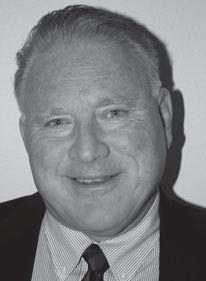




When you learn how to manage your emotions – you’ll be in a much better position to navigate stressful, high-stakes interactions.
BY SUSAN STEINBRECHER
Steinbrecher and Associates
The inability to communicate well and build high levels of trust with one another in the workplace is a skill that directly affects the bottom line.
Poor communication can cost businesses dearly, resulting in lost sales, reduced productivity, high employee turnover, and low morale. This means business owners and leaders need to model level-headedness and strive to be a source of calm reassurance and confidence.
Expressing emotion in a way that will inspire team members through empathy, respect and compassion, while offering people timely, candid and courageous feedback, can transform company culture and bring about long-term positive change. However, very few people are trained to focus on these abilities throughout their careers. We’ve been rewarded for results,
not our emotional skills.
The truth is, a lack of emotional selfmanagement can seriously jeopardize both your business and personal relationships. The association between emotional regulation and effective leadership behavior has been well-established in scientific literature. When you are emotionally “hijacked” or in a particularly emotional state, there are critical disturbances in the way you process information and the way you retain it.
With practice, you can use your emotion to maximize and inspire others and transform high-stakes, often stressful conversations into a more collaborative outcome.
The goal is to be emotionally aware so that your emotions are working for you, not against you. We call this state of equi-
librium “meaningful alignment.” Meaningful alignment refers to any conversation involving two or more people where collaboration and deep understanding are vital to a successful outcome.
Here are a few ways to help you gain emotional composure in the heat of the moment:
• Pause – and take a breath. Long, deep breaths are helpful – but likely not possible if the situation has already escalated. However, focusing on your breath takes you out of your head and into the body. If you stay in the head, you are likely to let your emotions get the best of you, as you will be operating out of the amygdala, the brain’s “fight or flight center.”
• Seek to understand without judgment. Ask more questions. When you ask questions, the attention on you is averted – and the focus is on the other person. That buys you some time to take that deep breath and calm down. Attempting to understand the other person’s viewpoint will also help diffuse the situation as you are showing a genuine desire to hear what the other person has to say.
• Delay the conversation, if necessary. Recognize that you may not always be able to manage your feelings when the stakes are high. Consider delaying the conversation rather than allowing spontaneous feelings to influence your thoughts – and hence your words and behaviors. Rescheduling also allows all parties involved some time to reset and potentially refresh their perspective.













































It’s
time to propel yourself. How? Confront your self-limiting beliefs.
BY TONY FORD CEO Success Fort Worth
Over the past few years, much has been written about “discovering the why behind what we do.” And while I believe that understanding our motivations is core to what inspires us to persevere in the face of opposition, I also believe there’s an opposite force at work that’s equally as powerful: self-limiting beliefs.
President Theodore Roosevelt framed this concept very eloquently when he said: “If you could kick the person in the pants responsible for most of your troubles, you wouldn’t sit for a month.”
So why are we so often responsible for “kicking ourselves in the pants,” killing our dreams, and focusing on what could go wrong instead of what may go right?

and behaviors to allow our best ideas and motivations to drive us forward in life?
Here is what I believe:
• Get real: Before we can determine just how much negative thinking we are prone to, we have to admit to ourselves that it is real and really slowing us down. President James Garfield once said, “The truth will set you free, but first it will make you miserable.” Getting our heads around the fact that not acknowledging the truth about our own negativity is already making us miserable can help kick-start the process toward real selfawareness.
In my experience as a serial entrepreneur and now as an executive coach, I am more convinced than ever that we are conditioned from birth to find the negative in almost every situation. Allow me to illustrate:
Your child is playing basketball for the first time in a different town. You arrive there an hour before the game but don’t know where the high school gym is located. Your GPS is on the fritz, so you pull into a convenience store and ask the person behind the counter for directions. They say, “Just go down Main Street for three blocks and turn left at the red light.”
Think about that. Why is the light always red? Have you ever had someone tell you, “Go down to the green light and turn”? No? How come? Obviously, the light is green sometimes, or traffic would never move through it.
The answer is that we are trained to mainly pay attention to the things that stop us. Things like red lights, criticism, pain, anger, conflict, loss, fatigue, and on and on.
So, how can we reverse some of these ingrained negative perceptions
• Get over it: Recognizing that we harbor many kinds of self-limiting beliefs takes a lot of courage. Partly because it feels like failure and often because we think no one else is noticing. But once we step out of our comfort zone and begin taking ownership of the things that are holding us back, we come to realize that we are the last to know what others already see about us. They have just not found an acceptable way to make us aware of it.
• Get help: Self-awareness will only take us so far in finding practical solutions and work-arounds for overcoming our self-limiting beliefs. This is one of the main reasons I chose to gain expertise as a professional executive coach – to walk alongside of other leaders and entrepreneurs who want to accelerate their personal and professional growth. As these smart, talented and motivated leaders uncover issues and behaviors that are sabotaging their effectiveness, new opportunities and outcomes literally flood into their lives. The results of these collaborations between coach and client ripple through their family relationships, businesses and the community.
• Get going: Before we can get anywhere, we have to start somewhere. And we should not be confused about
who has to make the first move – it is always us. If we lead an organization, we often find ourselves reacting to the problems and opportunities others bring to us. But when it comes to confronting our own self-limiting beliefs, we must take the initiative. Again, finding a coach, mentor, pastor, counselor or friend who will provide a safe, nonjudgmental setting for us to explore our fears and perceived limitations is a wise way to get going.
• Get out there: Once we identify some of the issues, ideas and habits that have been holding us back, we must act on our new learning. The excitement, freedom and enthusiasm we feel as we let go and get going is infectious. It will cause the people around us to notice a very positive change that will encourage them to follow our example. In many ways, it is a new start for getting what we really want out of life – and it builds its own momentum as we share it with others.
Taking all of these things into consideration, here is my question to you: What is holding you back?
If already you know, allow me to encourage you to step boldly into a process that will help you move past it into a more positive and productive life.
If you don’t know, please contact me, and I will help you find the right person to help figure it out.
Either way, remember that there are a lot of folks praying and cheering for your success – including me!
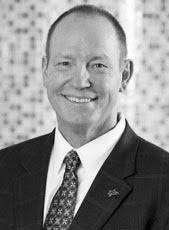
Tony Ford is an awardwinning entrepreneur with a history of starting and growing industry-leading companies. He now helps other businesses grow and sell their companies and was program director for the 2017 and 2018 FW Inc. Entrepreneur of Excellence awards program. He writes this column for each issue of FW Inc. tford@tonyford.com










HealthWave has helped men - of all ages - rediscover the passion of their youth through a revolutionary ED treatment that utilizes acoustic pulse technology. With clinical studies showing results lasting up to 2 years after only 6 treatments*, they can help you. No surgery. No pills. No


An earwax dissolver, home charger for electric cars, and topical treatment for psoriasis hit Amazon.
Dual Home Charger, the electric vehicle market’s first dual residential charger, on Indiegogo.
The charger costs $599 for a single connector and $699 for a dual connector. On Indiegogo, Revitalize is offering a $610 package that includes a Dual Home Charger with dual cable, cable holder, Rev+ T-shirt, one Go Green sticker, and a personal thank you from Morgan.
“REV+ will be the solution that provides the charging needs for one or two electric vehicle homes,” Morgan says.
“With the price of electric cars decreasing, you will start to see homes with two electric cars. Our dual charger has power of 12 kWh and 50 Amps, providing a big punch in a short period of time.”


came available on Amazon and at CVS stores, Eosera says. What’s new for 2018: The company intends to get into more retailers and launch an entire ear care line, Eosera says. Earwax MD is distributed by medical supply distributors, online at Amazon, EarcareMD.com and cvs.com, and at CVS. The company says it “anticipates much larger distribution across major U.S. retailers later in 2018.”



Some of Fort Worth’s startups are moving into their next gear. Updates on some of the startups FW Inc. has written about:
Eosera’s Earwax MD Eosera, a Fort Worth biotech company founded by former Alcon vets Elyse Dickerson and Joe Griffin, in 2017 debuted its ear cleaning solution Earwax MD. Sales achieved “exponential growth” as the product be-
“Given that commercialization truly began to take full force in the second half of 2017, we are very satisfied with the commercialization of our first product to date,” Dickerson says. “We are now working with key retailers that want to grow their ear care category by adding our premium line of ear care solutions.”
new Rev+ Dual Home Charger Revitalize, headed by entrepreneur Edward Morgan, in January introduced its Rev+
Rev+ users can manage their electric vehicle charging experience via Bluetooth, Wi-Fi, and integrated web server.
Nuvothera’s Prosoria Nuvothera in February launched sales of its Prosoria, a nonprescription treatment for relieving and helping prevent the symptoms of psoriasis, to the public. Prosoria is available at prosoria.com and Amazon.
“Psoriasis is the world’s largest autoimmune disease, affecting more than 8 million people in the U.S. and 125 million worldwide,” Art Clapp, Nuvothera’s CEO, says. “Yet research shows that 87.8 percent of patients and 98.0 percent of dermatologists feel there is a strong or moderate need for better psoriasis therapies.”
The treatment system consists of four products. It includes three pump bottles of gels and a cream for the daily system, plus a tube of Prosoria Rapid Repair Exfoliating Ointment for more intensive night care.
Prosoria is designed to hydrate and condition skin; treat and relieve scaling, flaking, itching, redness, and irritation; moisturize and exfoliate skin; and restore skin’s appearance and improve its texture.






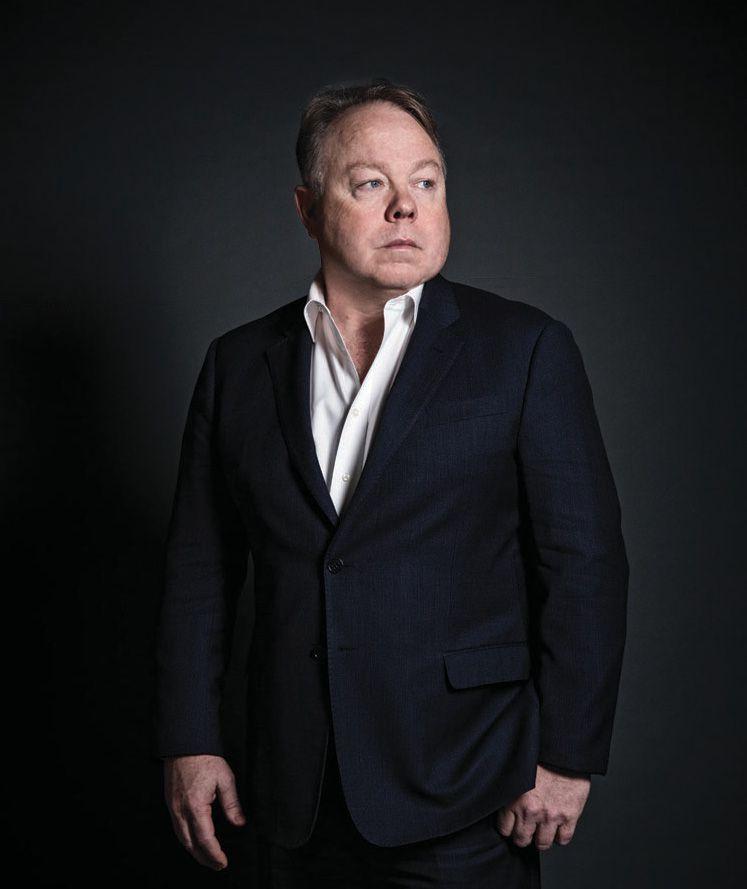

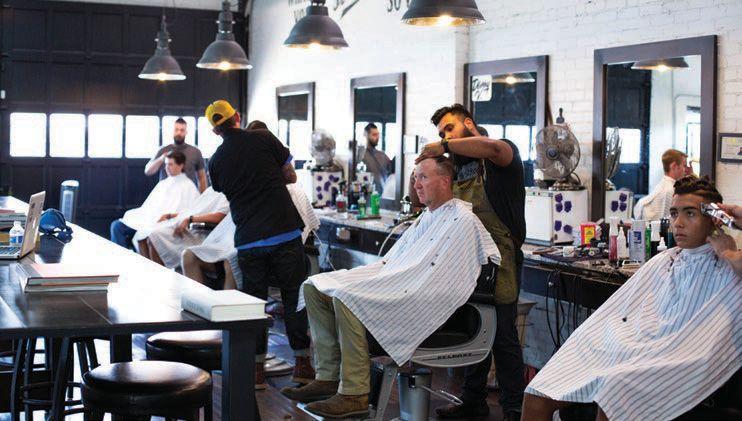
From breakfast with his teenager to meeting with donors, moving campus expansion plans forward, and engaging with students, Texas Wesleyan president Fred Slabach packs in a full day.
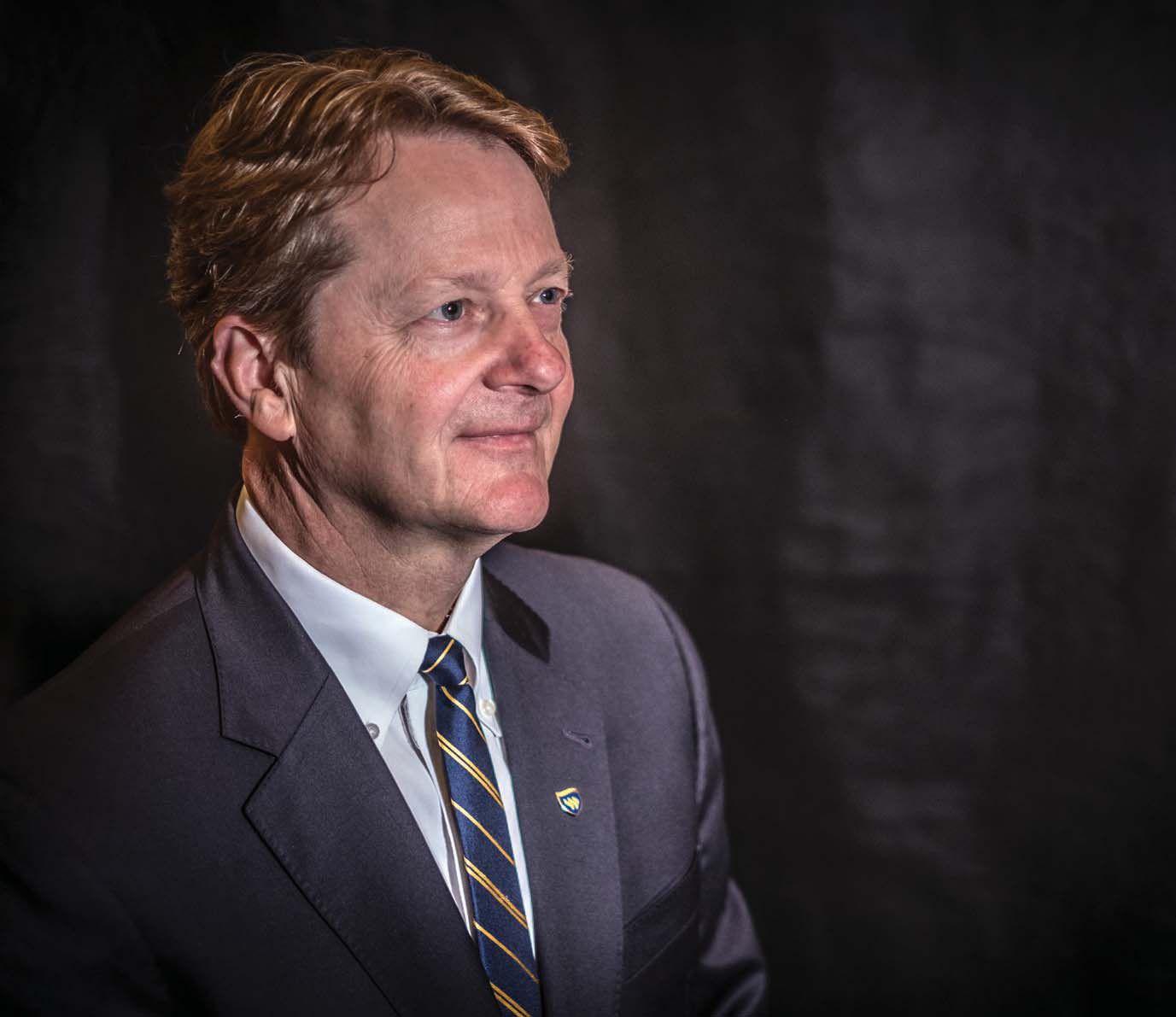
5:45 a.m. Alarm goes off. I head to the treadmill upstairs to jumpstart my day.
7 a.m. Breakfast with my 13- year-old daughter. We discuss summer plans. She tested into the Duke TIP summer program for creative writing, a talent she gets from her mother. This is my favorite time of the day.
8:15 a.m. After dropping my daughter off at school, I head to campus and check in with my office staff.
9:30 a.m. I’m off to meet with Lou Martin, chair of our University

Center campaign, at her home. The Martin University Center will be a $19 million, 44,000-square-foot student center in the heart of our campus. We’re tying up loose ends and discussing the groundbreaking. I thank her for her generous support.
11 a.m. Back on campus, I check emails again before heading to a classroom to present the Engaging Educator Award. This is when I “pop in” on professors at the beginning of class with popcorn to present the award. One of the things I love most about working
at Texas Wesleyan is interacting with our students and faculty.
11:45 a.m. More emails including a discussion with Tim Carter, chair of the board, about our upcoming trustees meeting and then to lunch with our Student Government Association president. This is one way I stay up with issues impacting our students. We go to Colonial (a welcome break from the dining hall for her).
1:06 p.m. I’m emailing the city about improvements to our baseball field at
the second successful online program we started this year, the other the online MBA.
3:19 p.m. I get a text from one of my twin sons. He is applying for an internship at a Fortune 500 company in Fort Worth this summer and wants to set up a practice phone interview with me. His brother will work at our summer Chemistry Camp again. Both boys attend Ole Miss.
Sycamore Park, and Tobi Jackson of the FWISD board calls to discuss our potential partnership for a football and soccer field on campus.
1:42 p.m. As I head to my next meeting, I stop to say hello to a campus tour group. I notice a tall student and wonder if Coach Joe has seen this guy. He looks like he’d make a great receiver. I make a note to follow up.
2 p.m. The Provost’s Council updates me on our new Family Nurse Practitioner Program. We exceeded our enrollment goal. It’s
3:30 p.m. Planning meeting with co-chairs of my President’s Advisory Task Force. This group comprises some of Fort Worth’s top leaders. I’m extremely proud of their commitment to revitalize southeast Fort Worth and for attracting new retail to the area, like Ben Merritt’s new restaurant.
5:15 p.m. Reception with alumni and donors and then home for dinner with my wife, Melany, and our daughter. Melany is a fantastic cook, as well as a Pulitzer Prizenominated author, and spoils us with delicious, Blue Zonesapproved meals.
7:30 p.m. Back on campus to catch tonight’s basketball games.
9 p.m. Home and time to relax.
10:15 p.m. Lights out.

Think with Krys Boyd on KERA 90.1, features indepth interviews on topics ranging from history, politics, and technology to food and wine, travel and entertainment. Go for the compelling guests. Go for the engaging conversation. Go to listen, learn, engage and think. Go Public.

THINK WITH KRYS BOYD
MONDAY-THURSDAY, 12-2 PM, FRIDAY, 1-2 PM


























